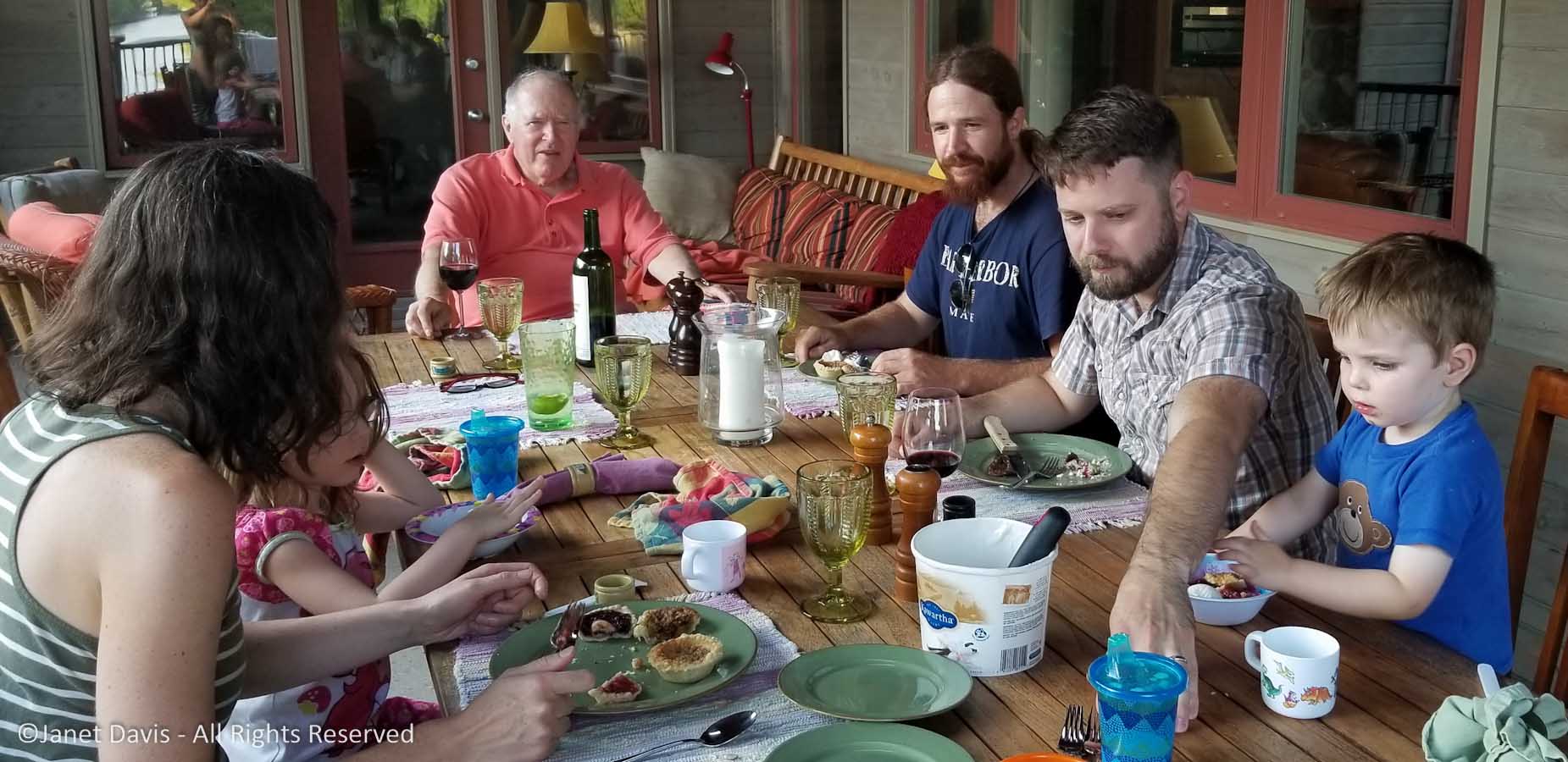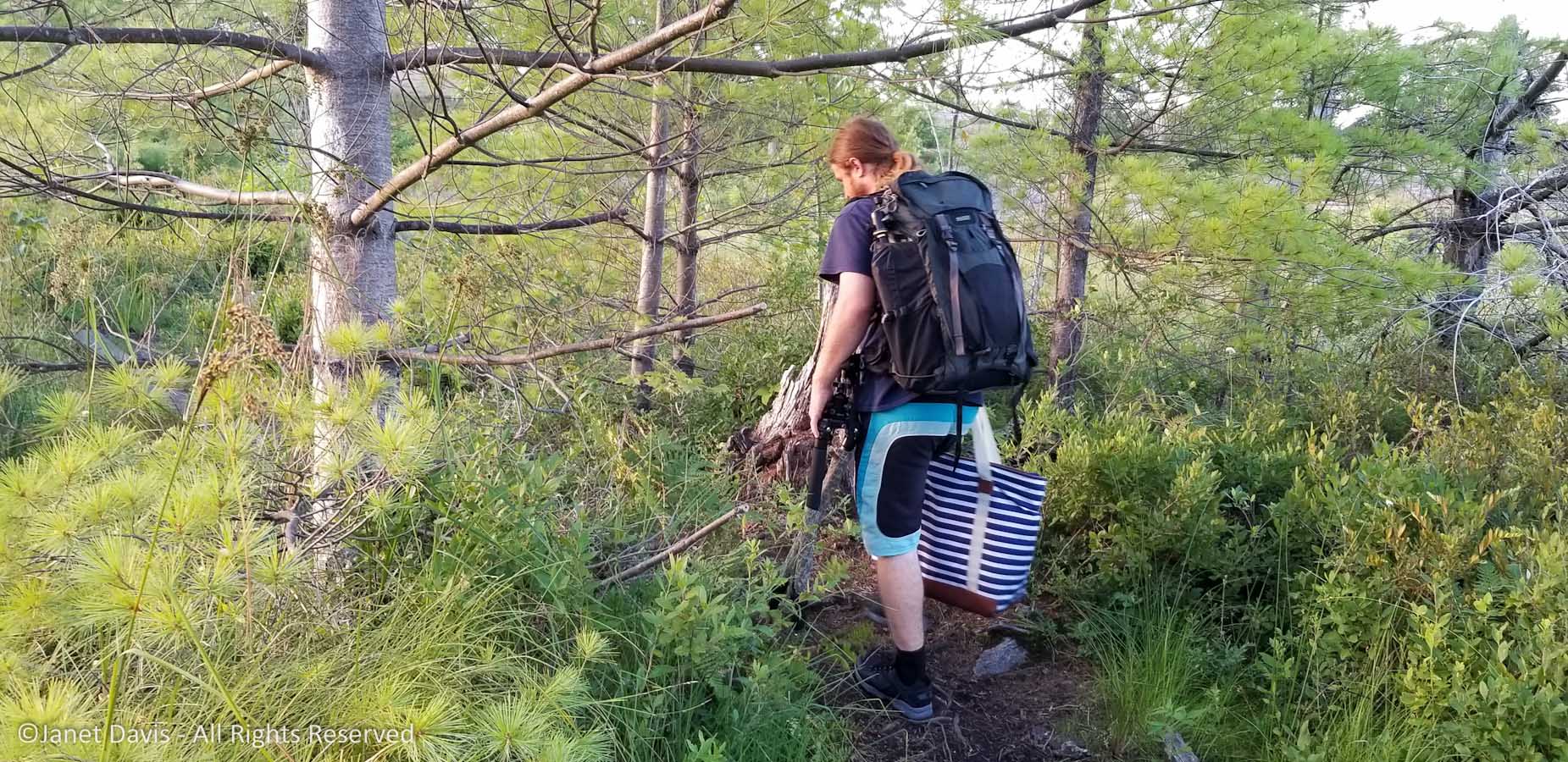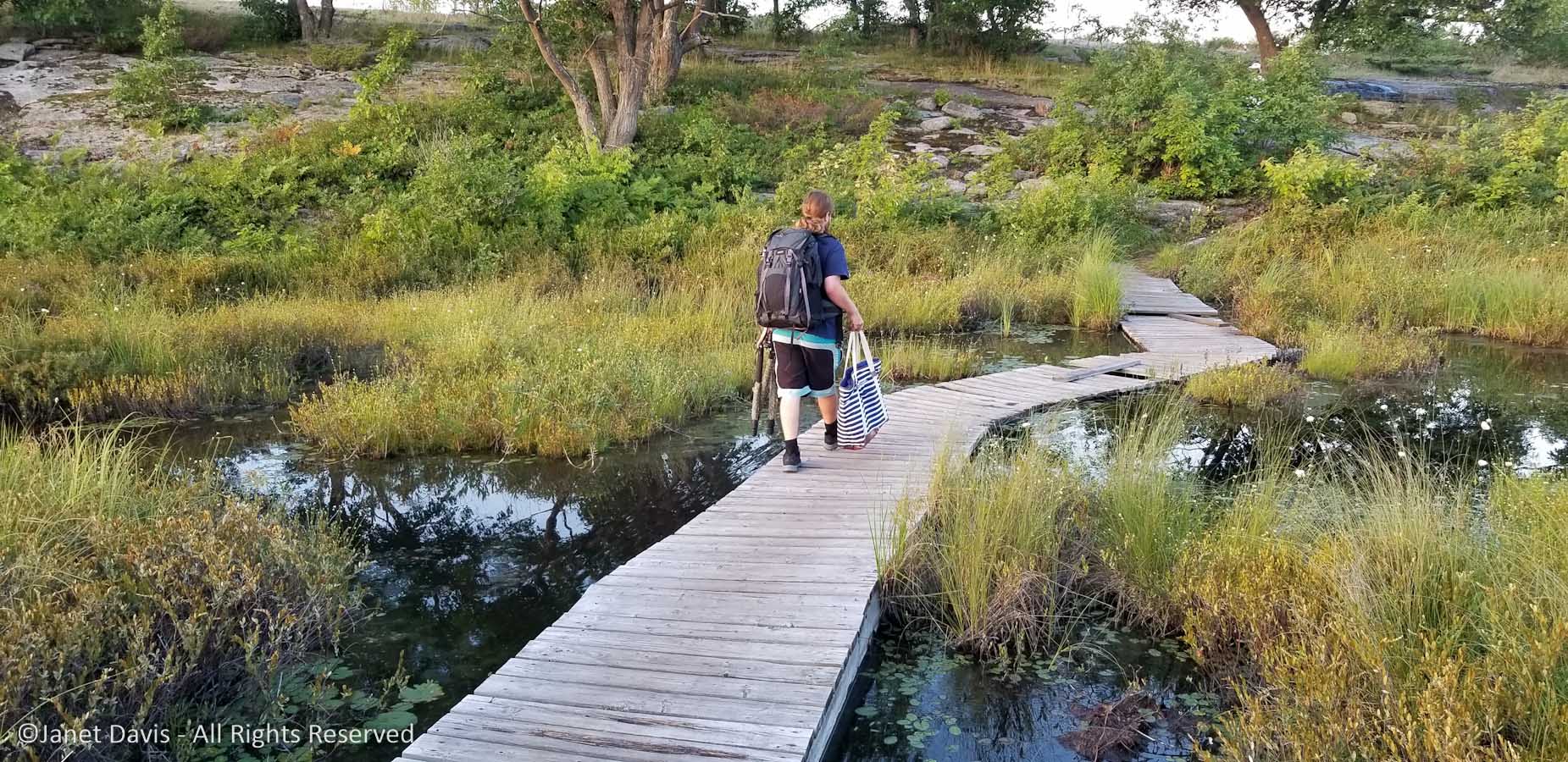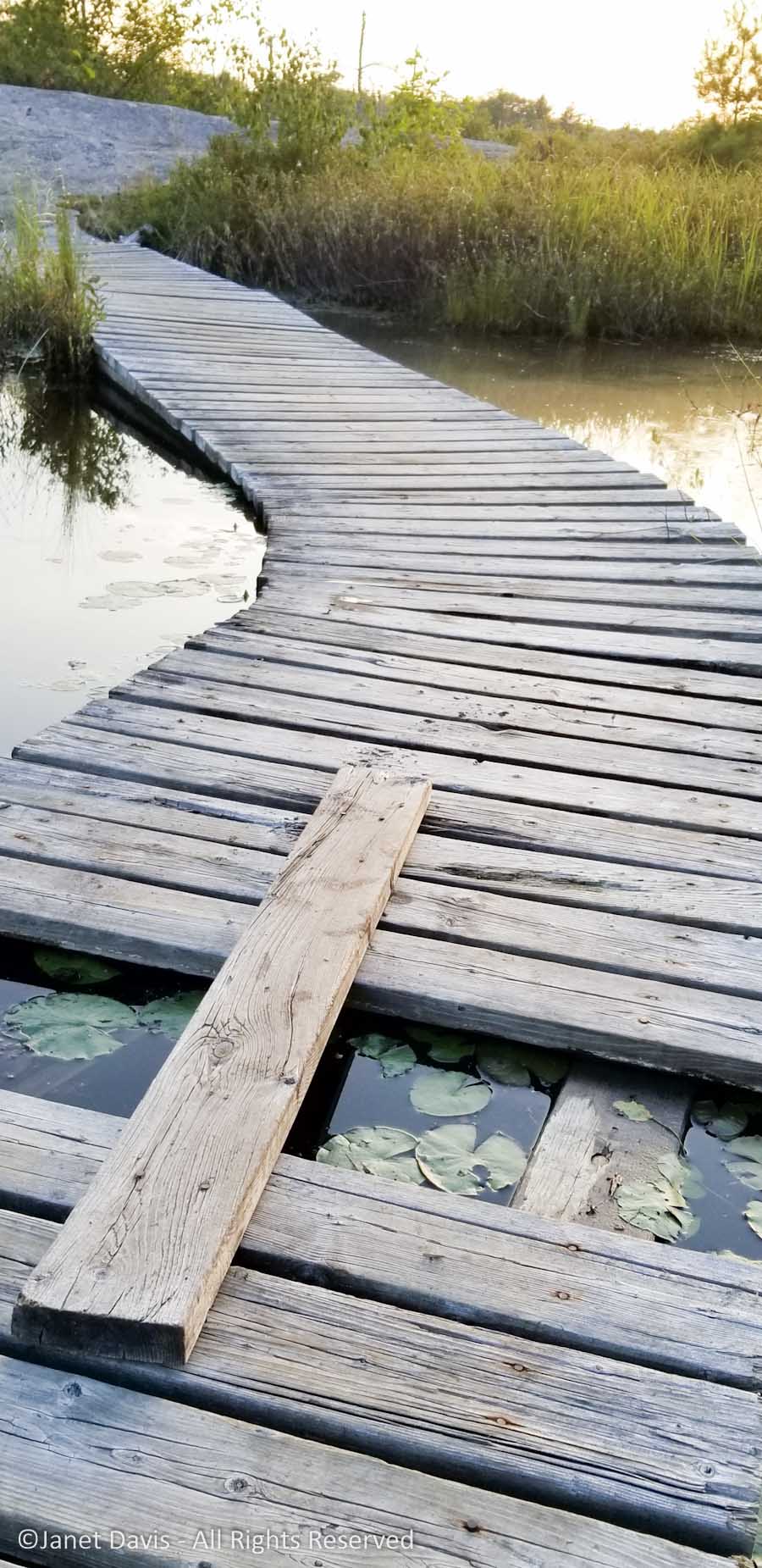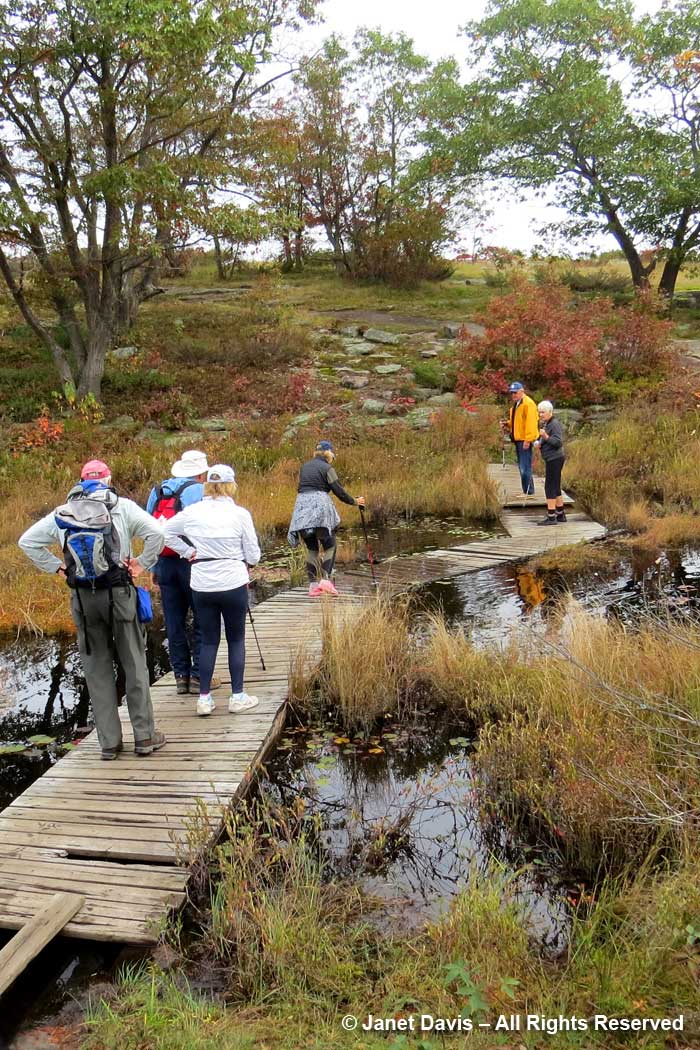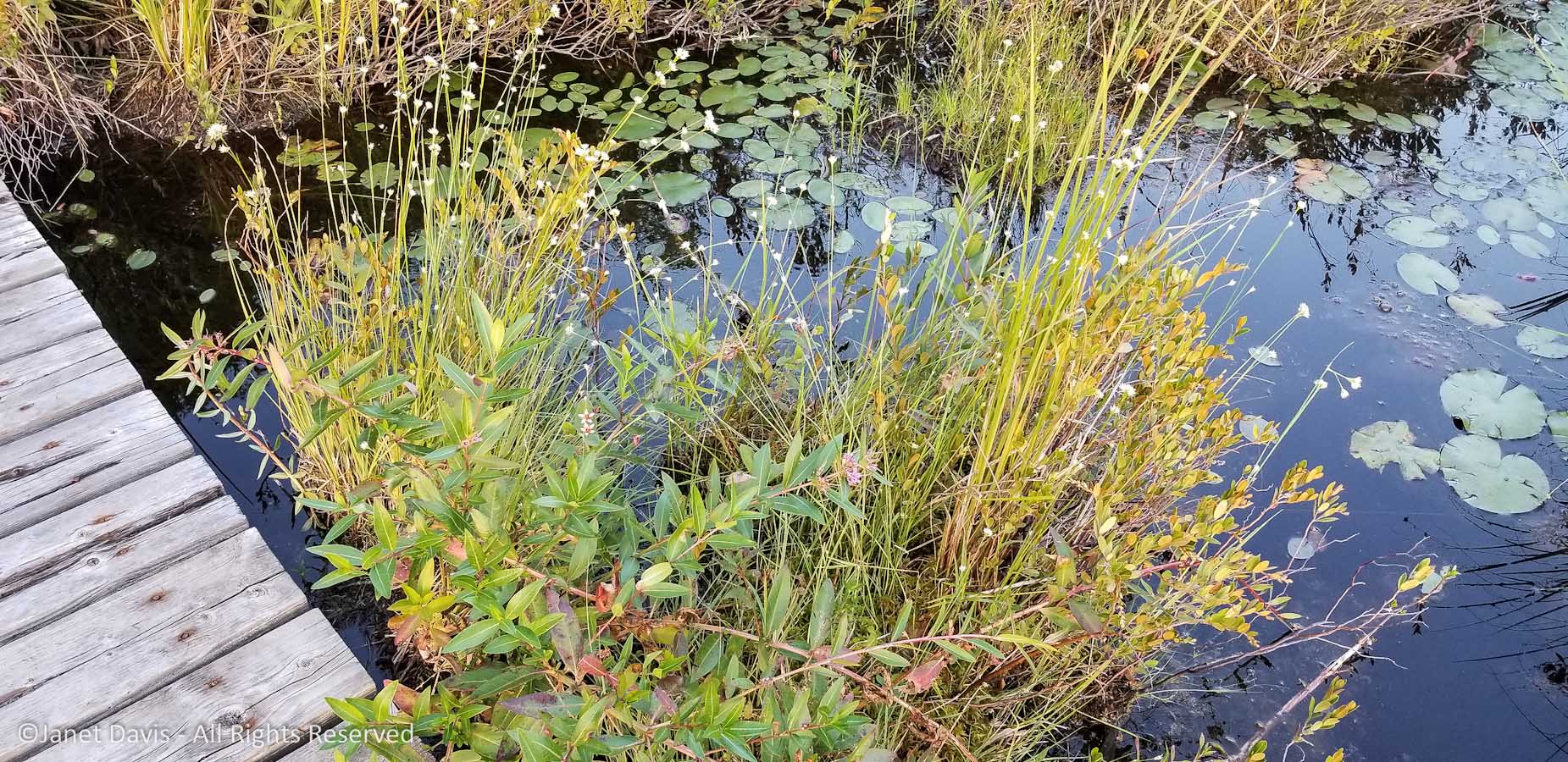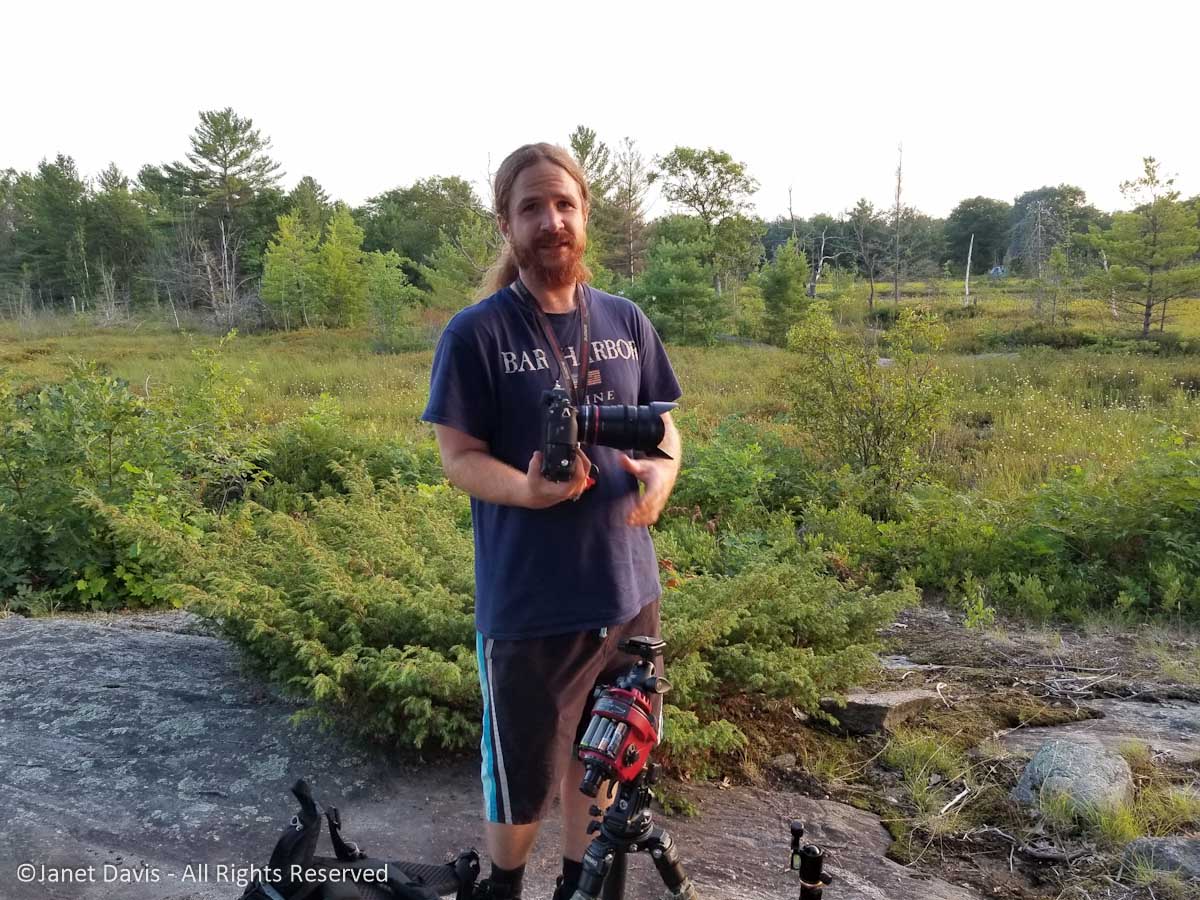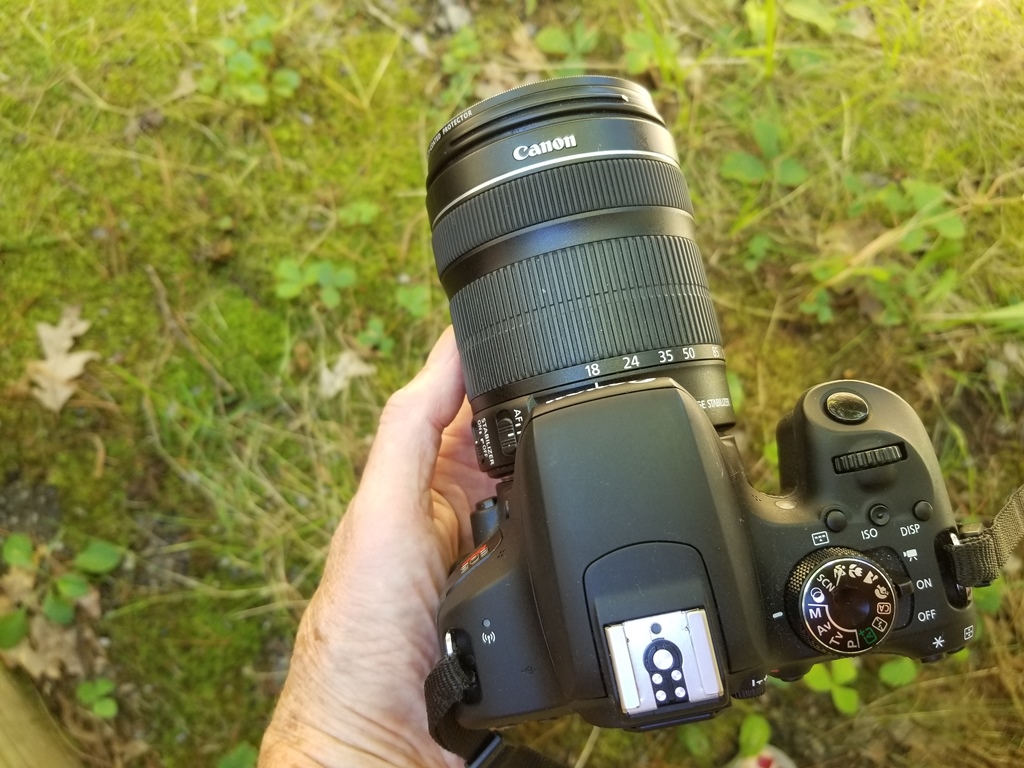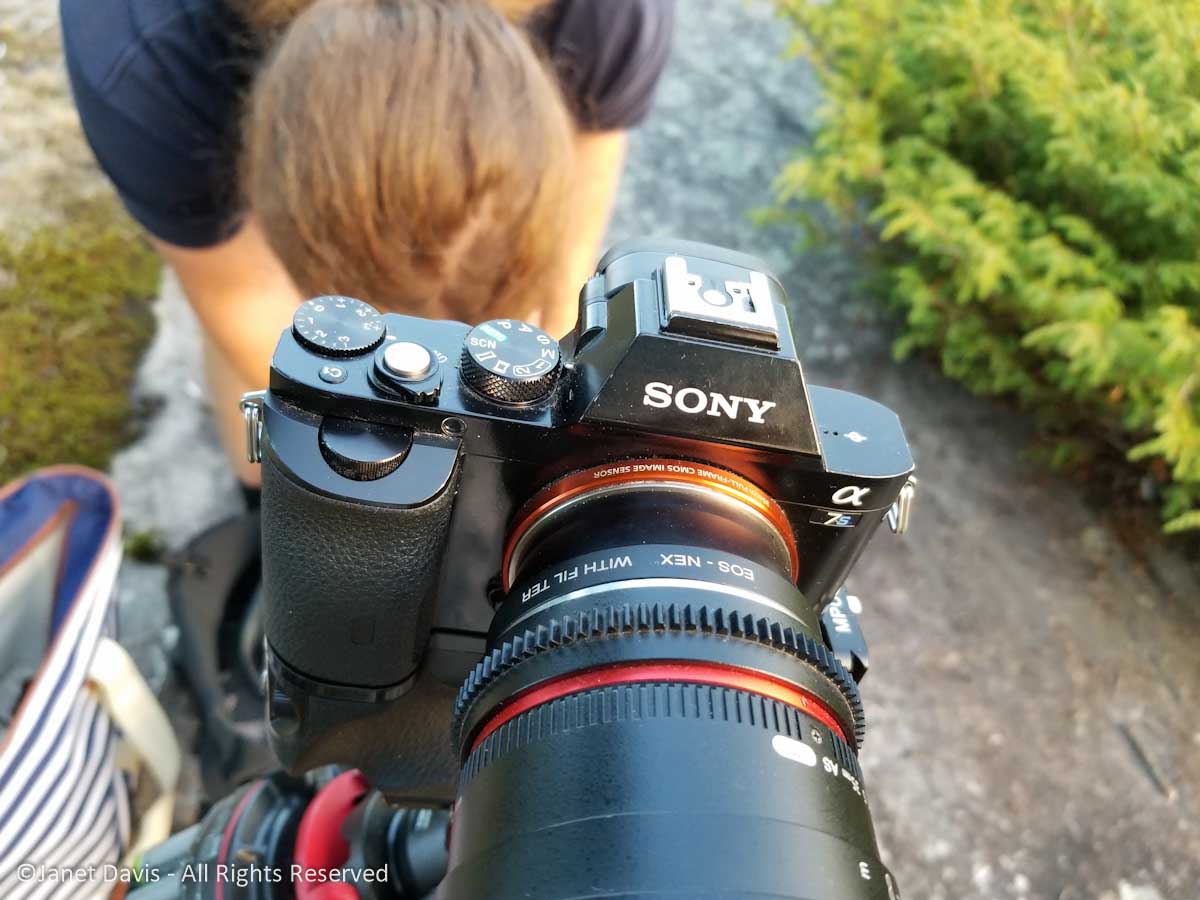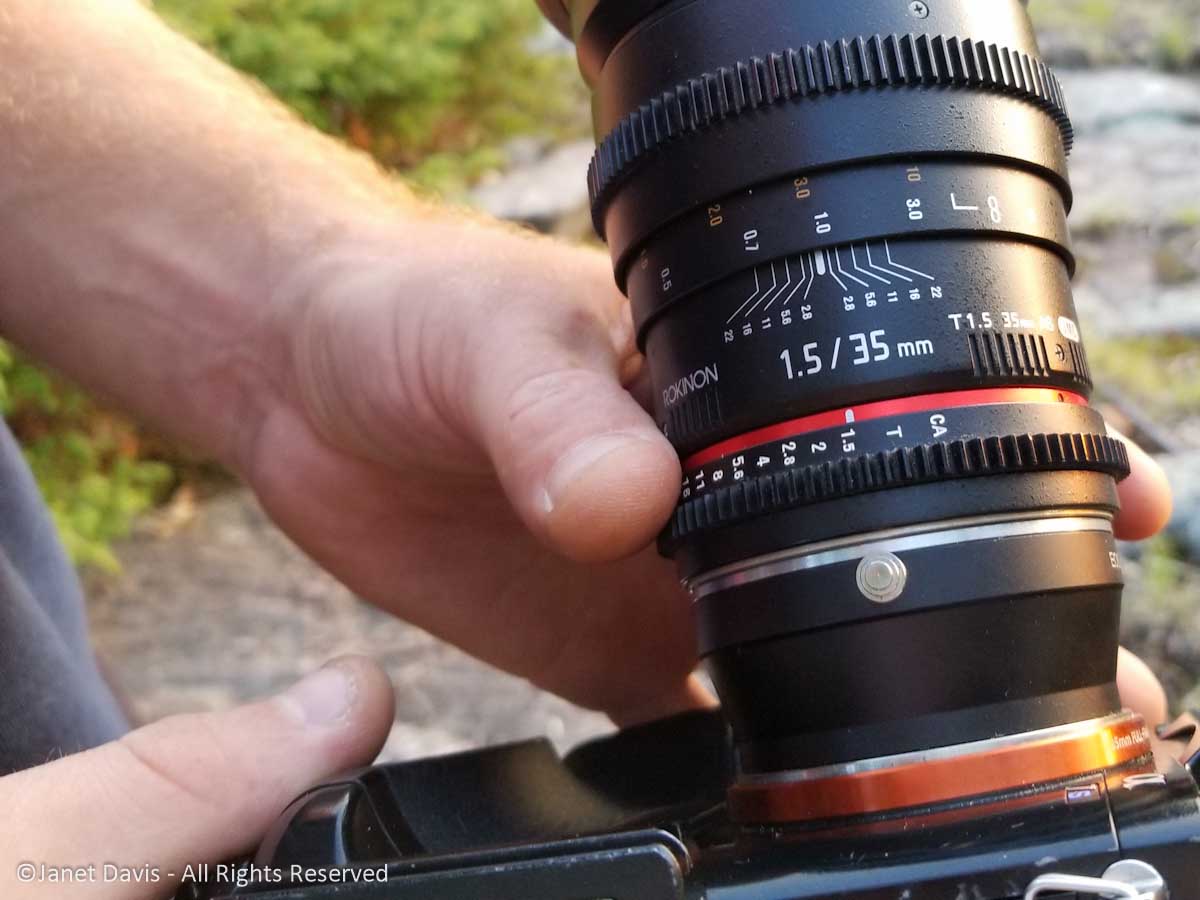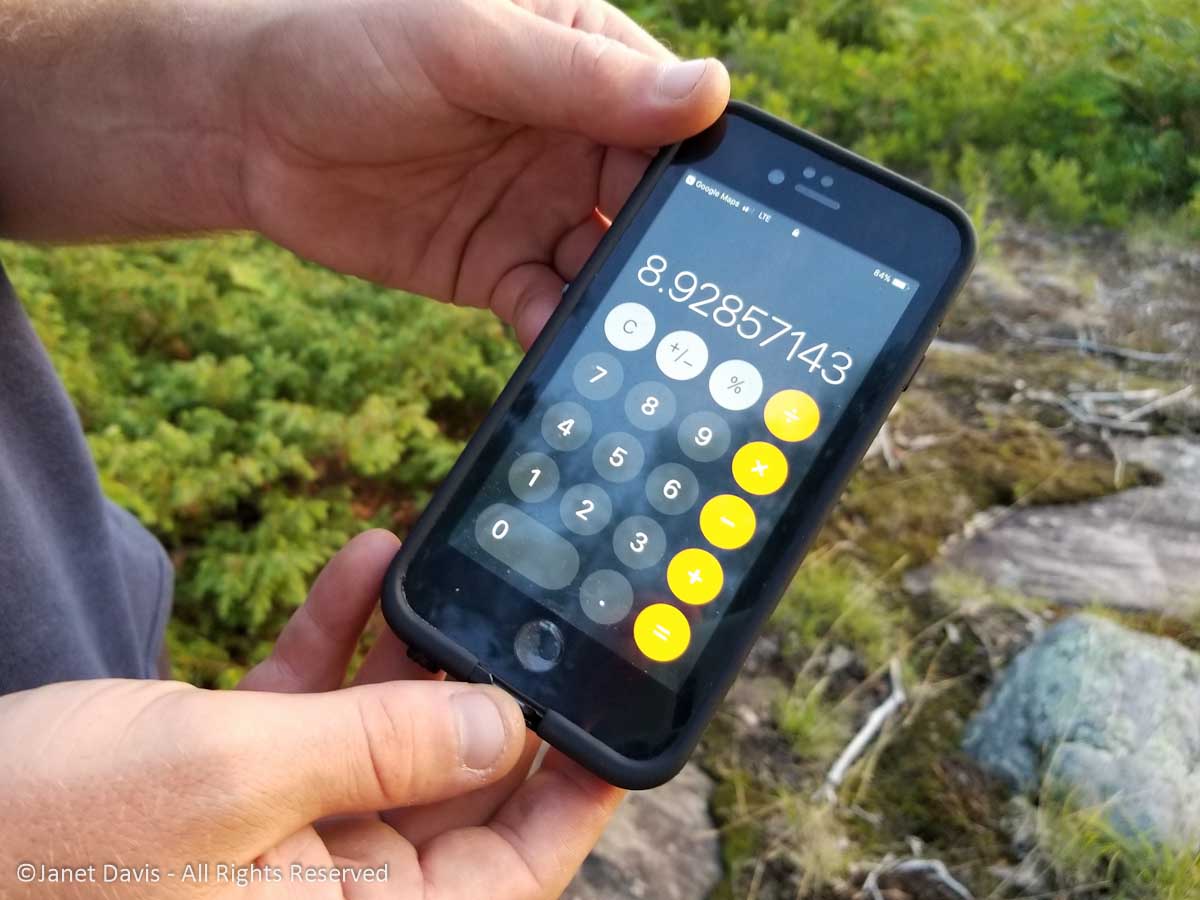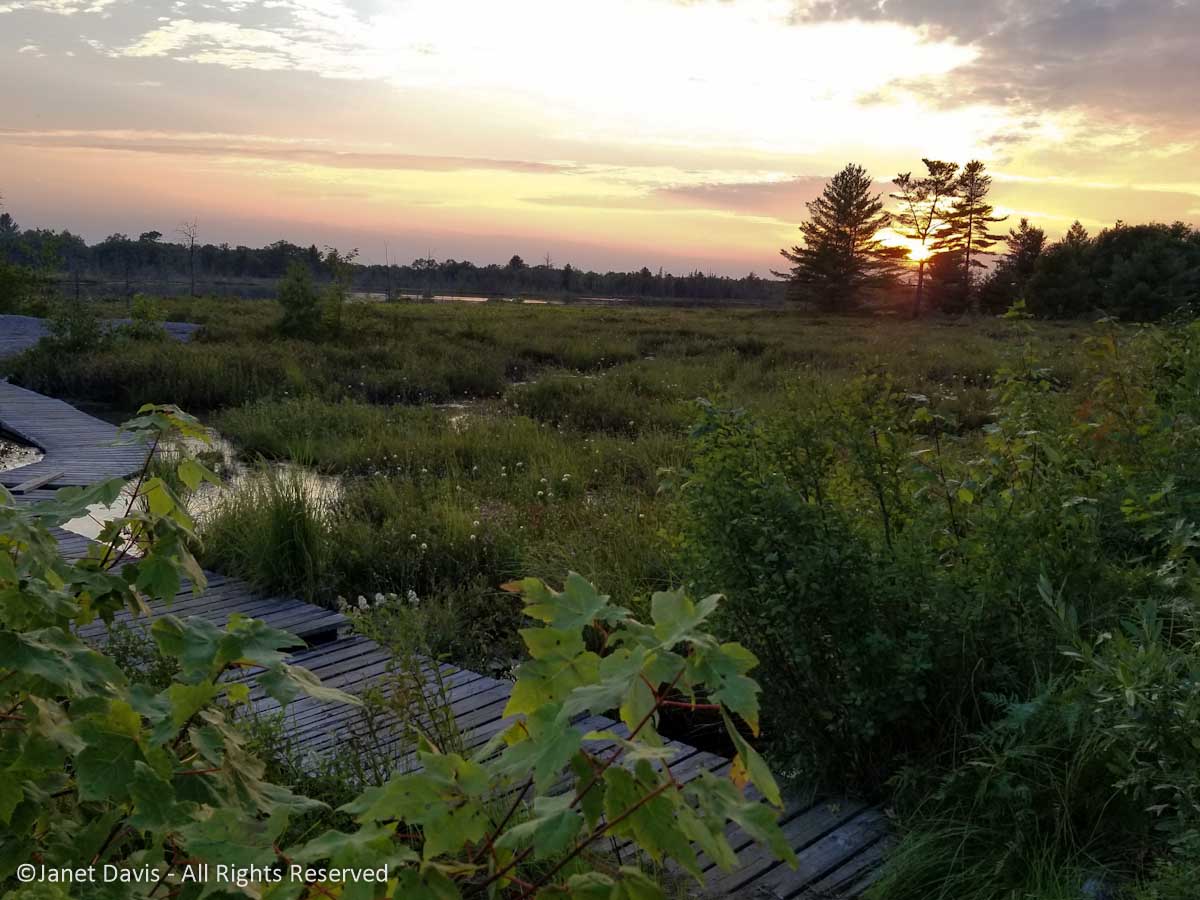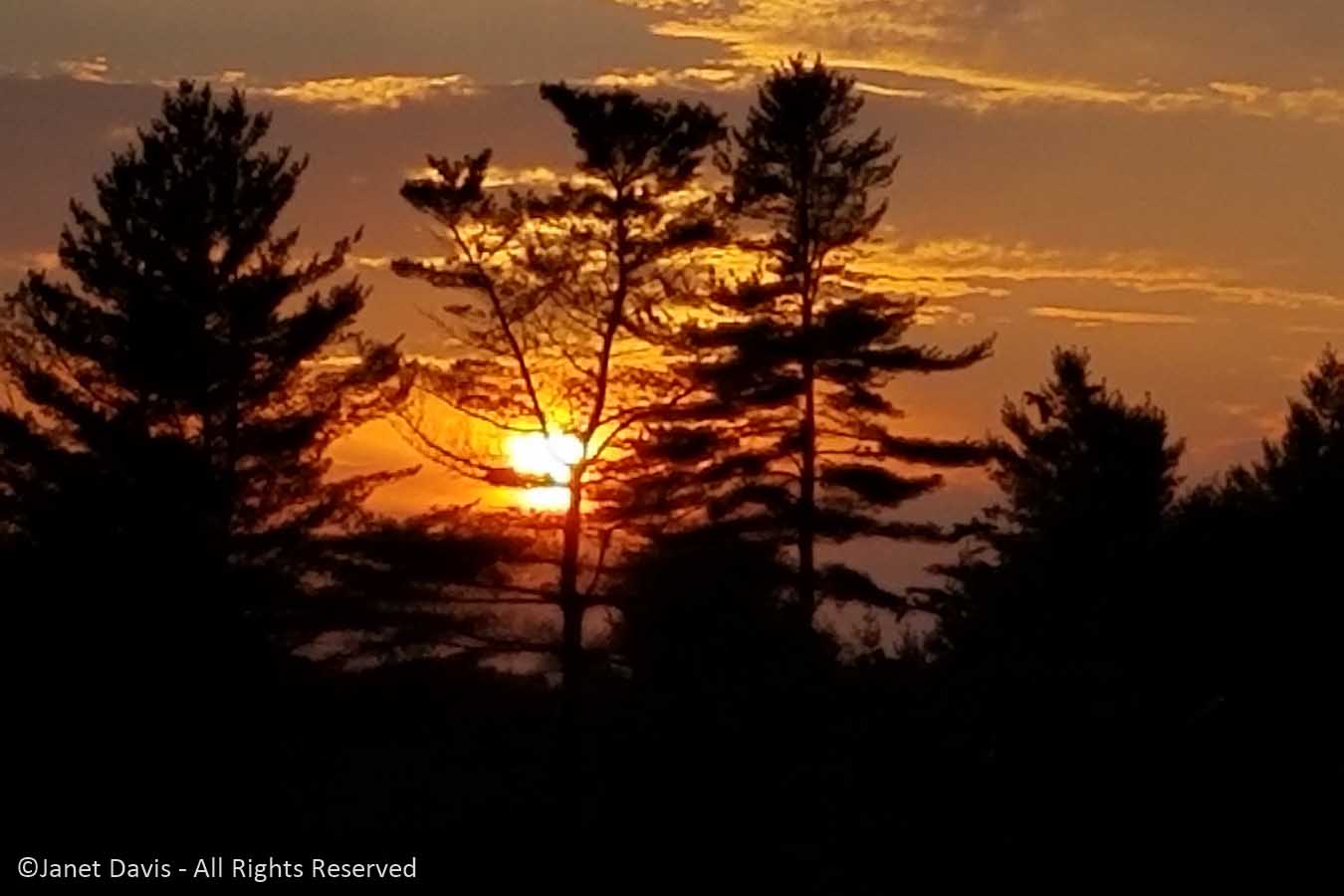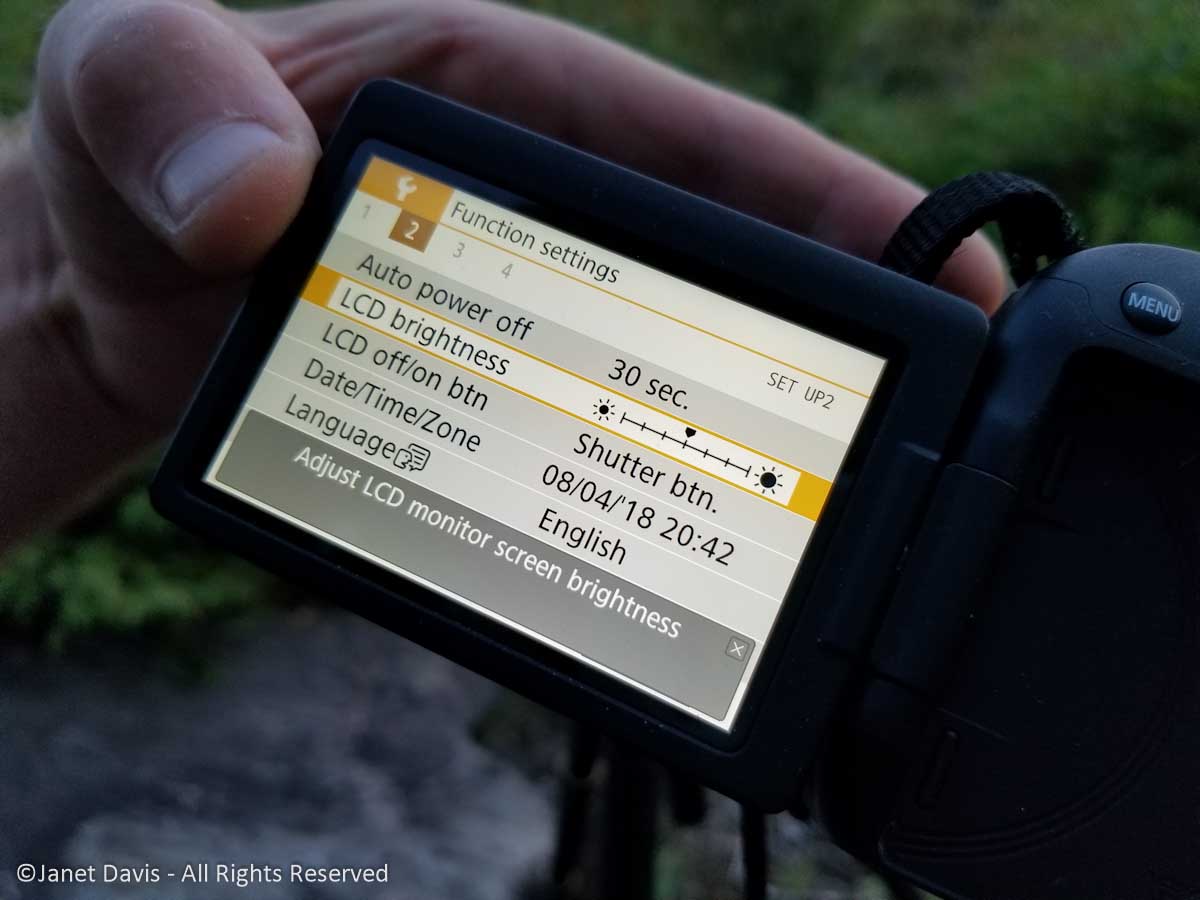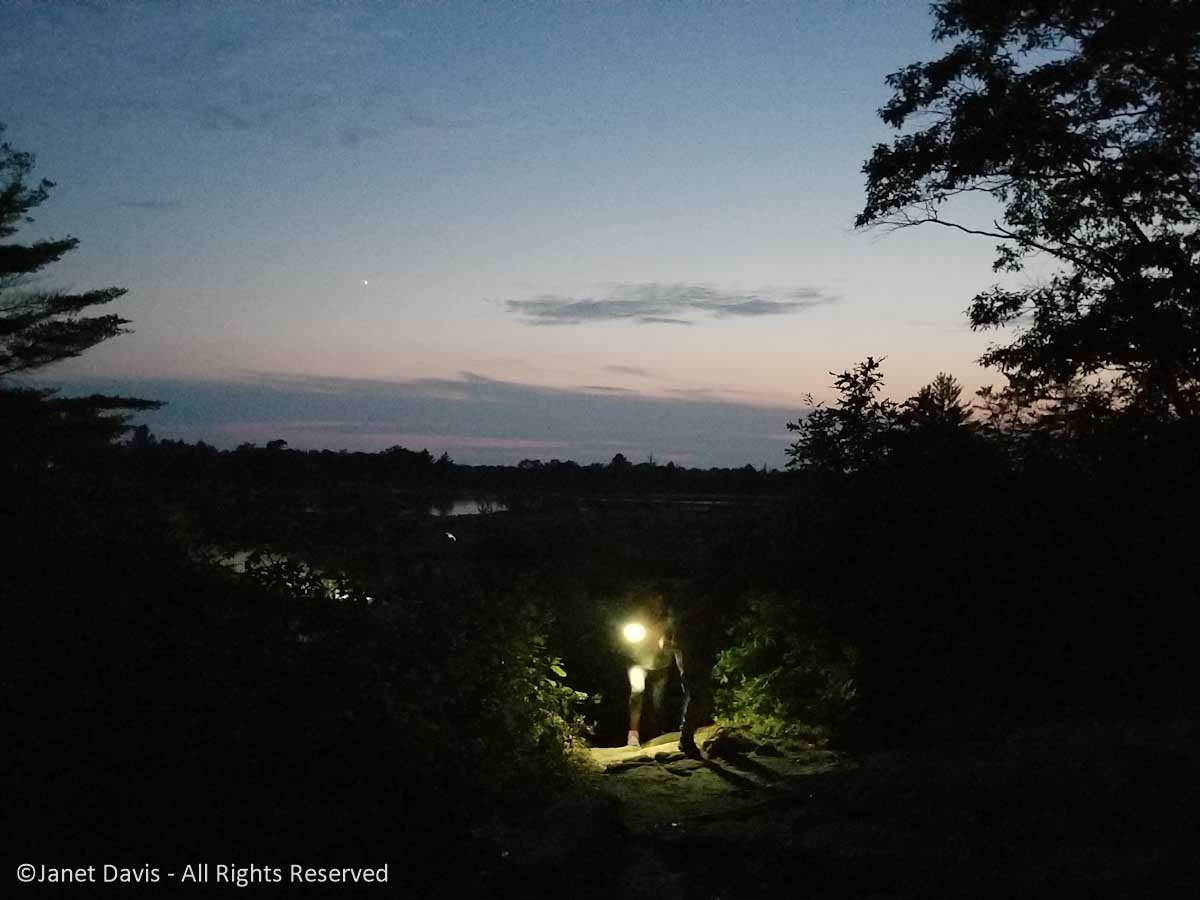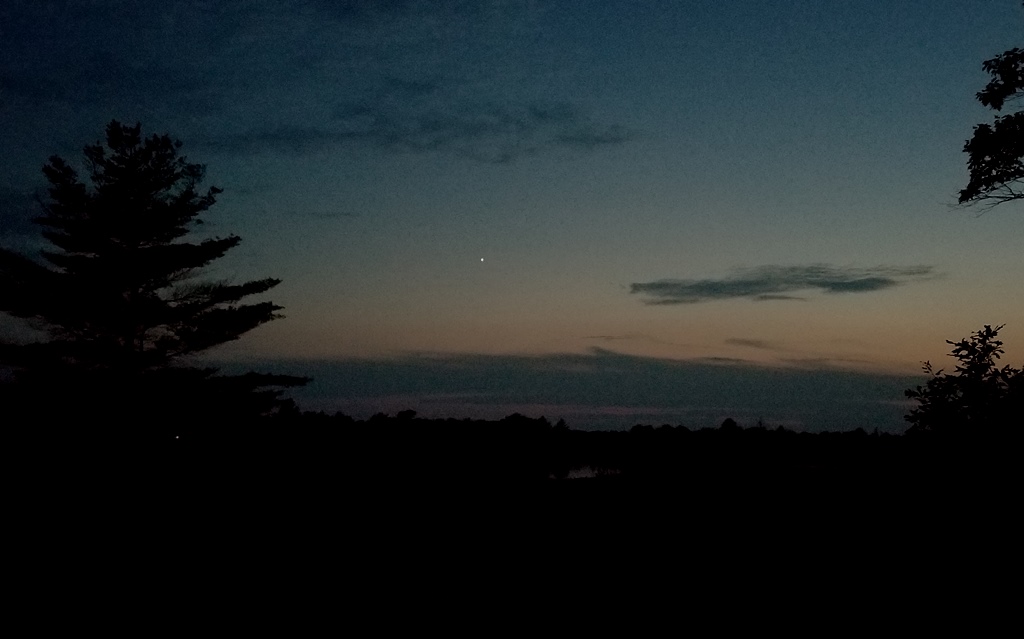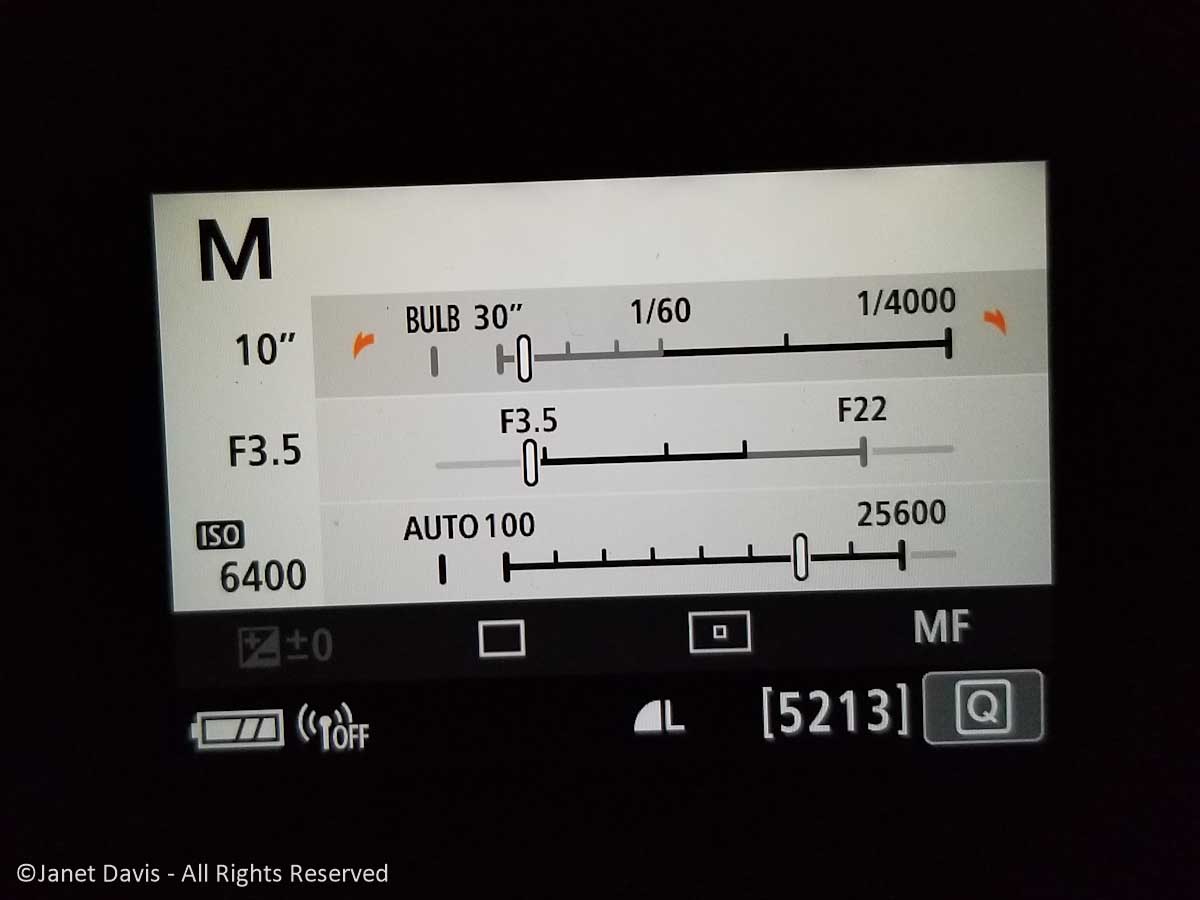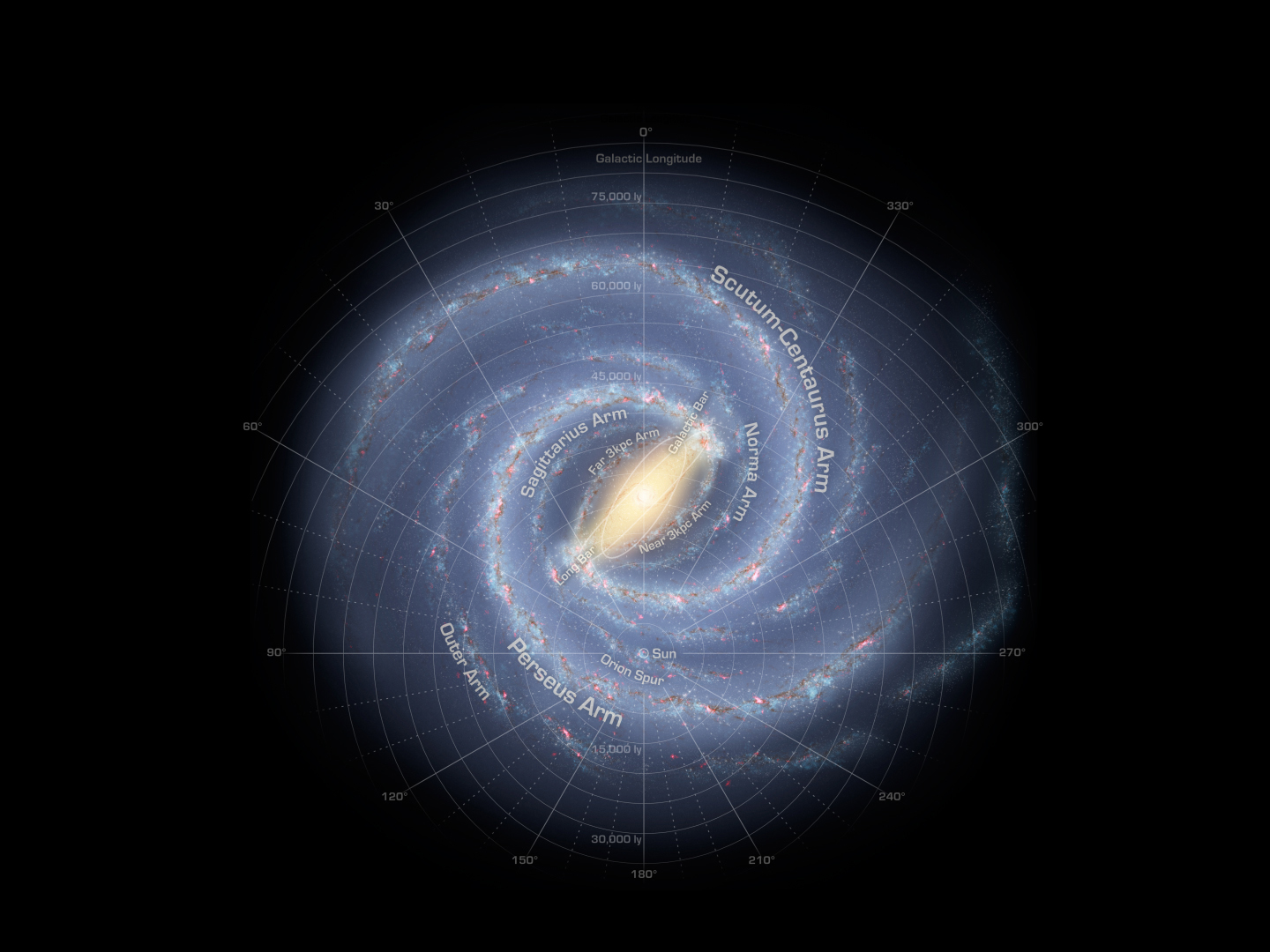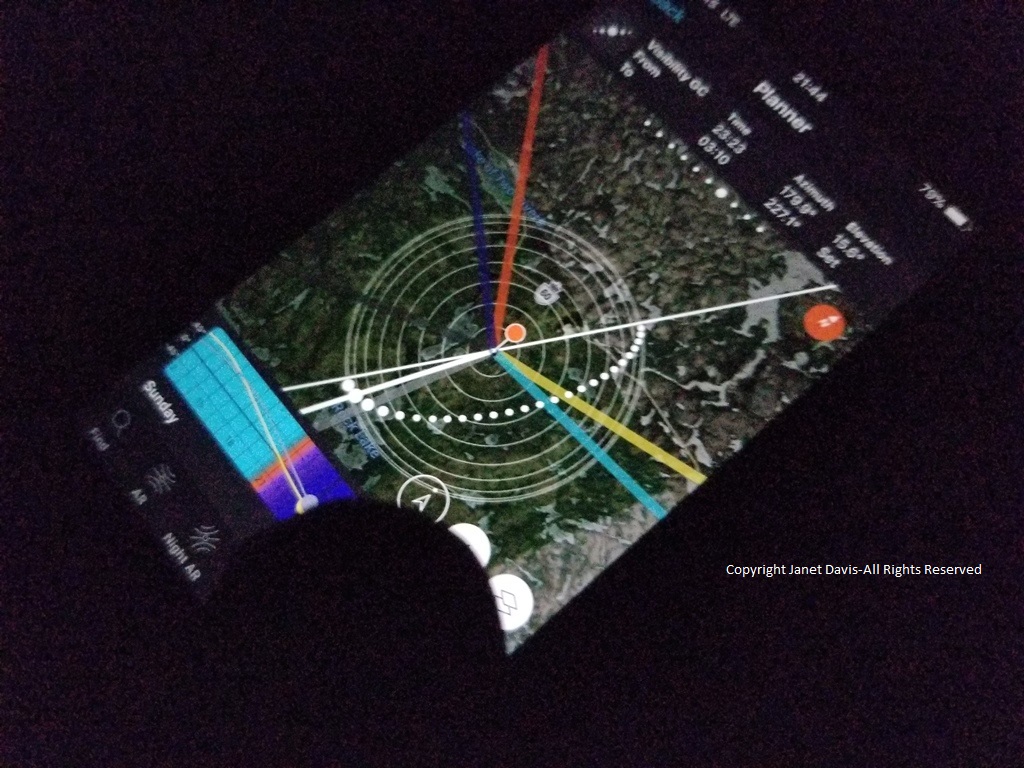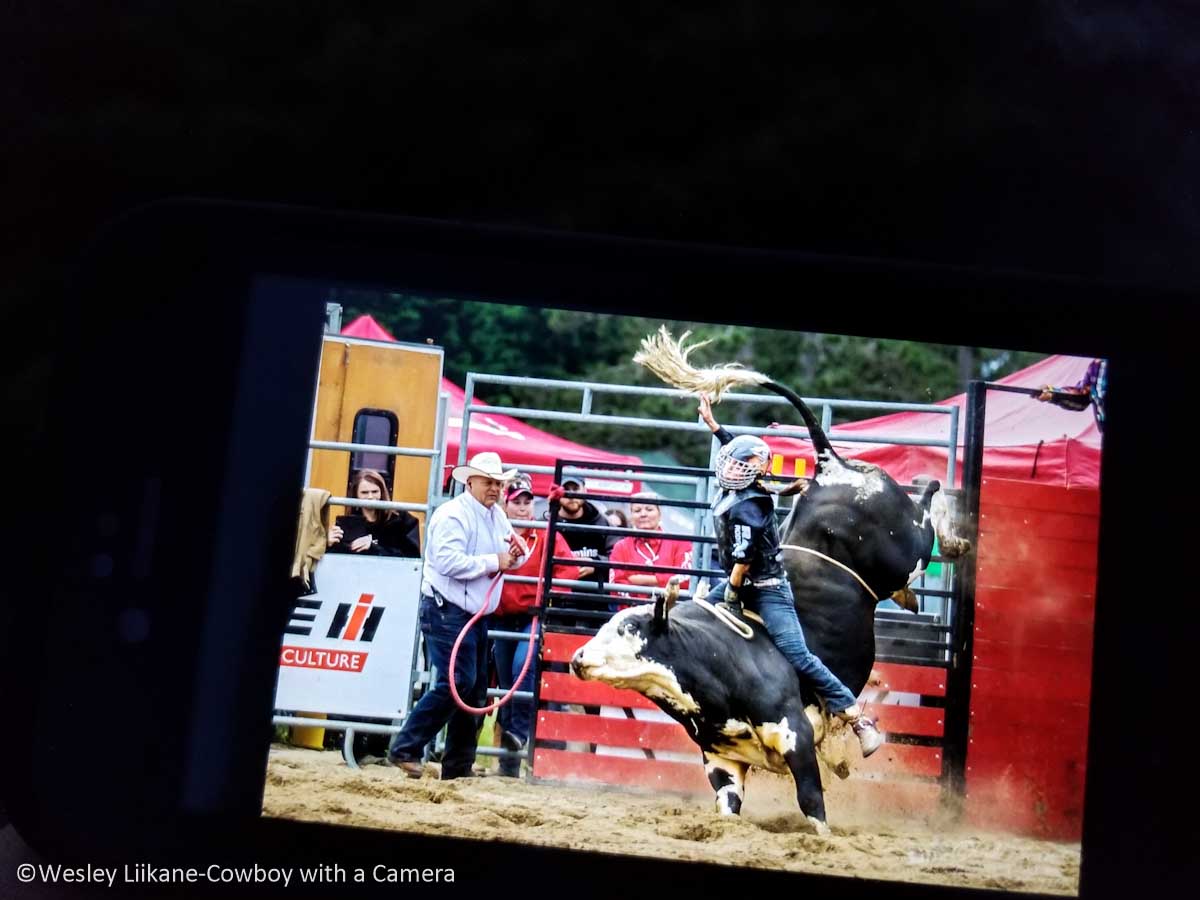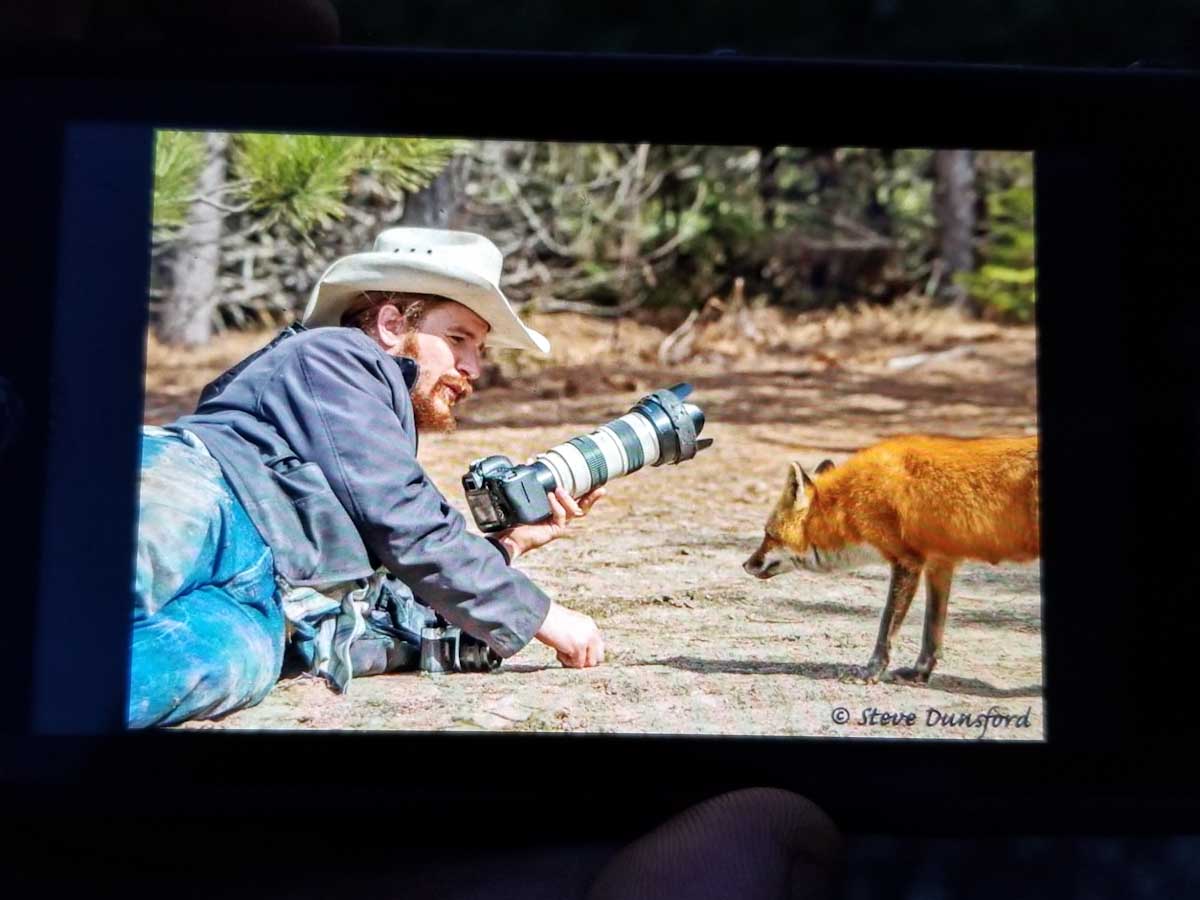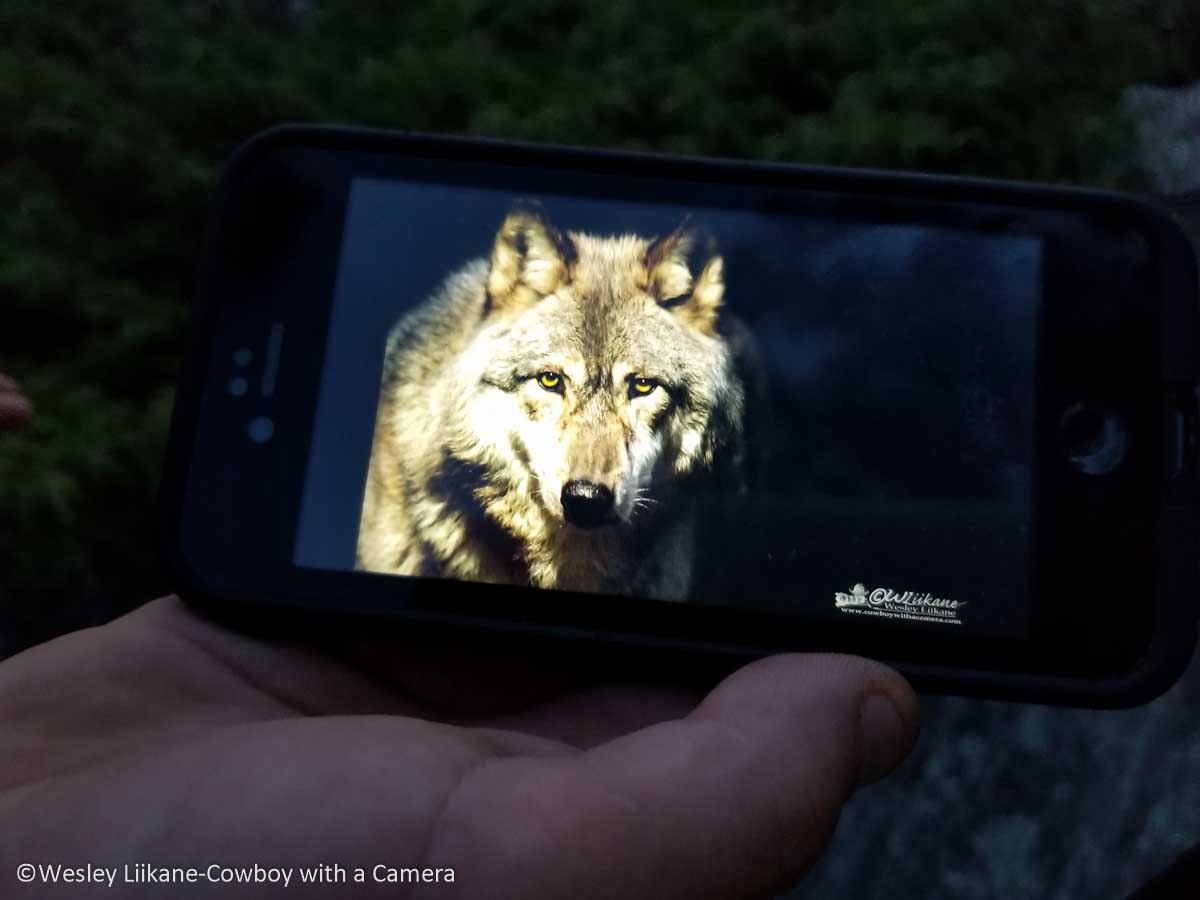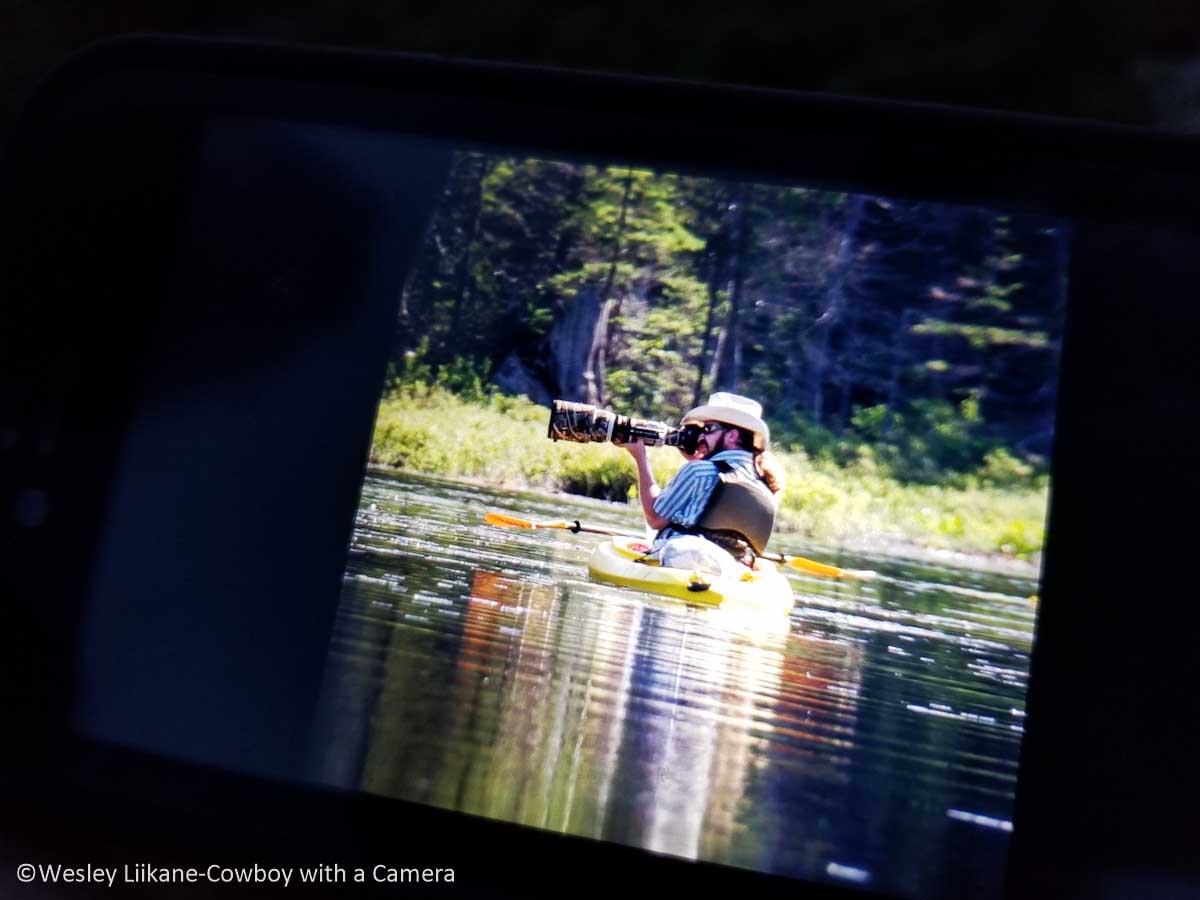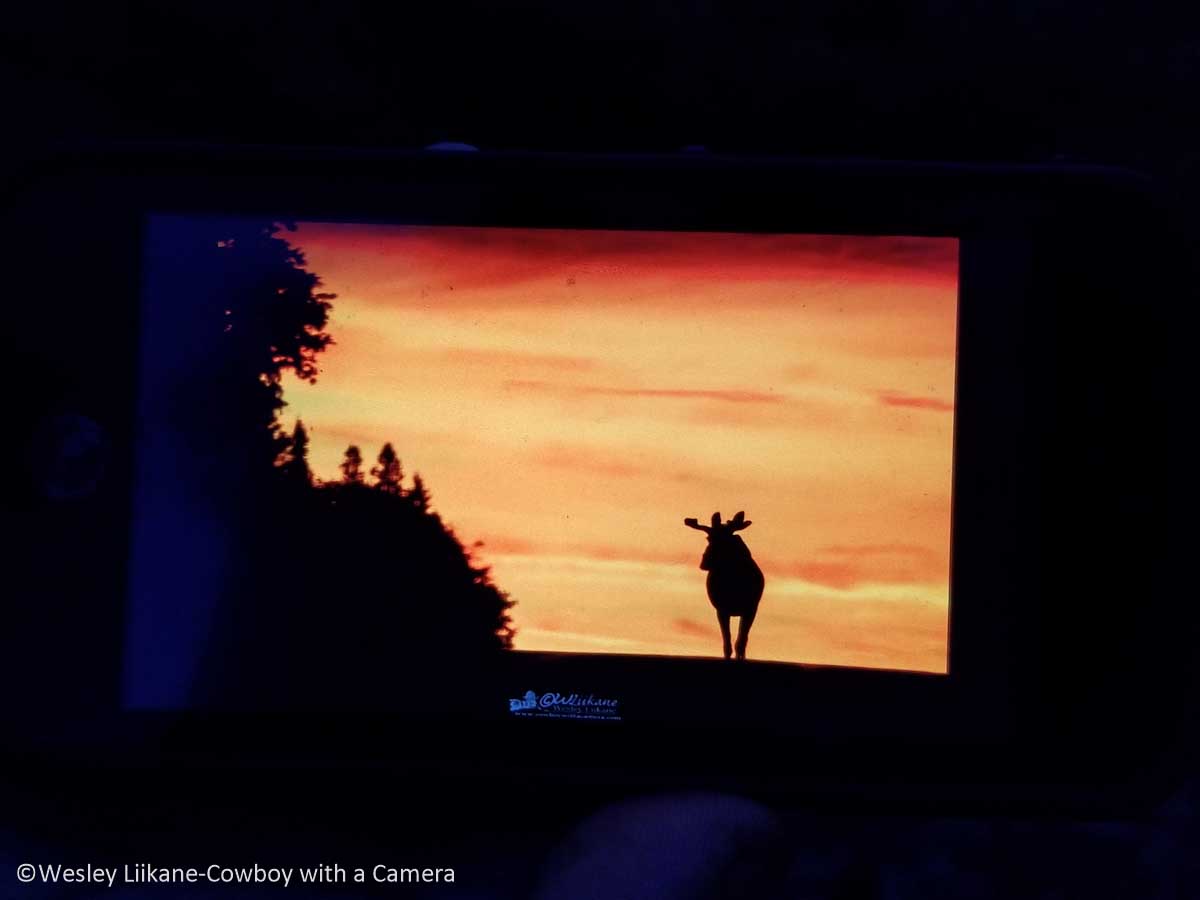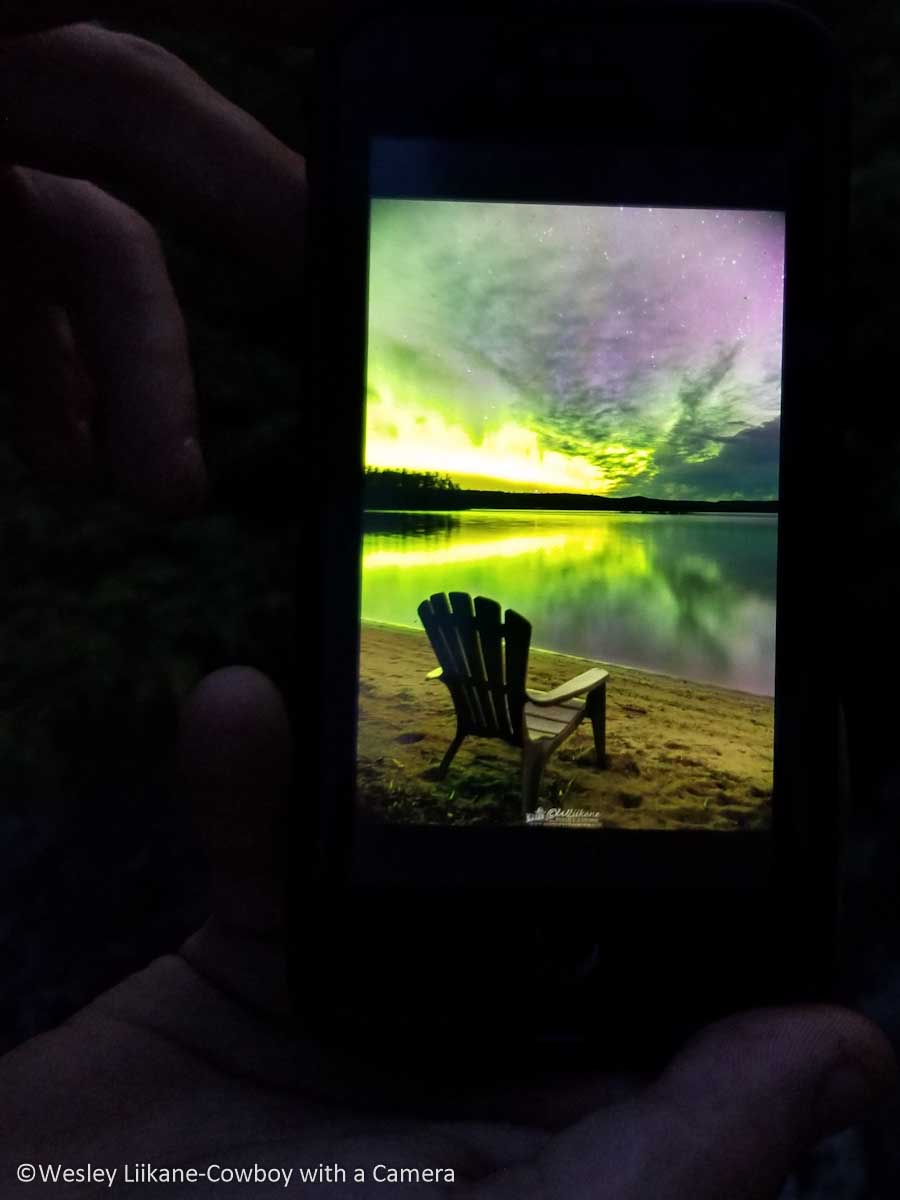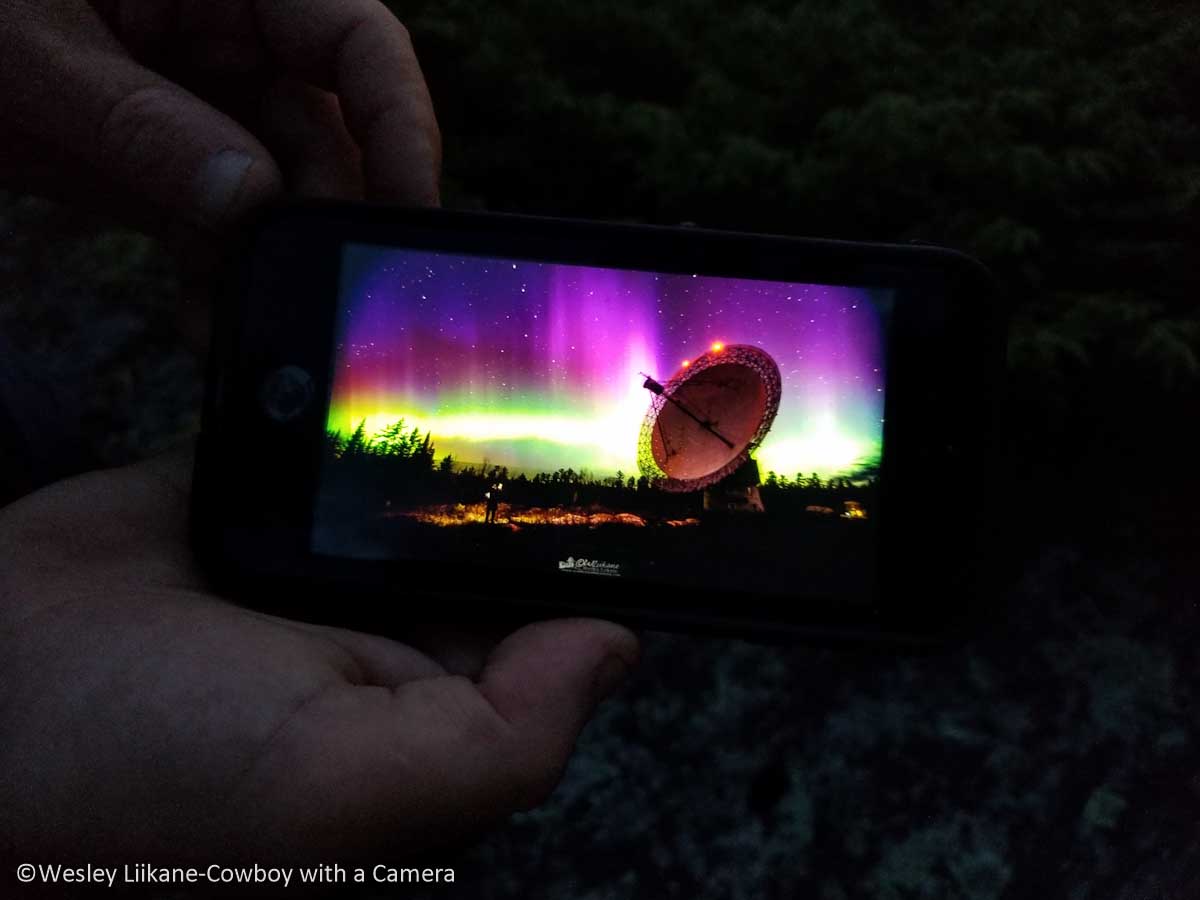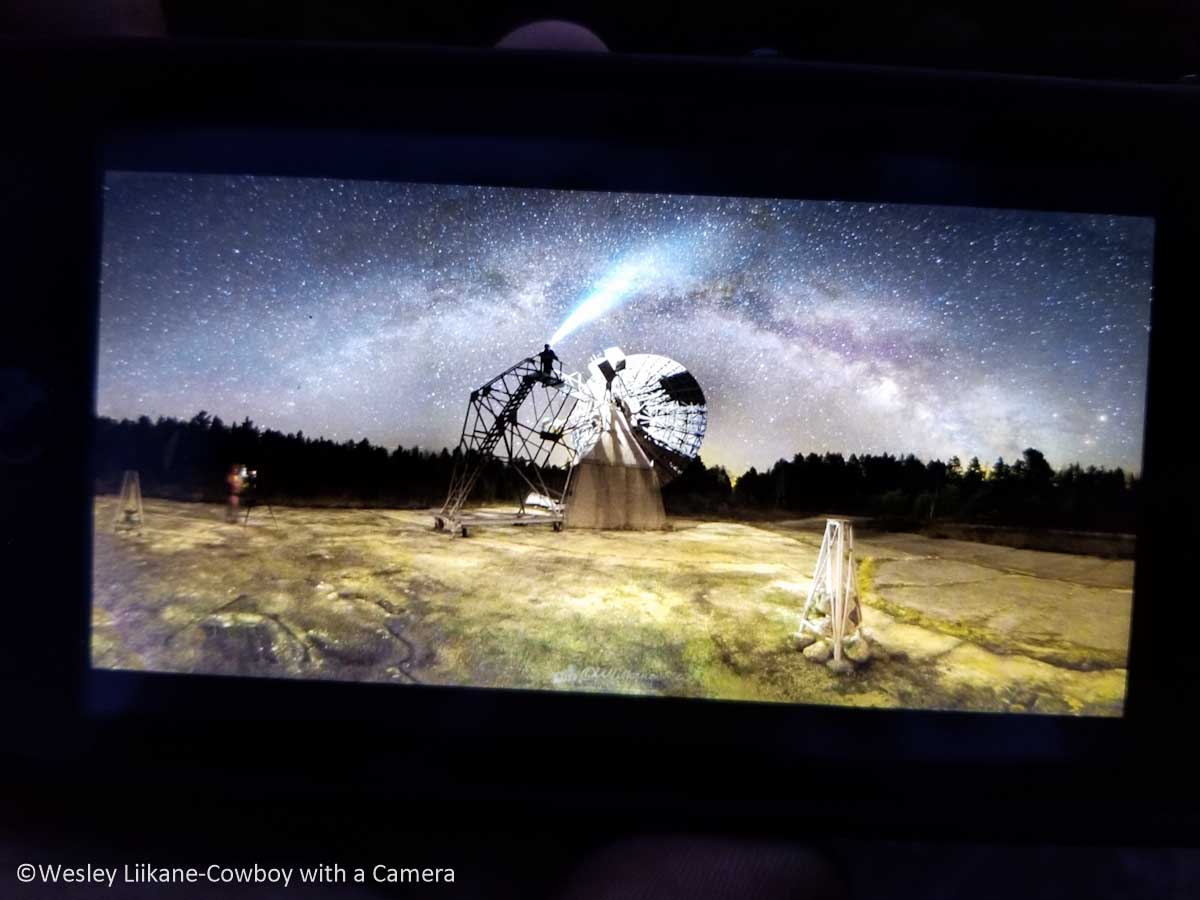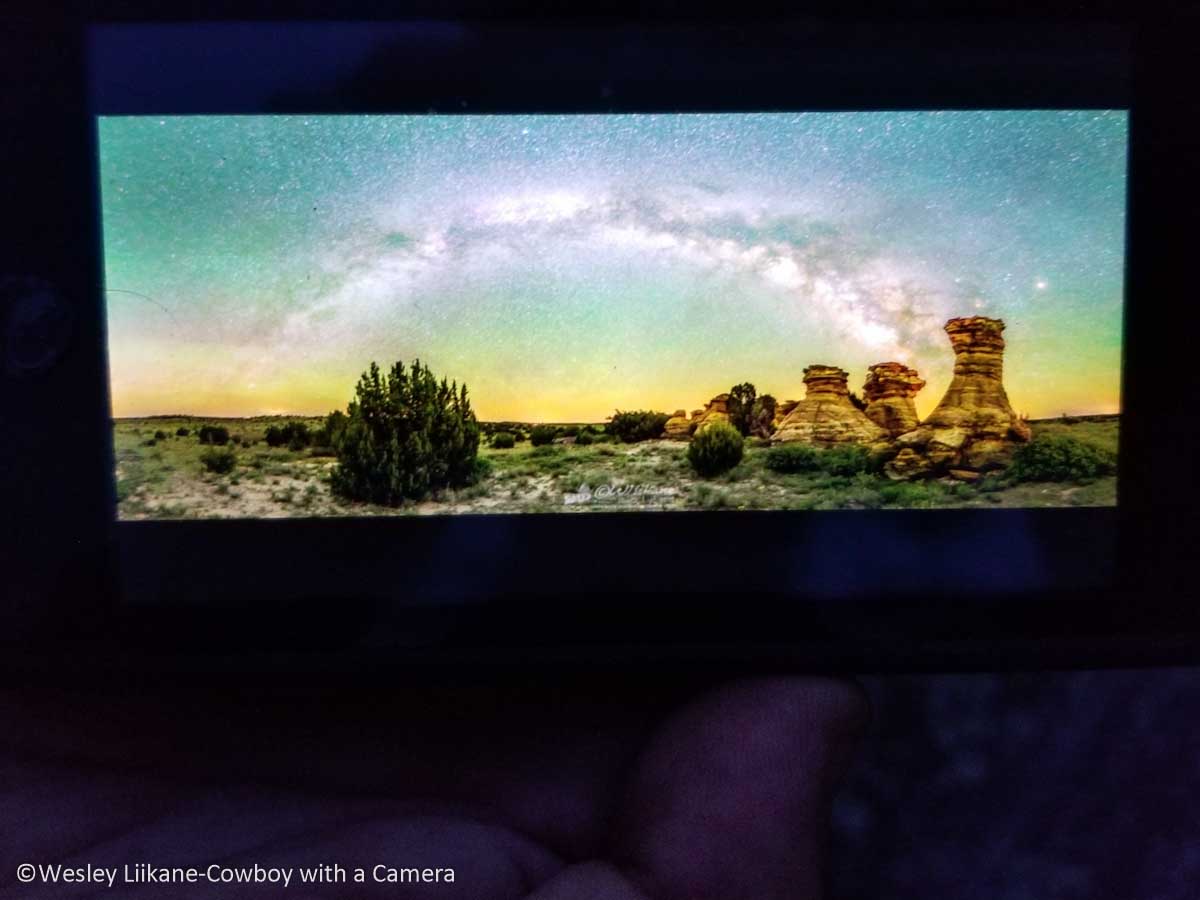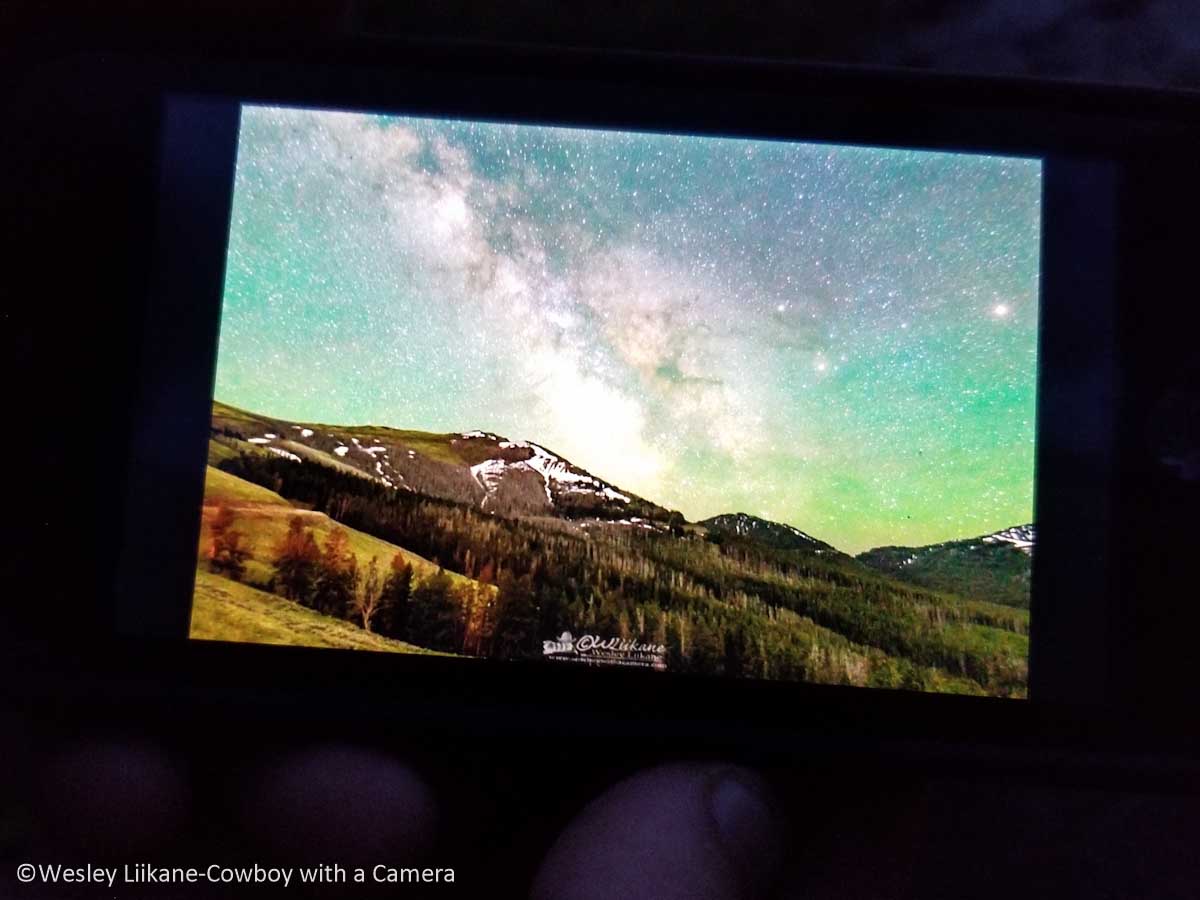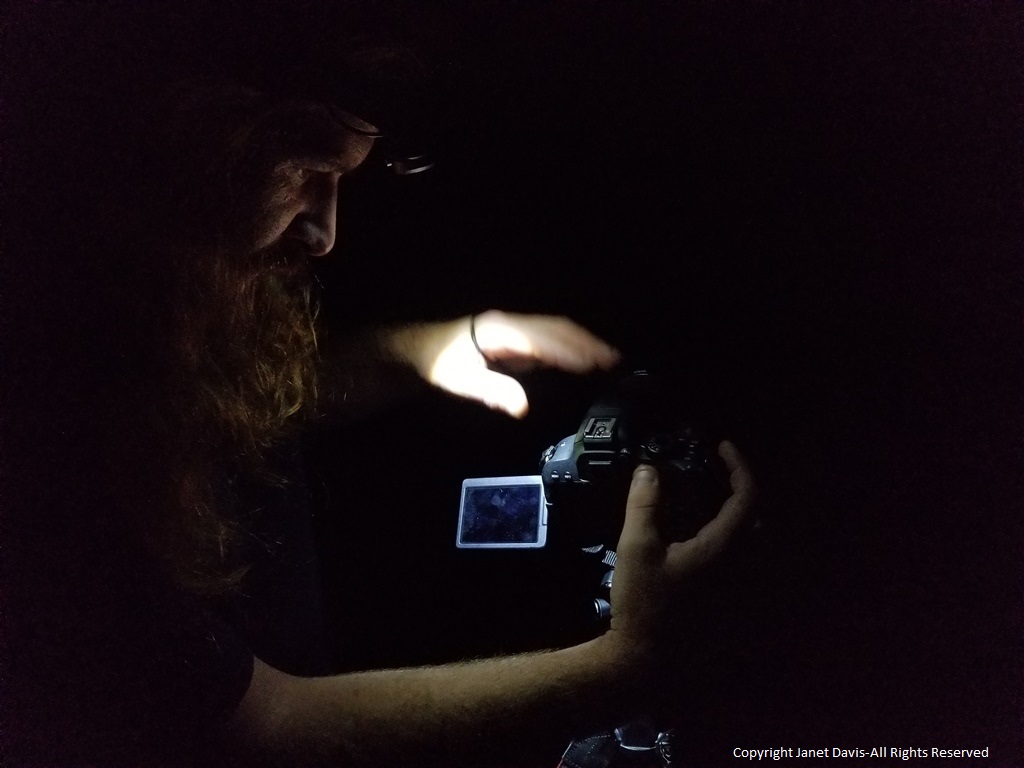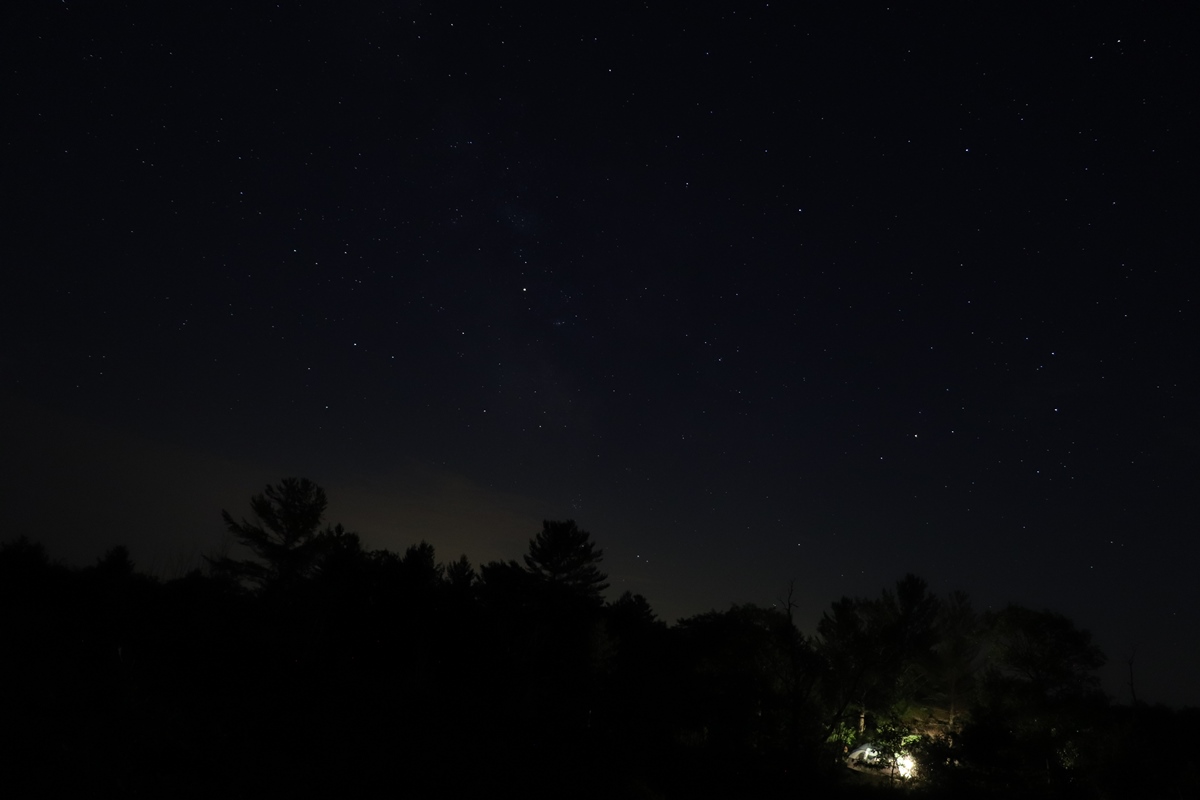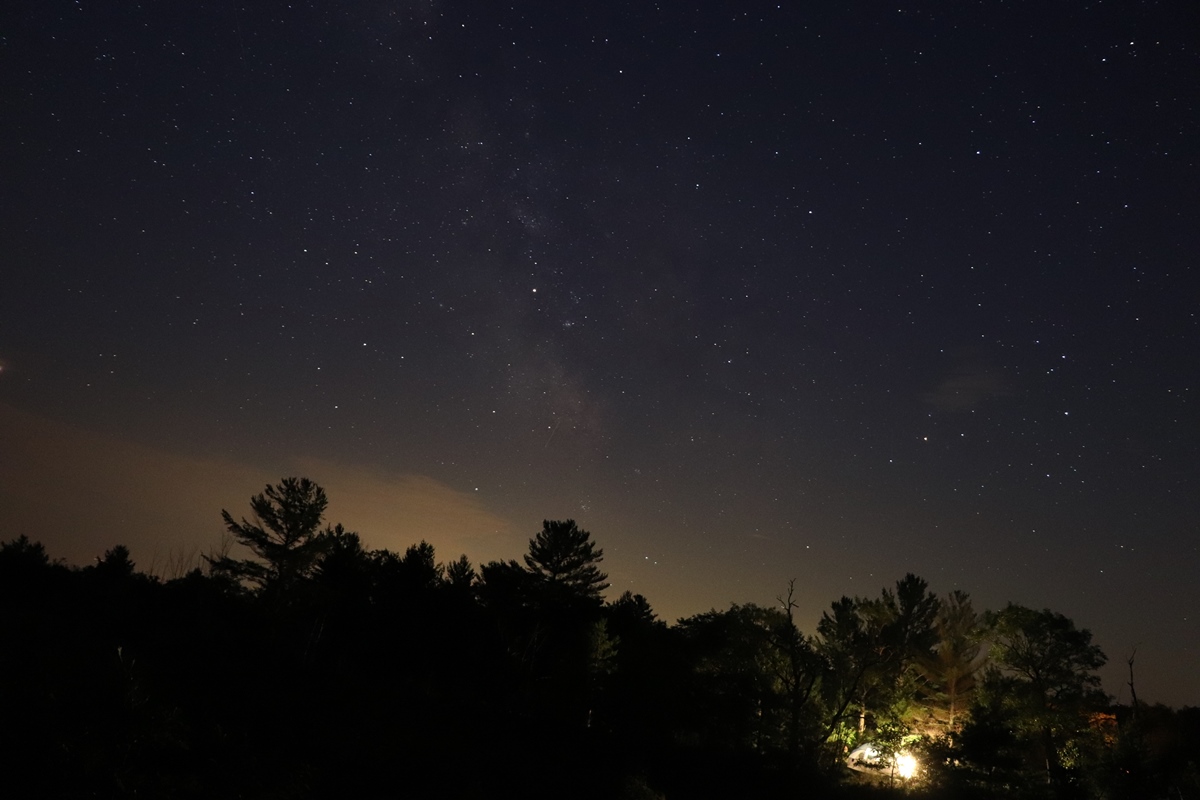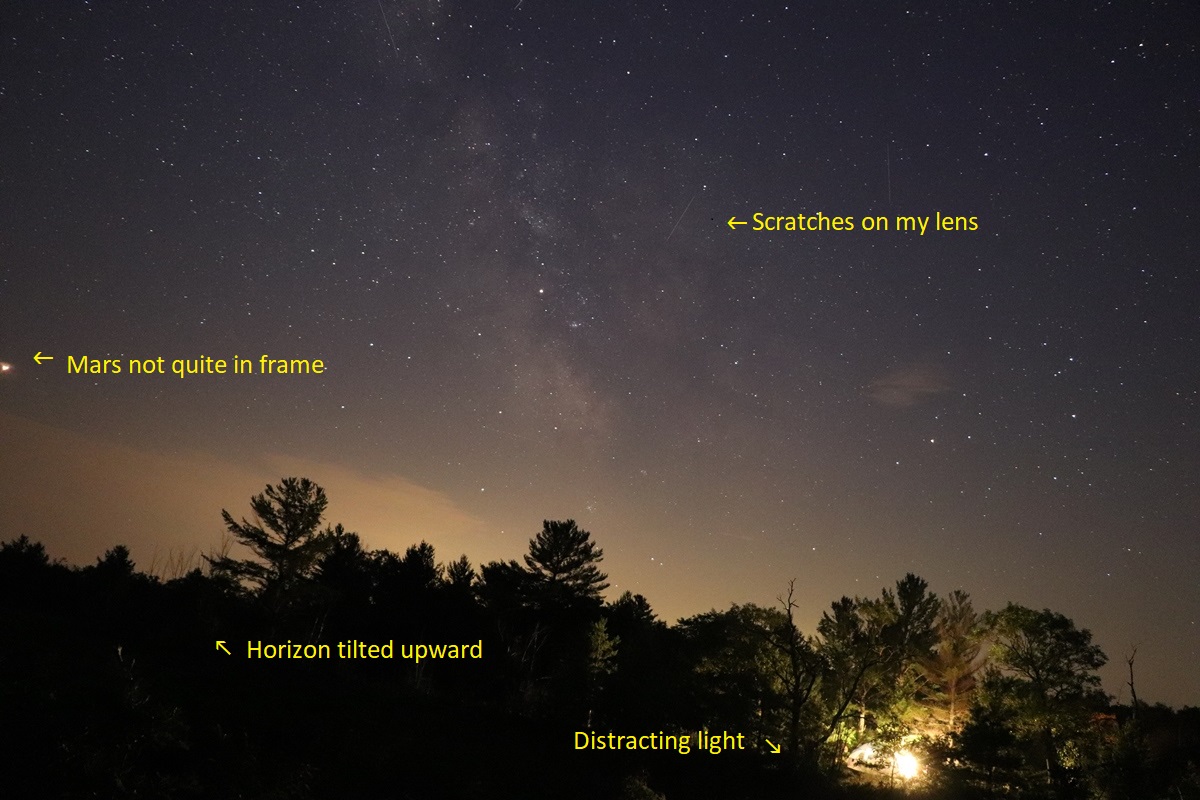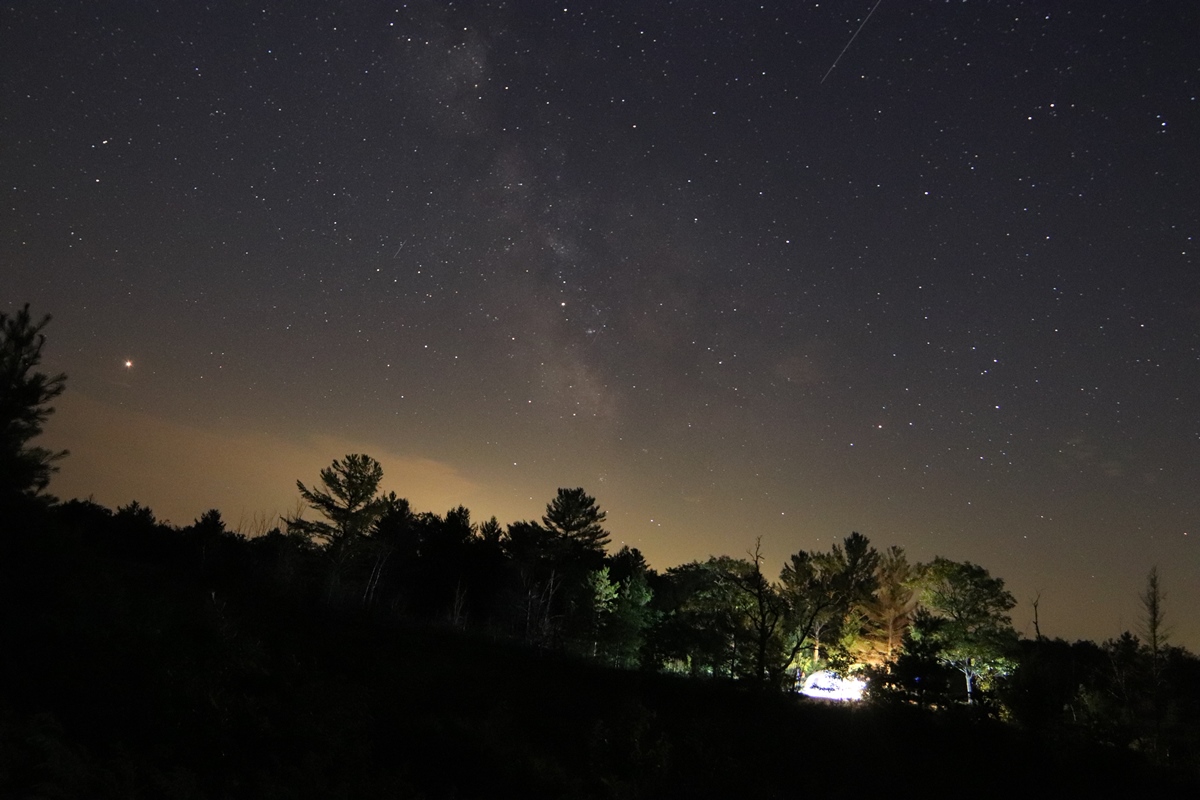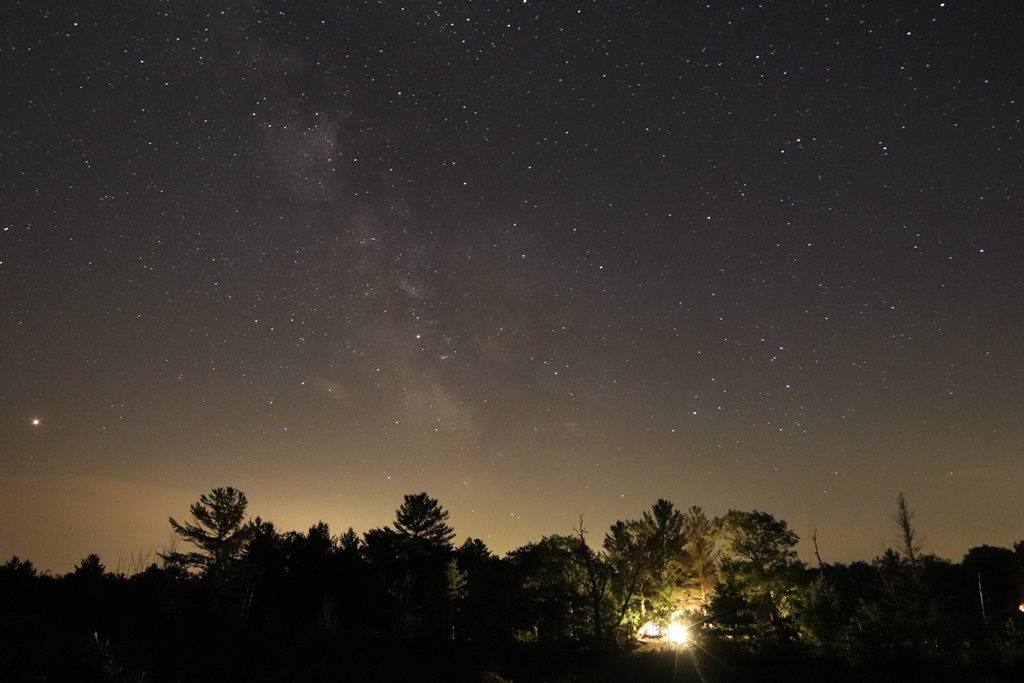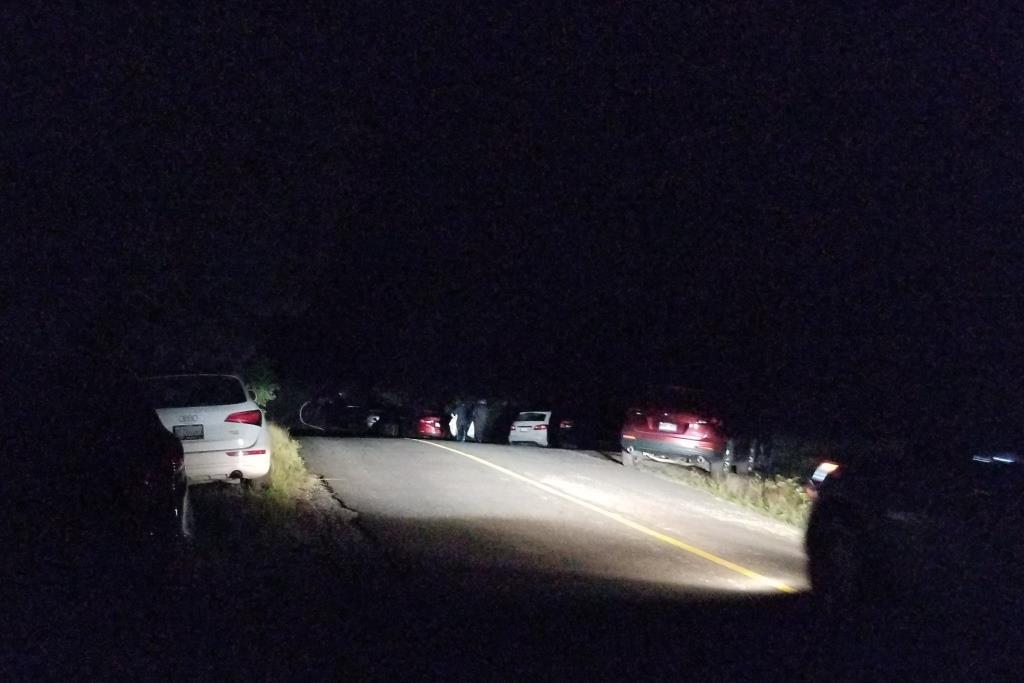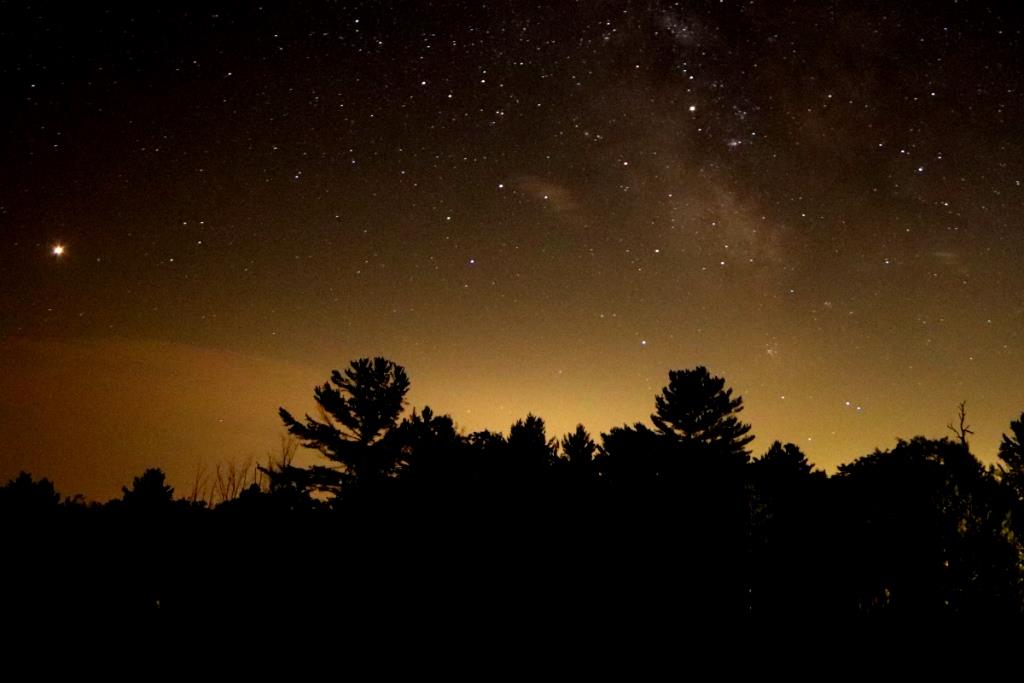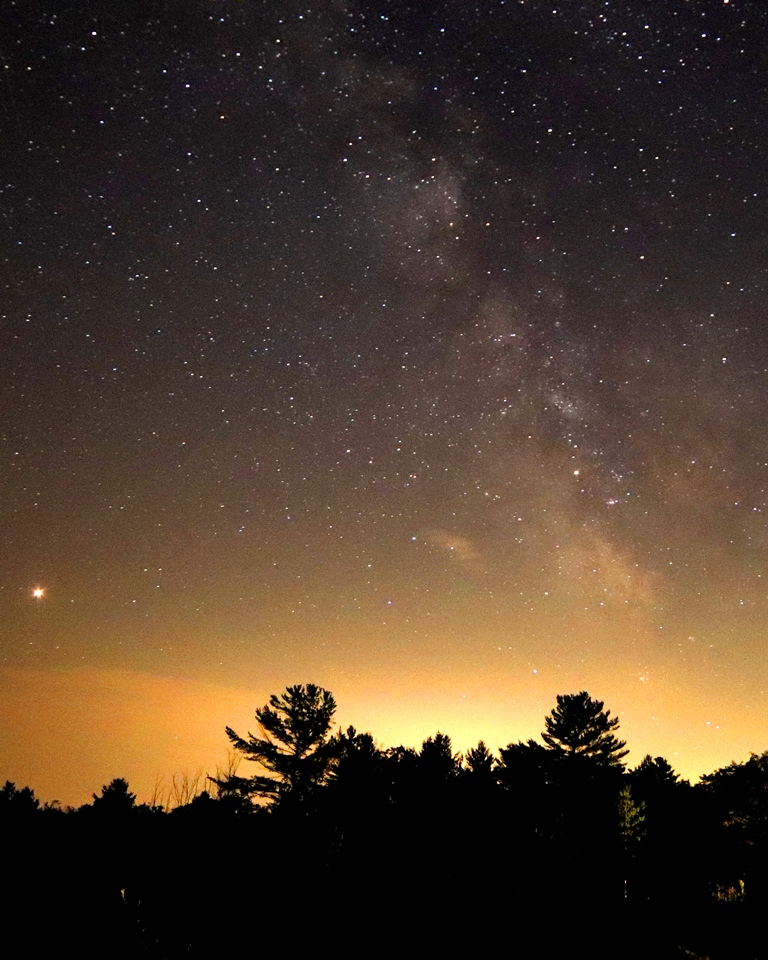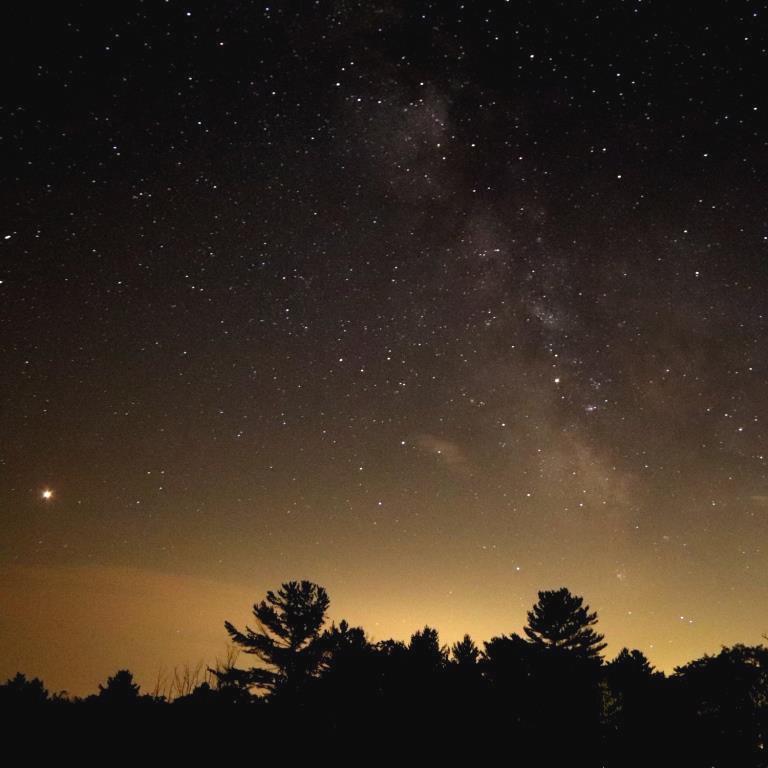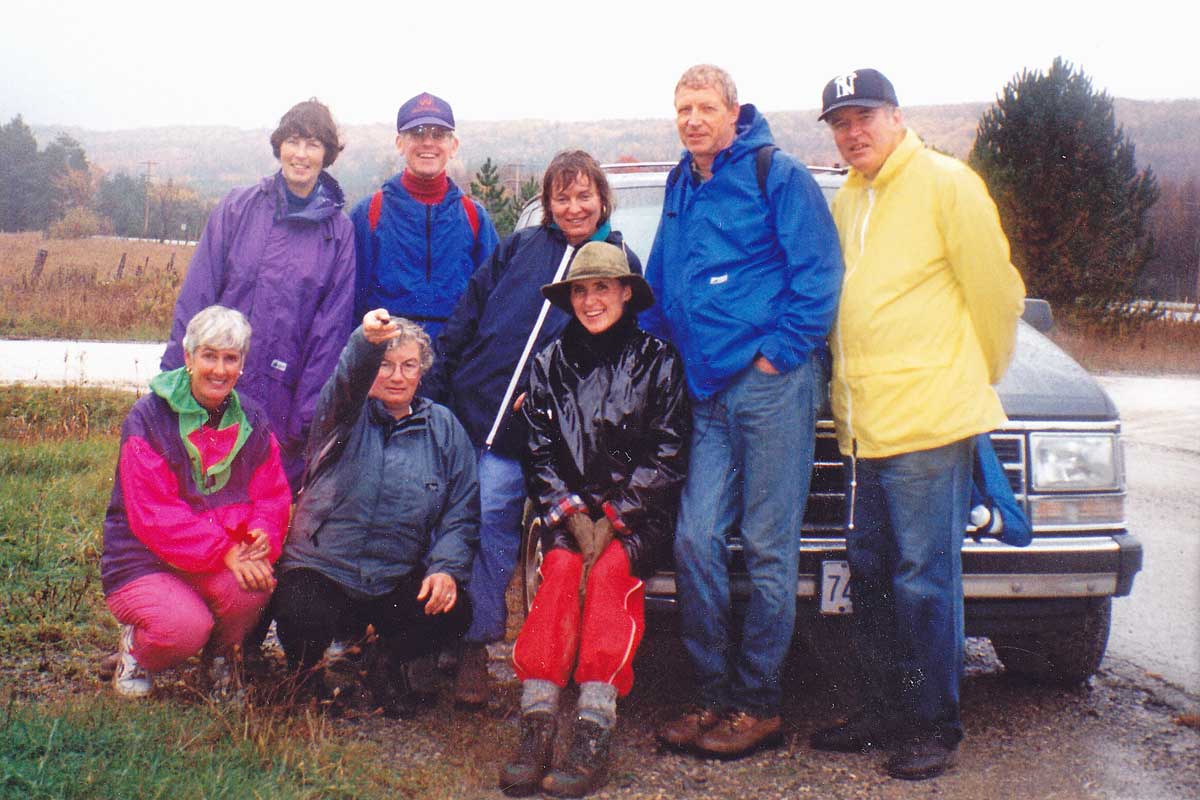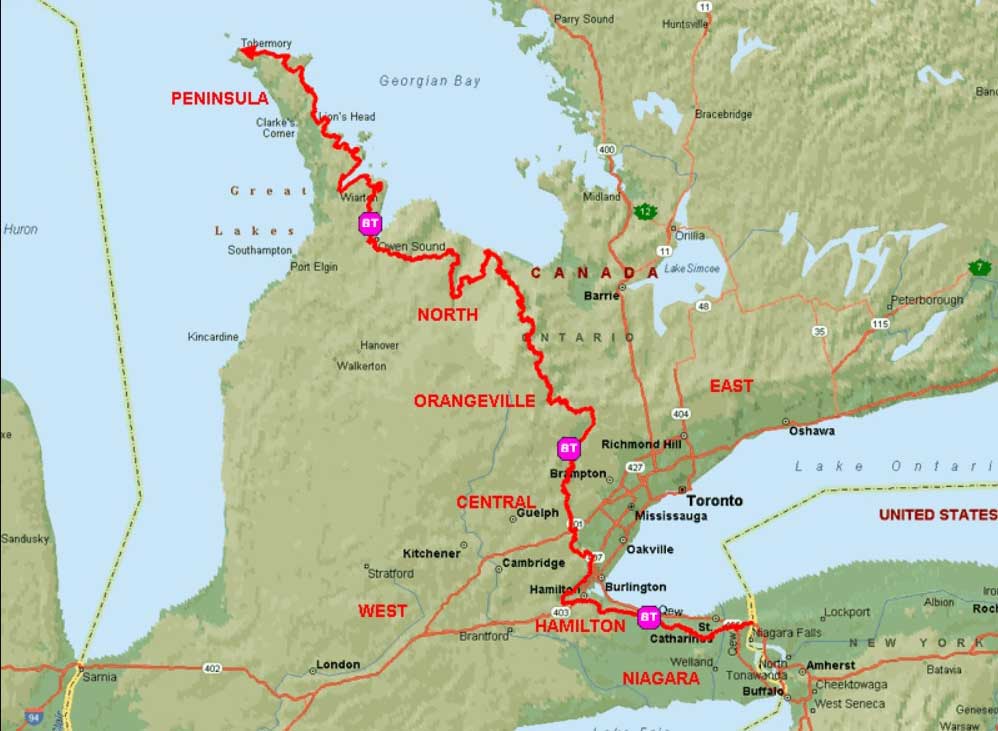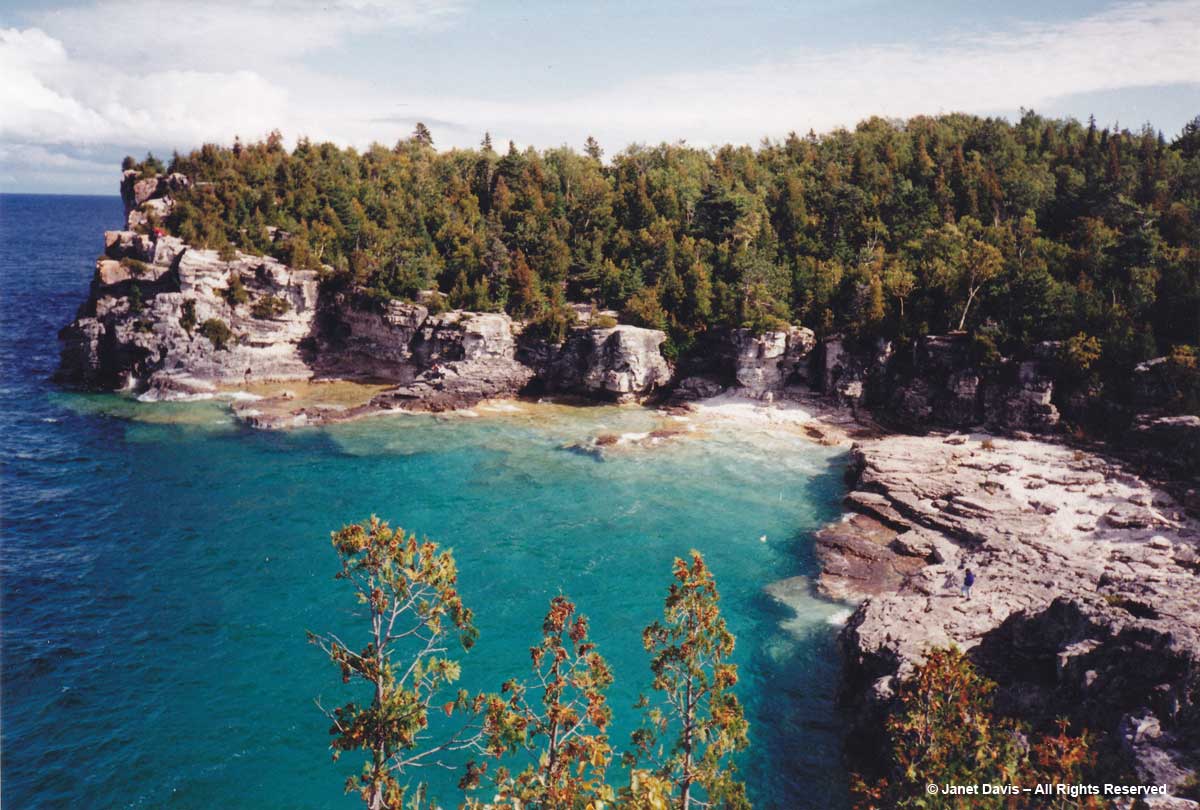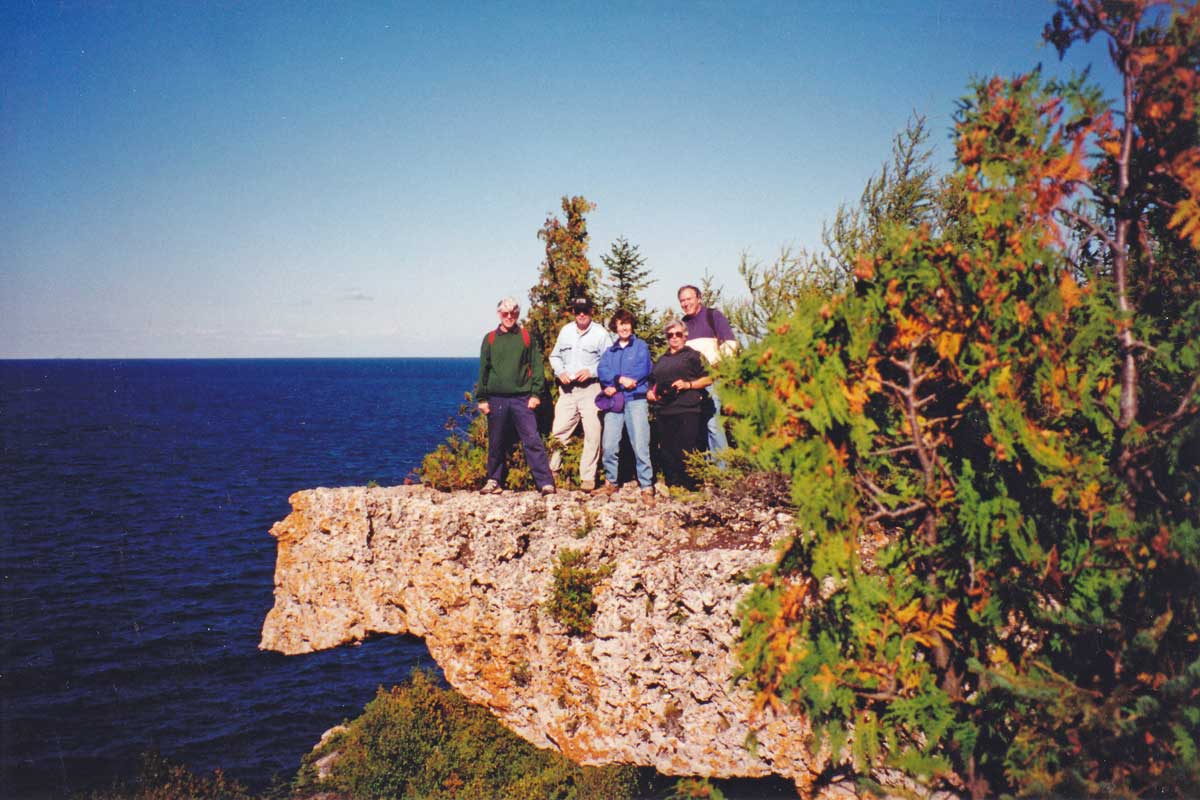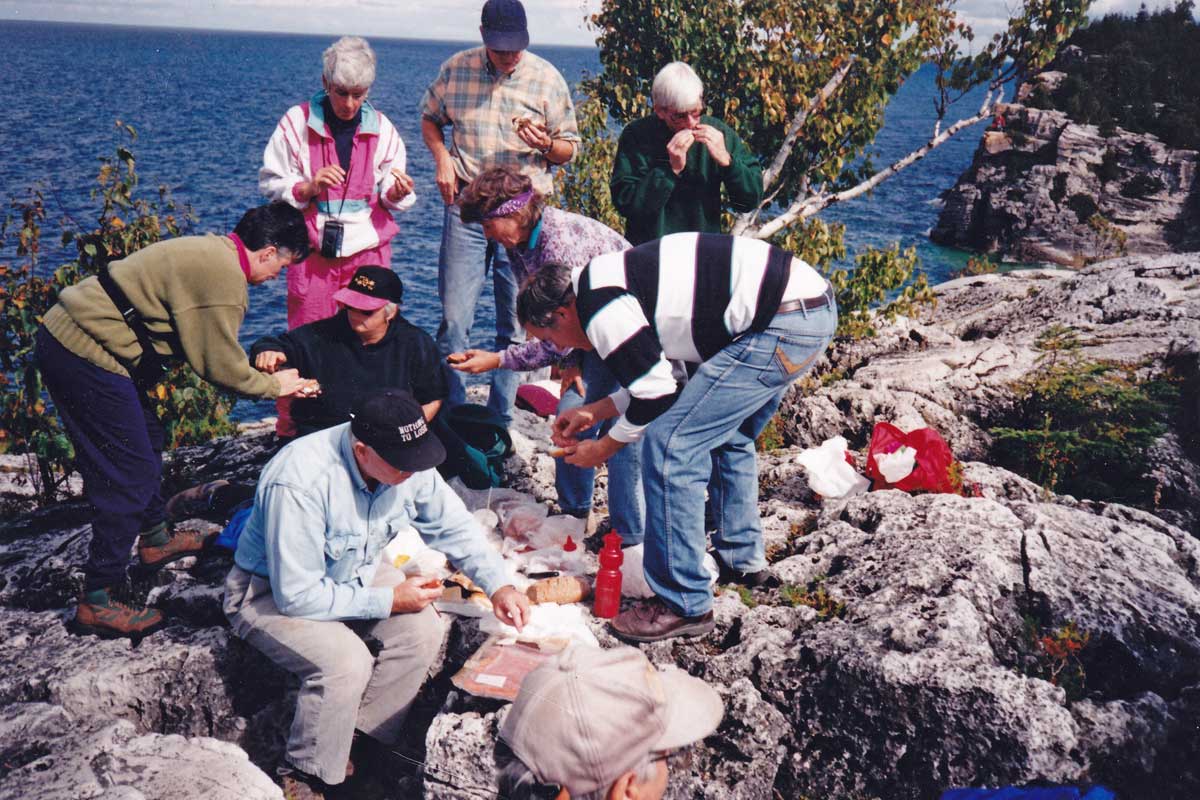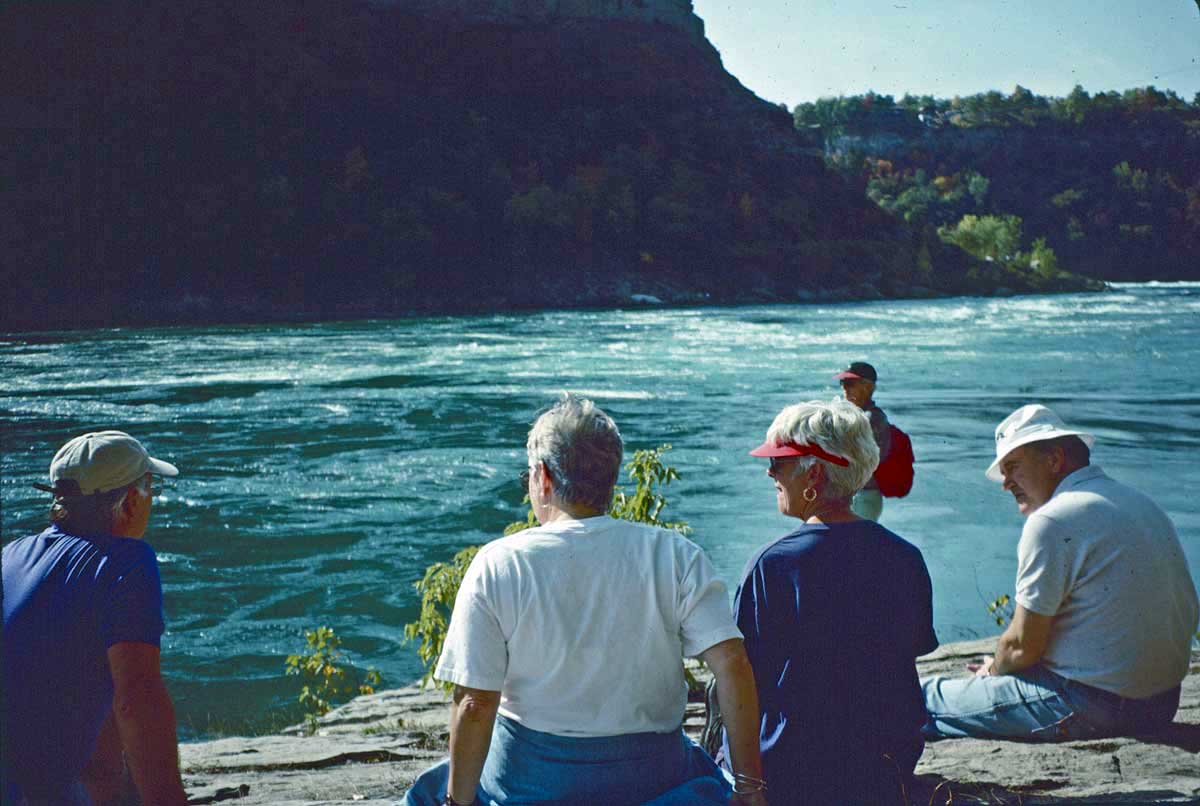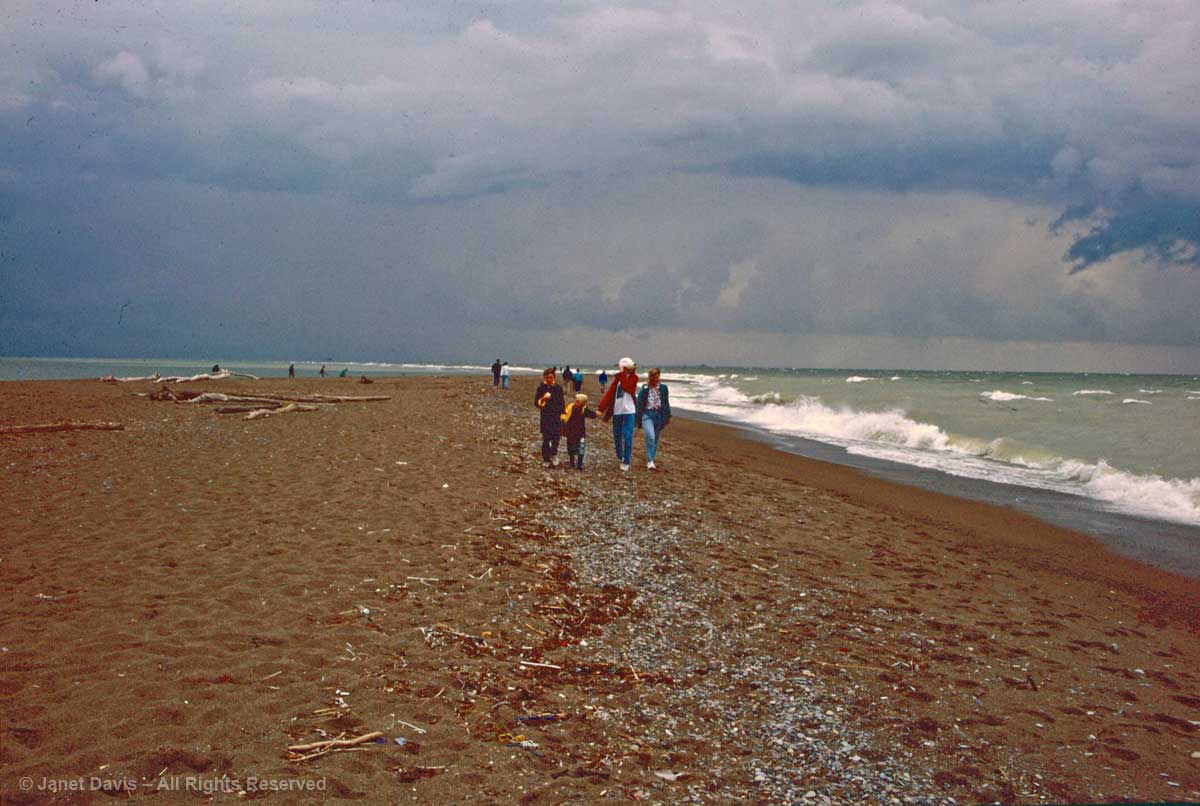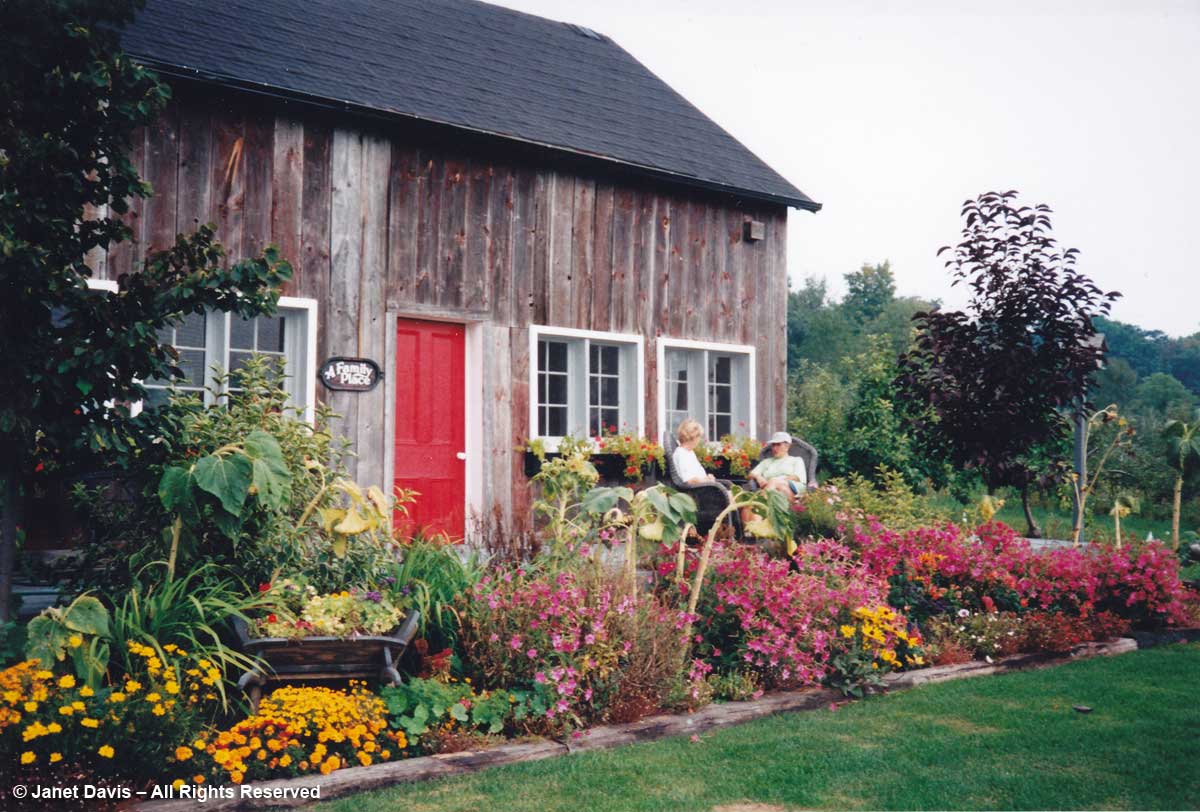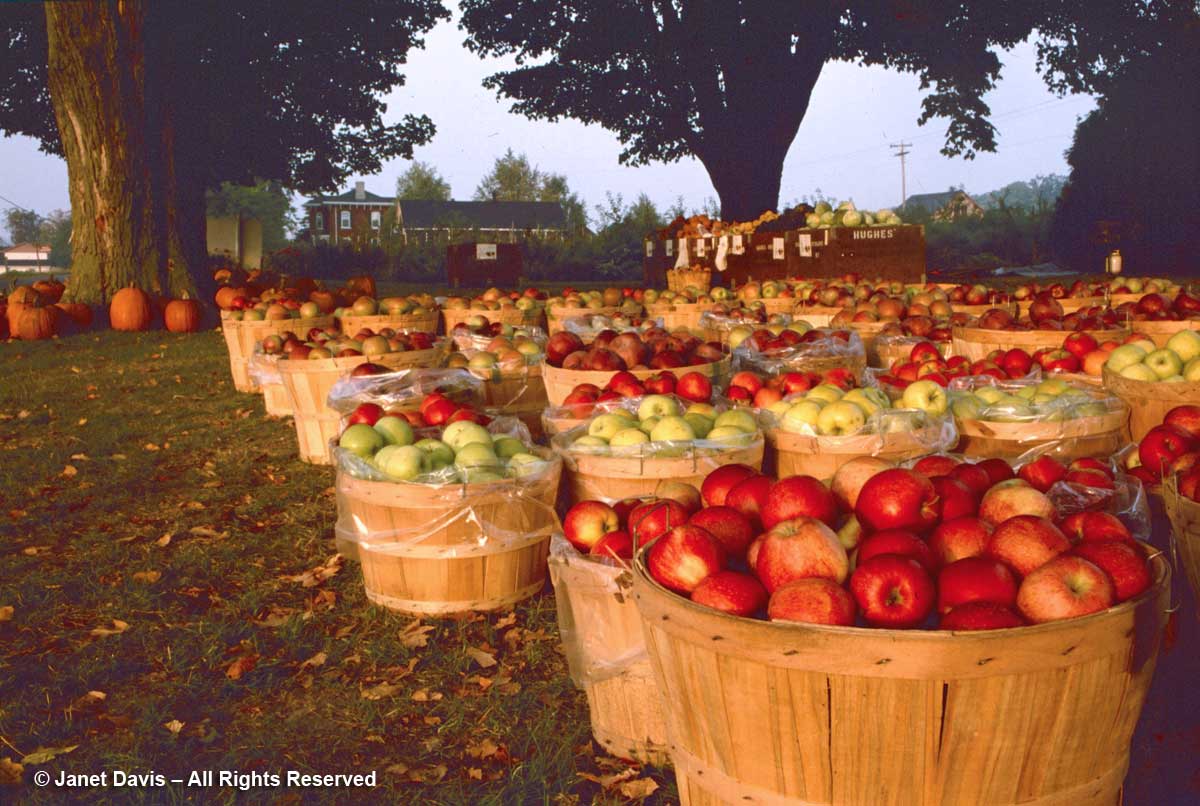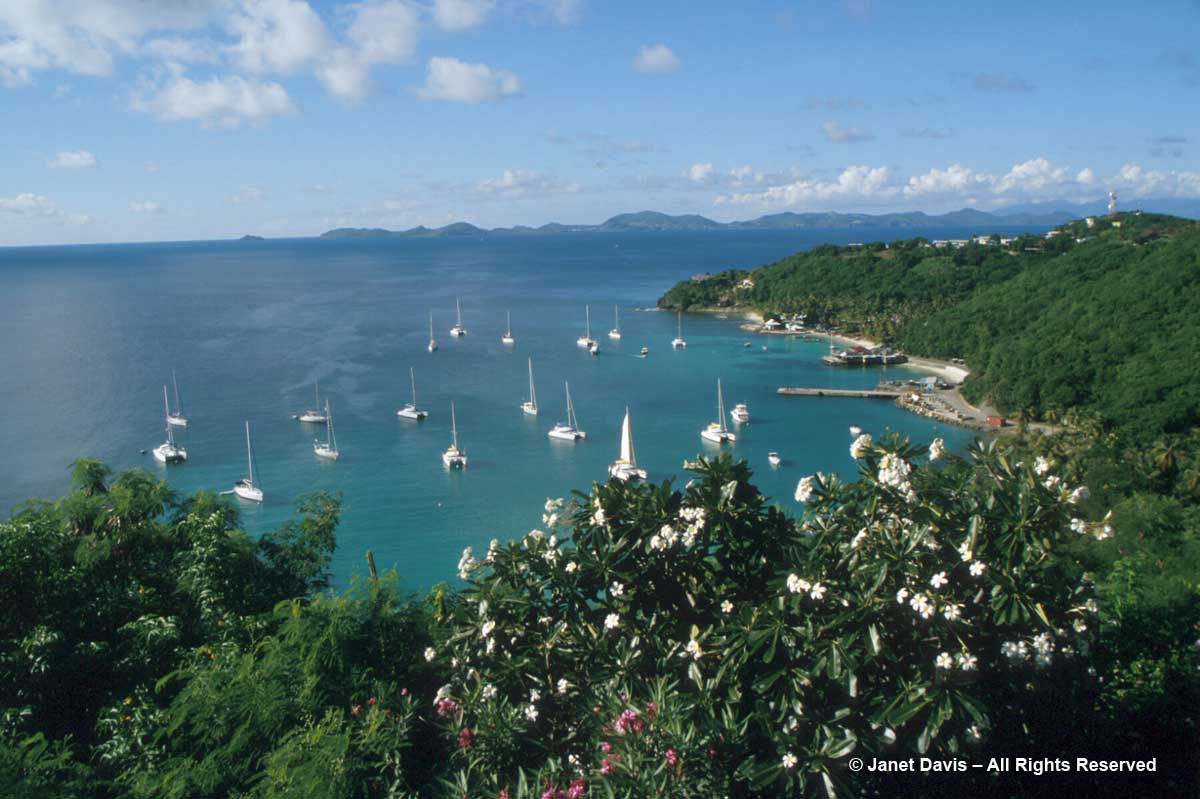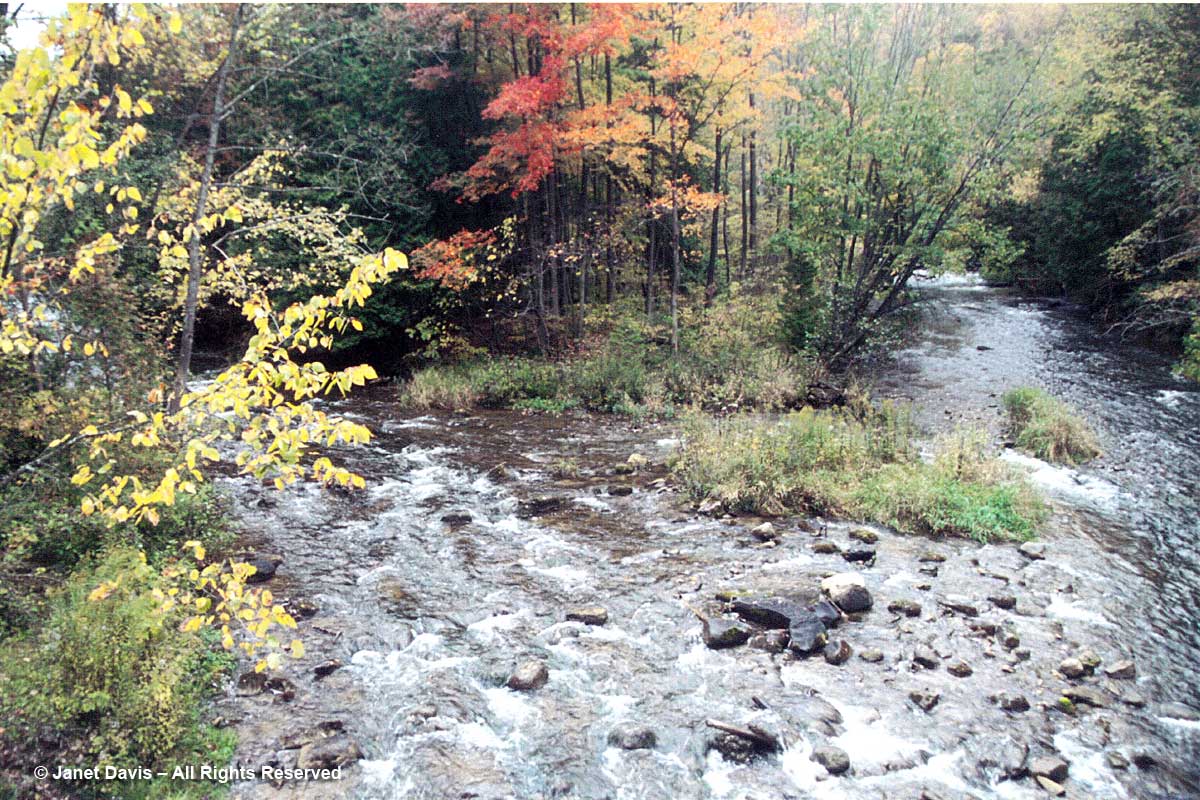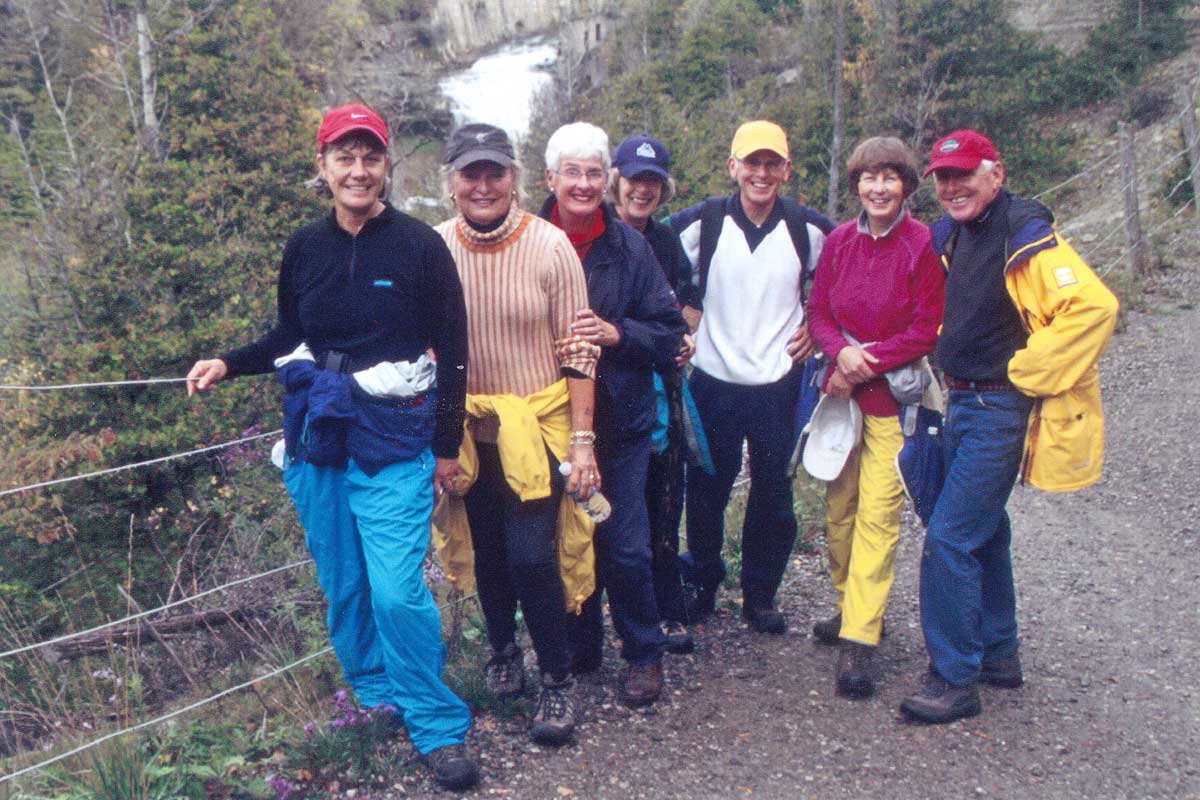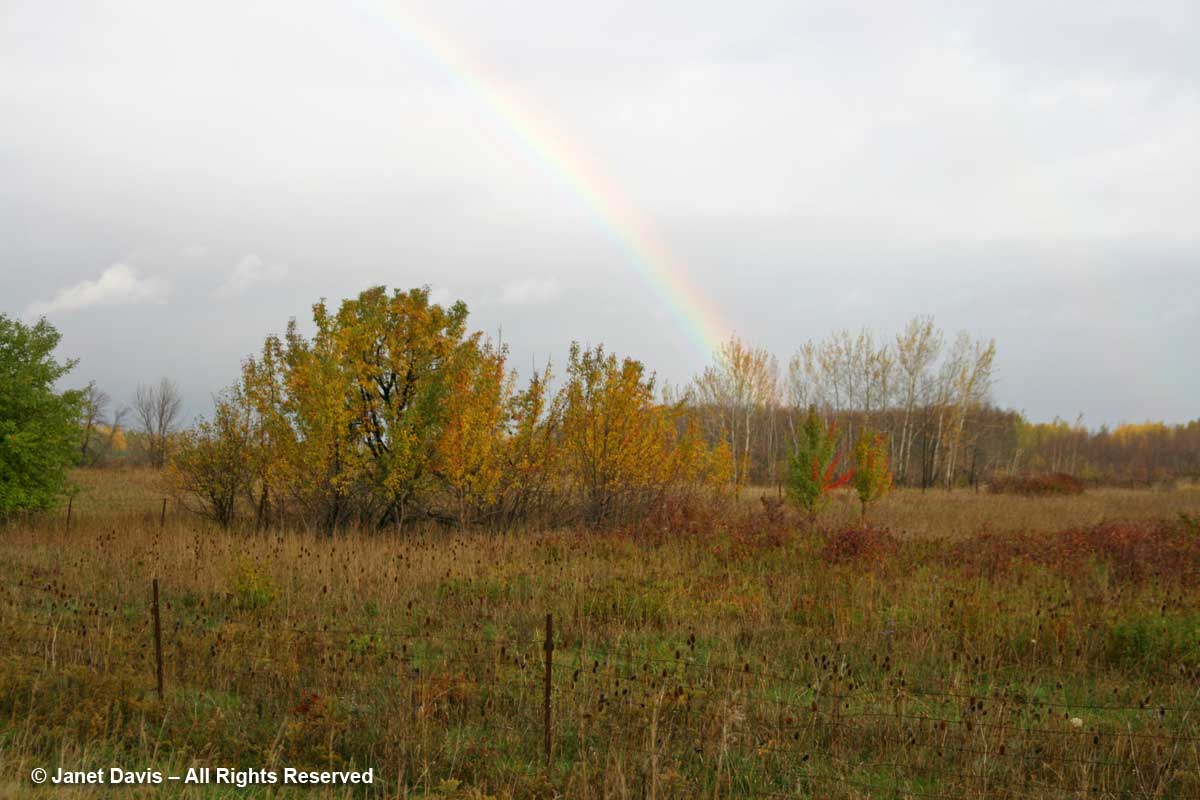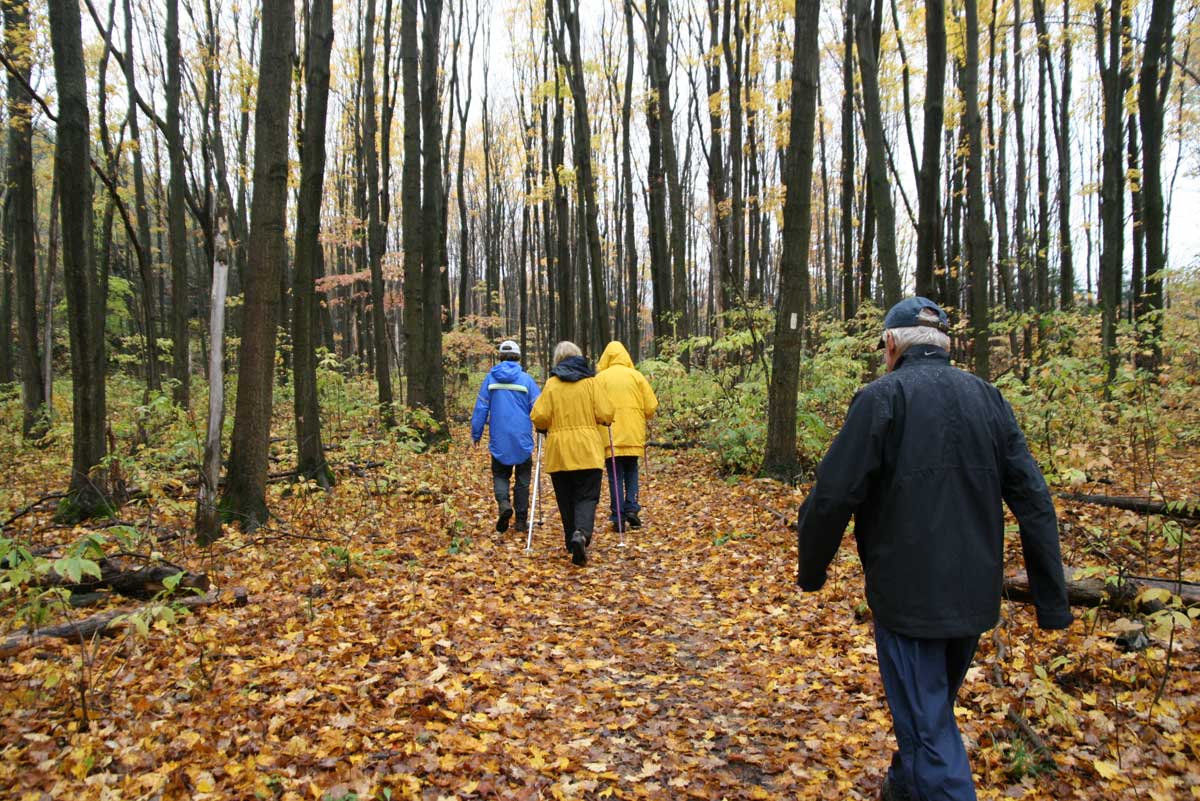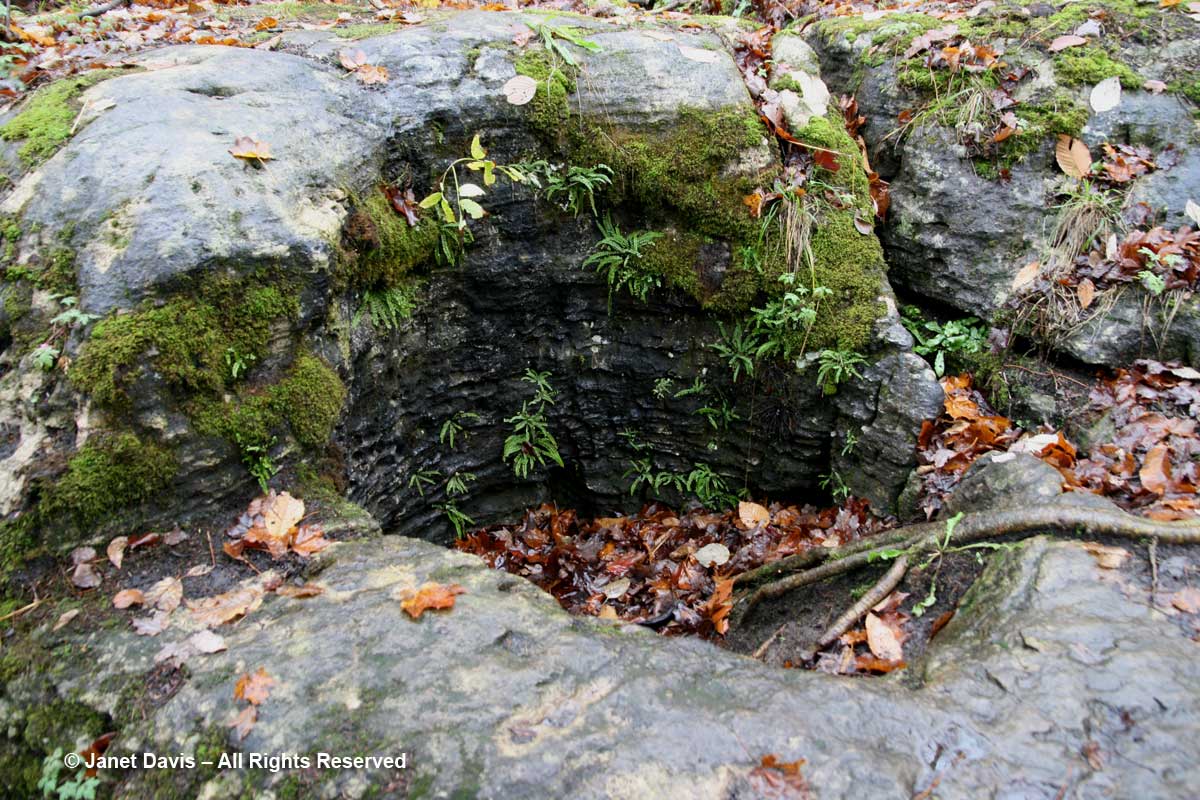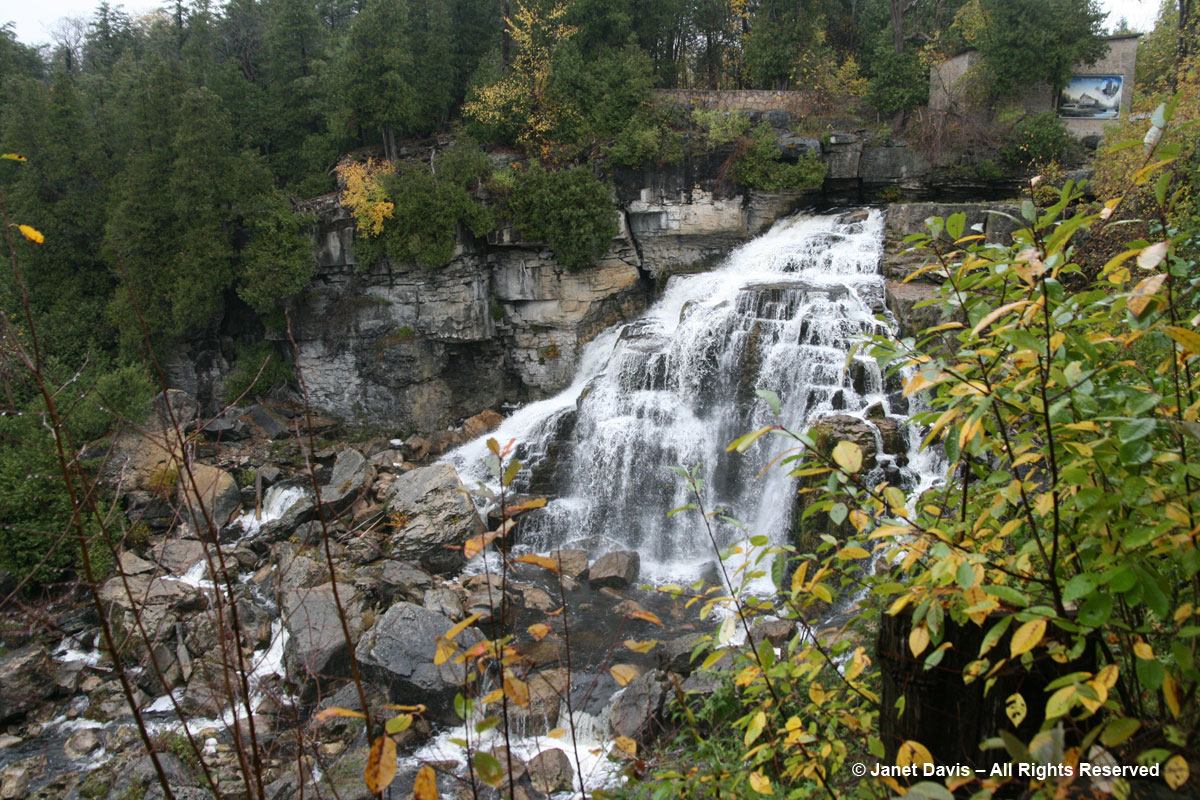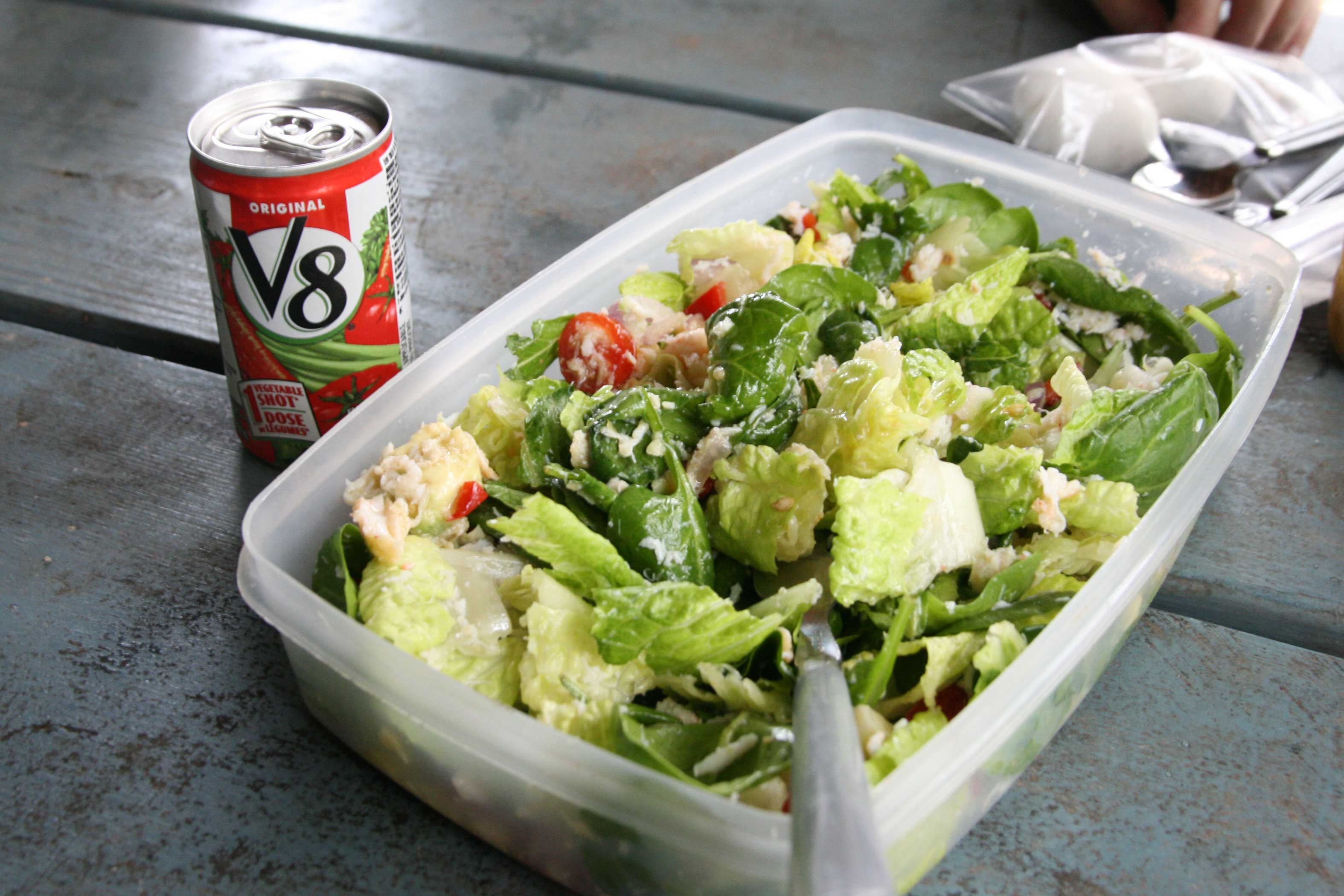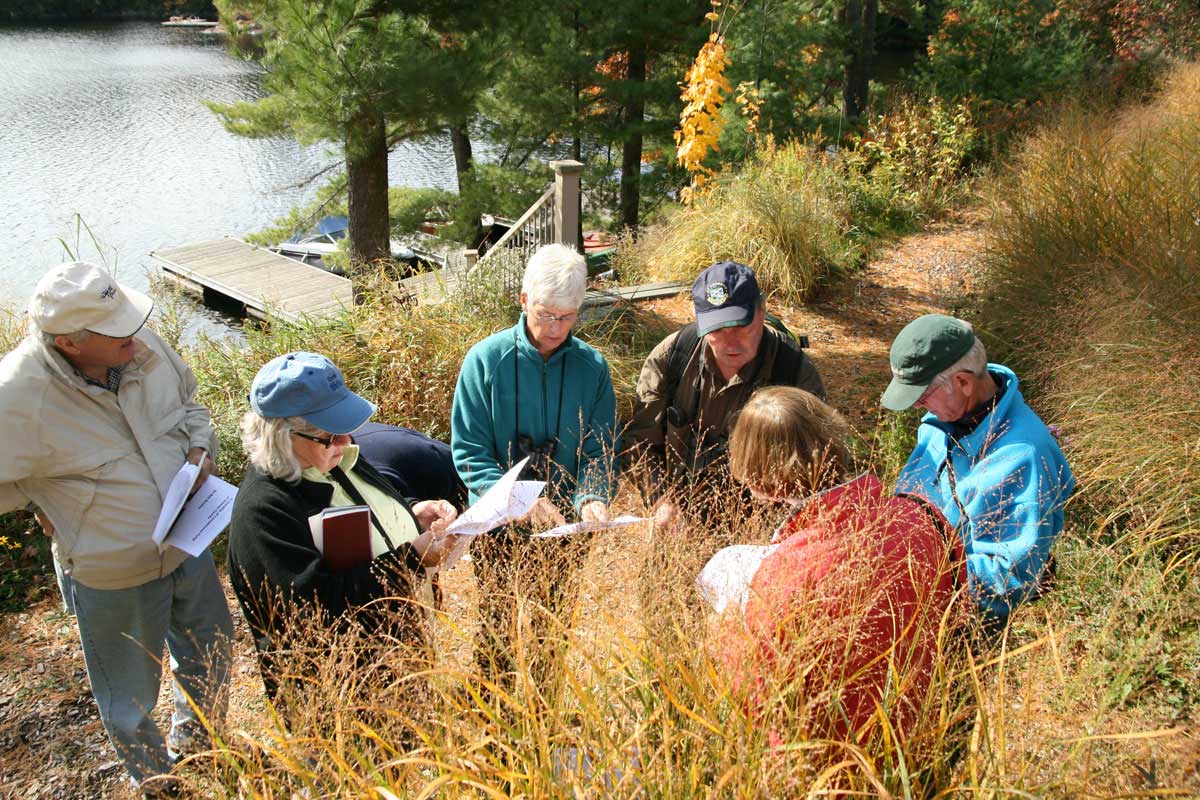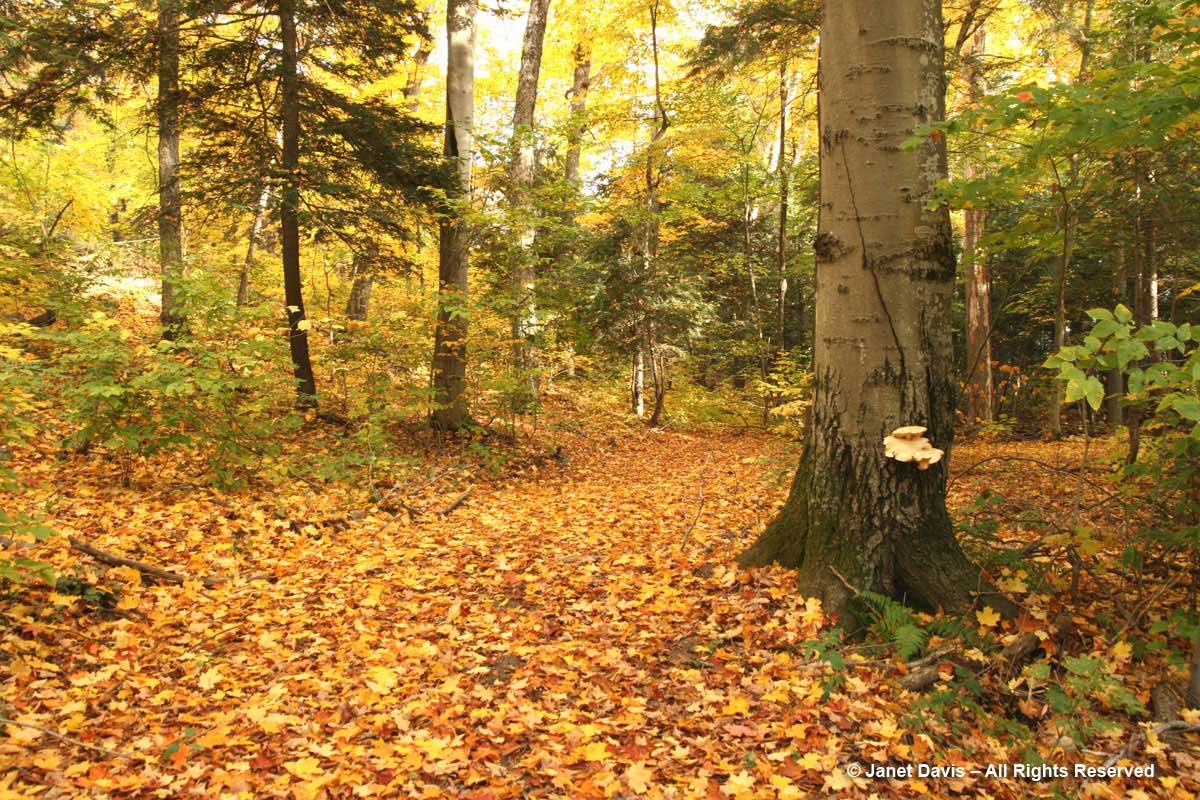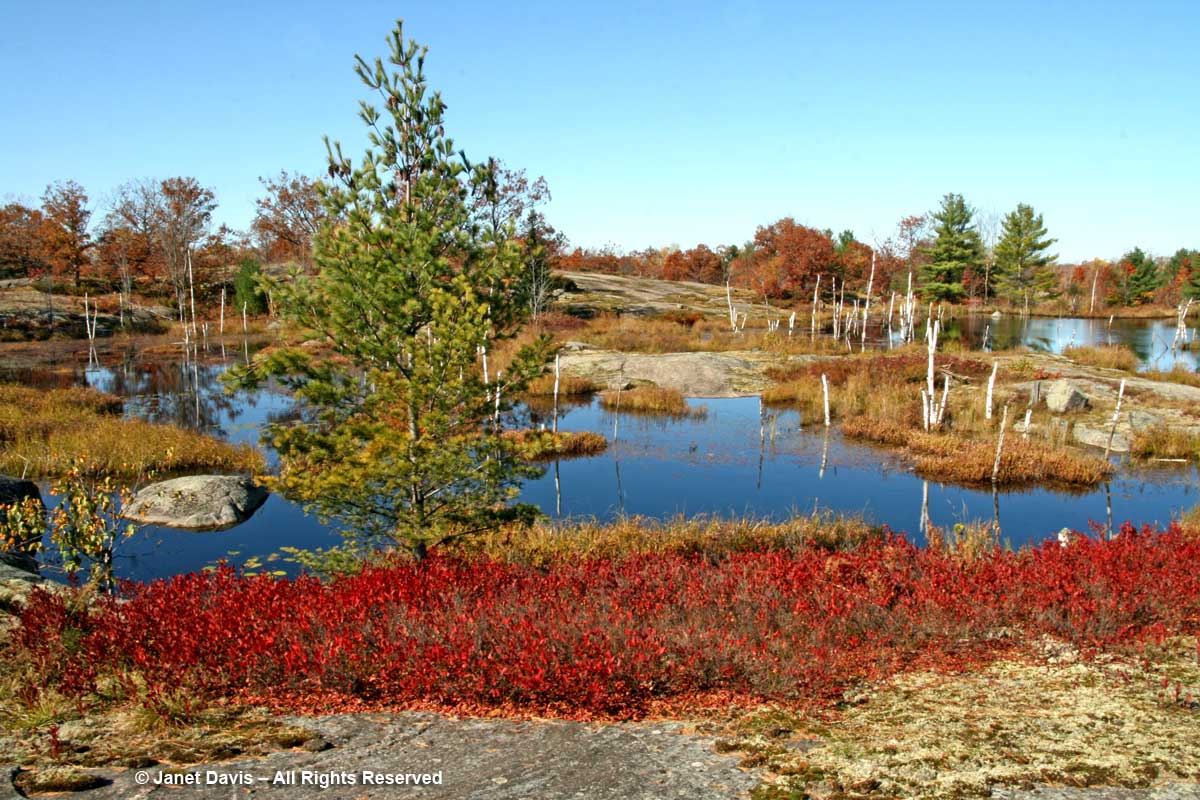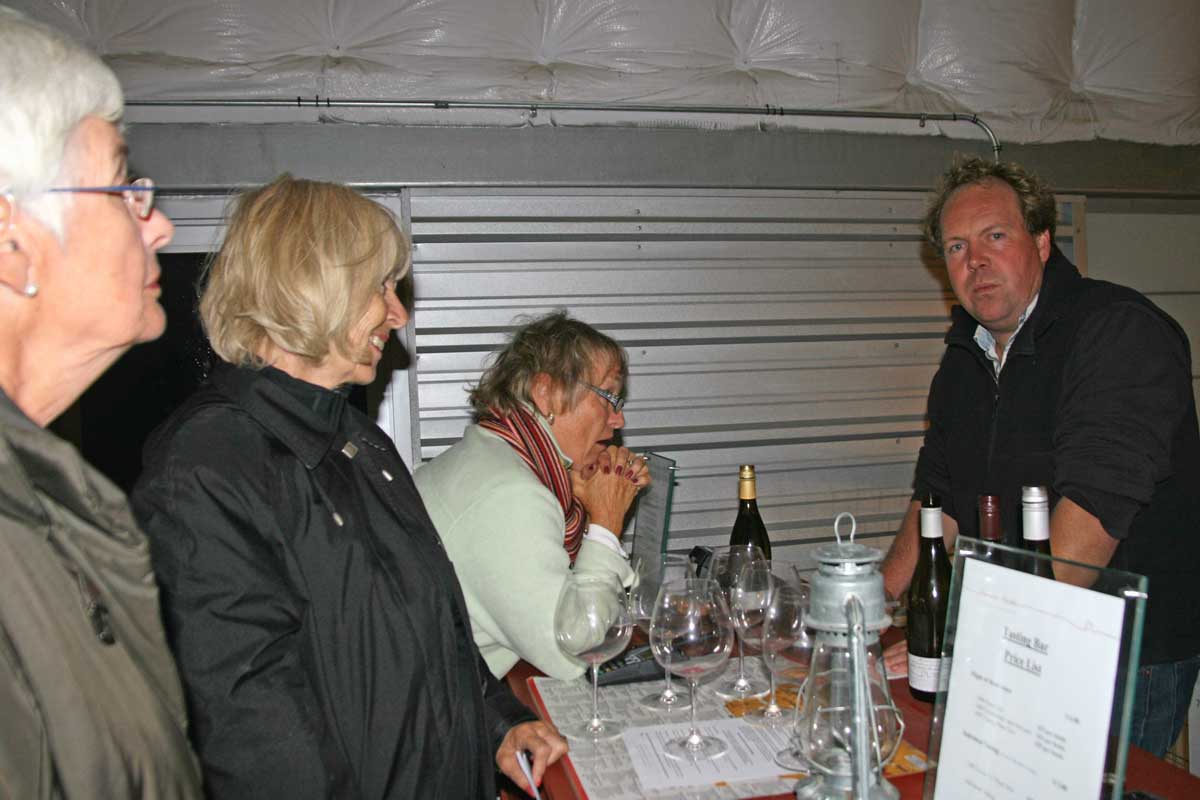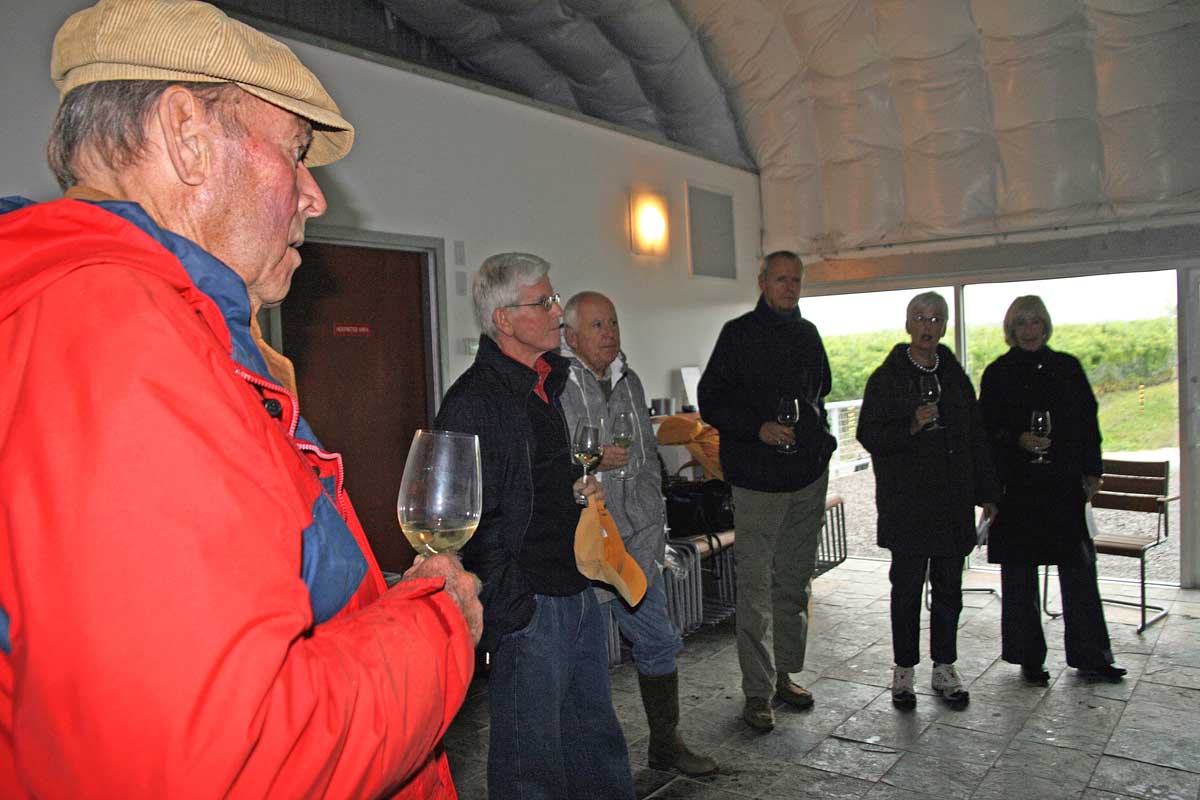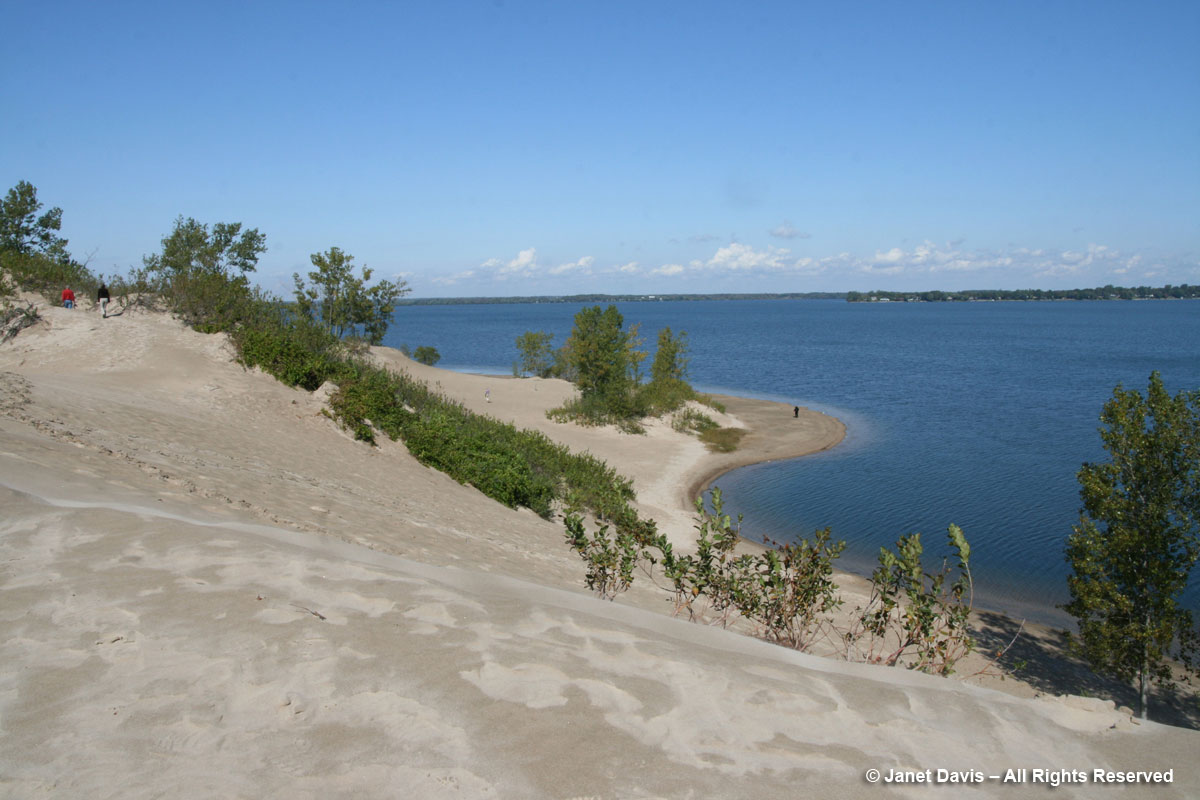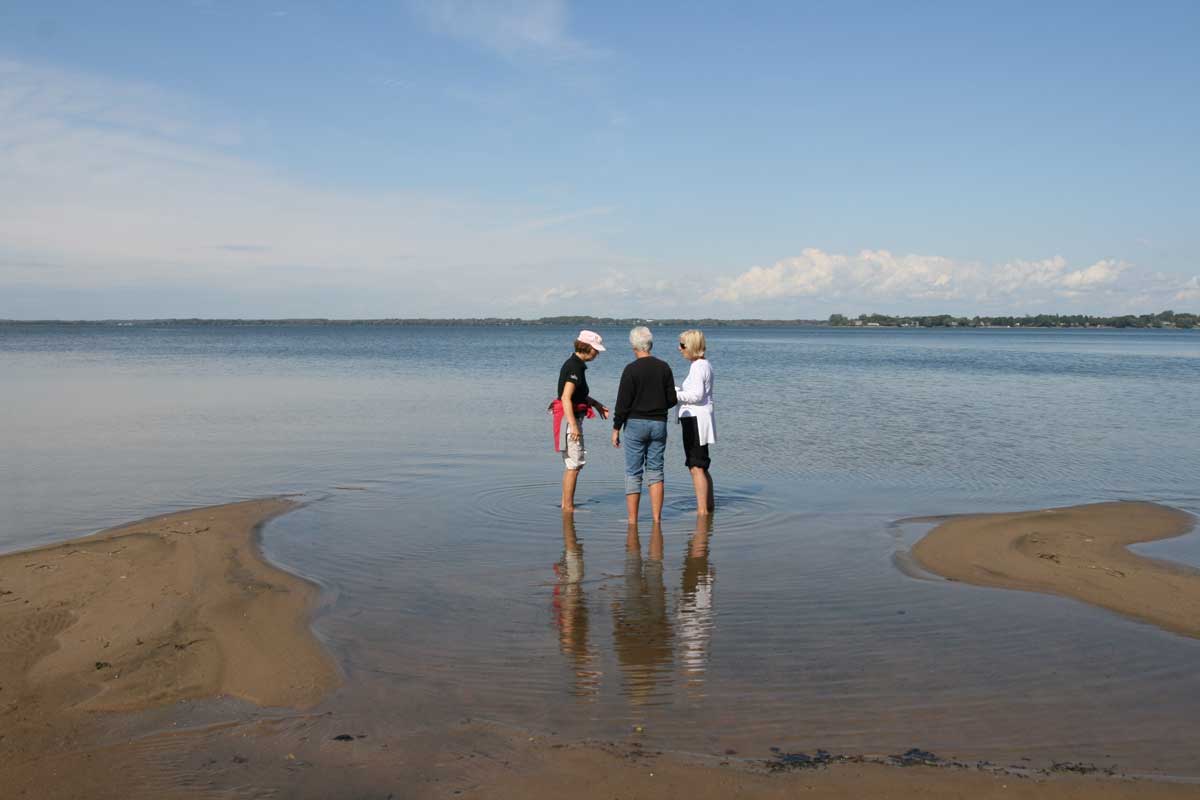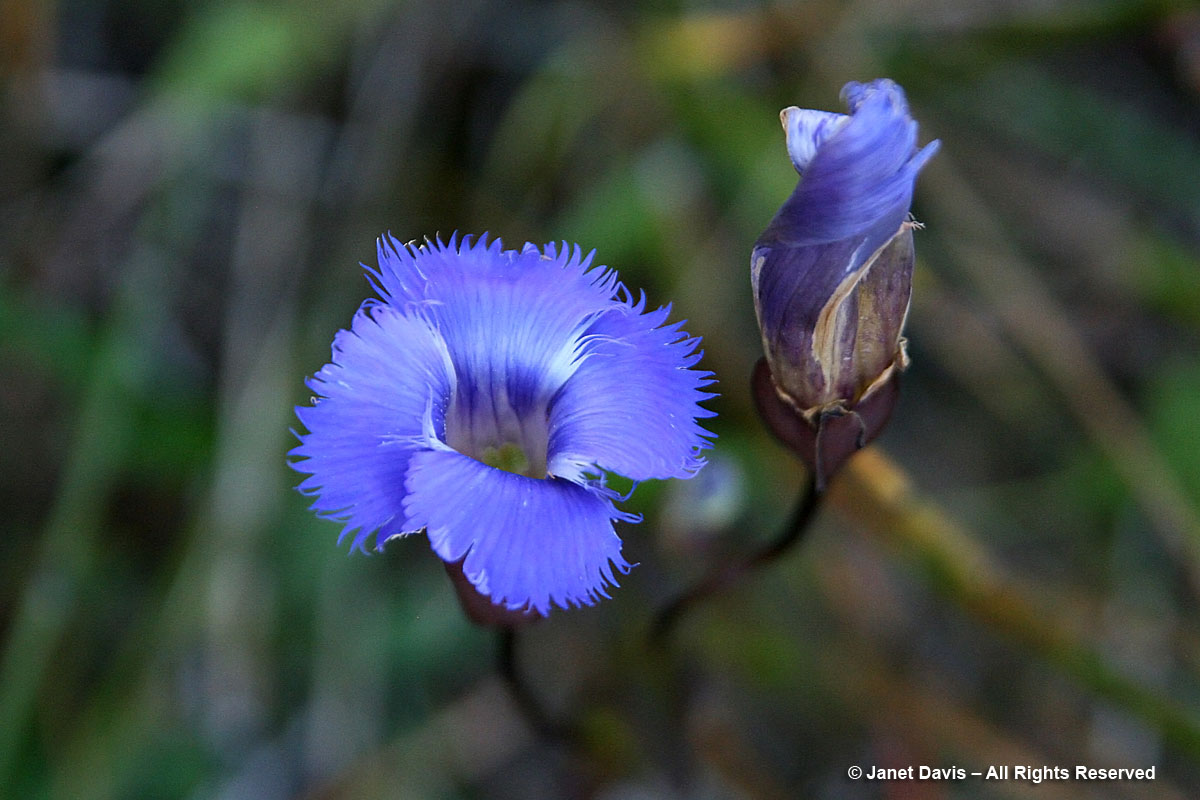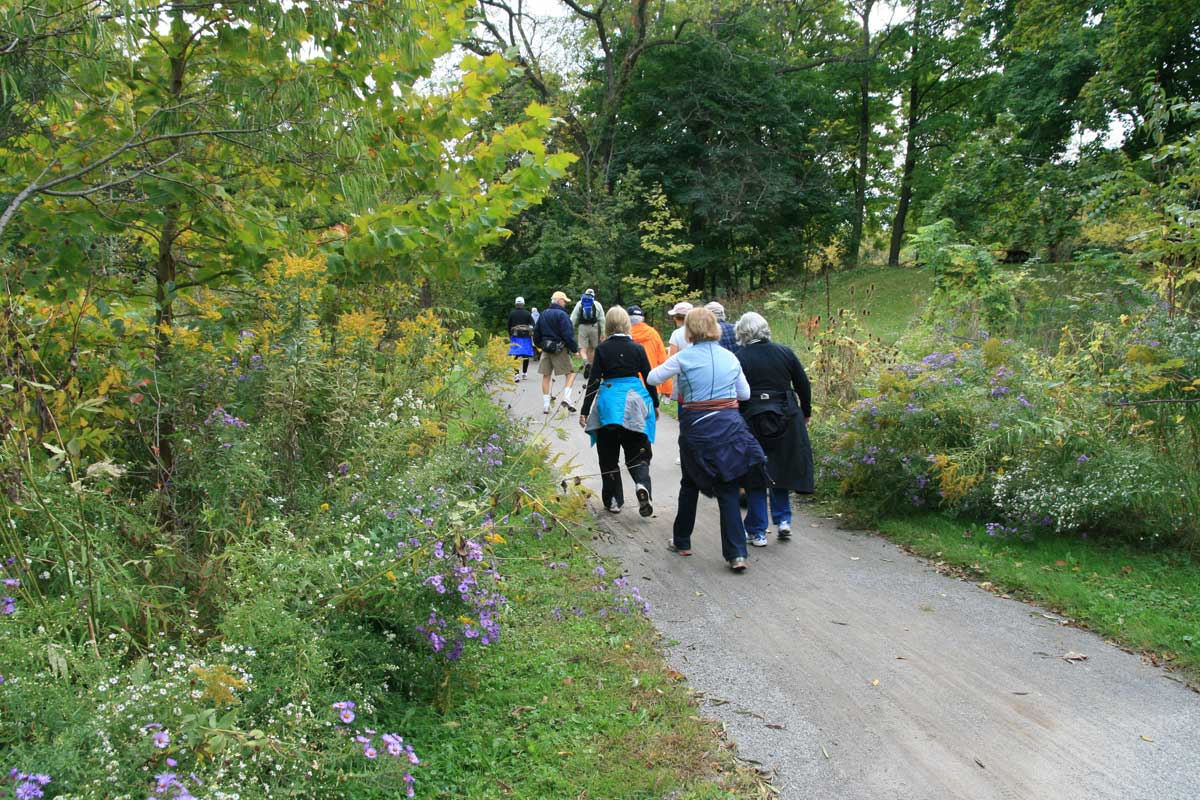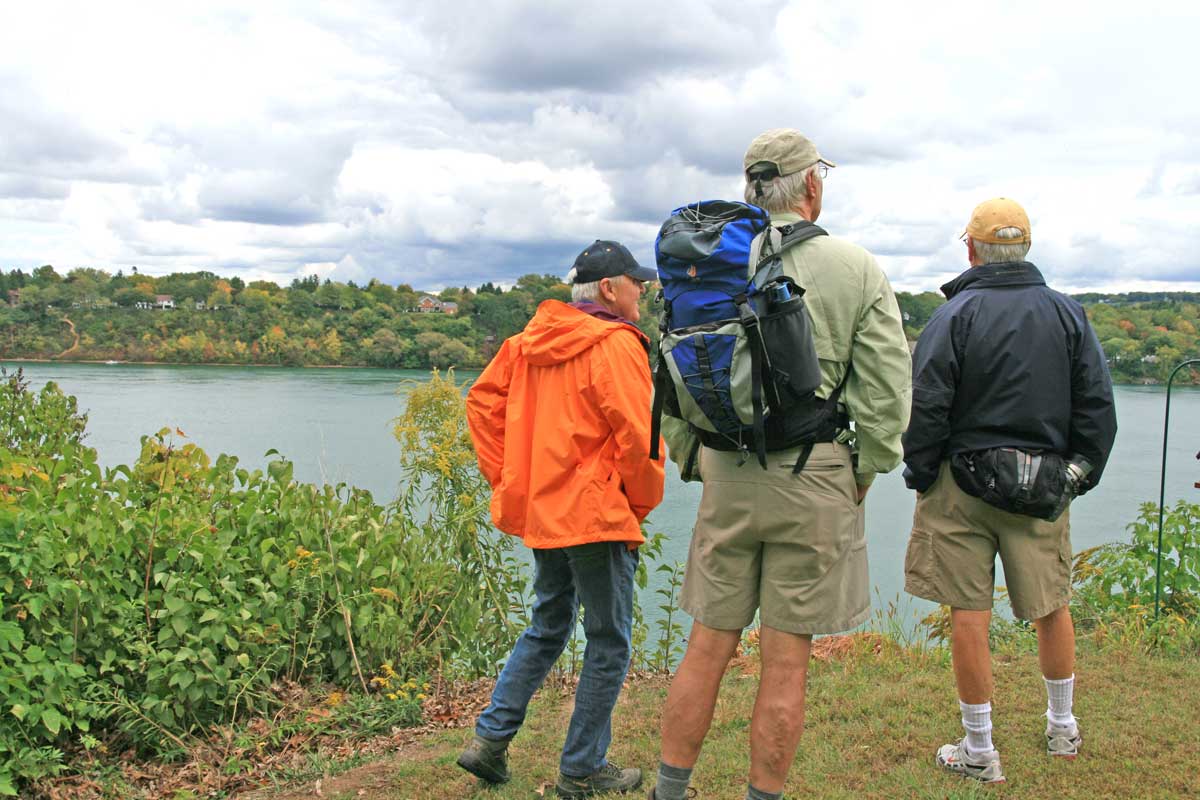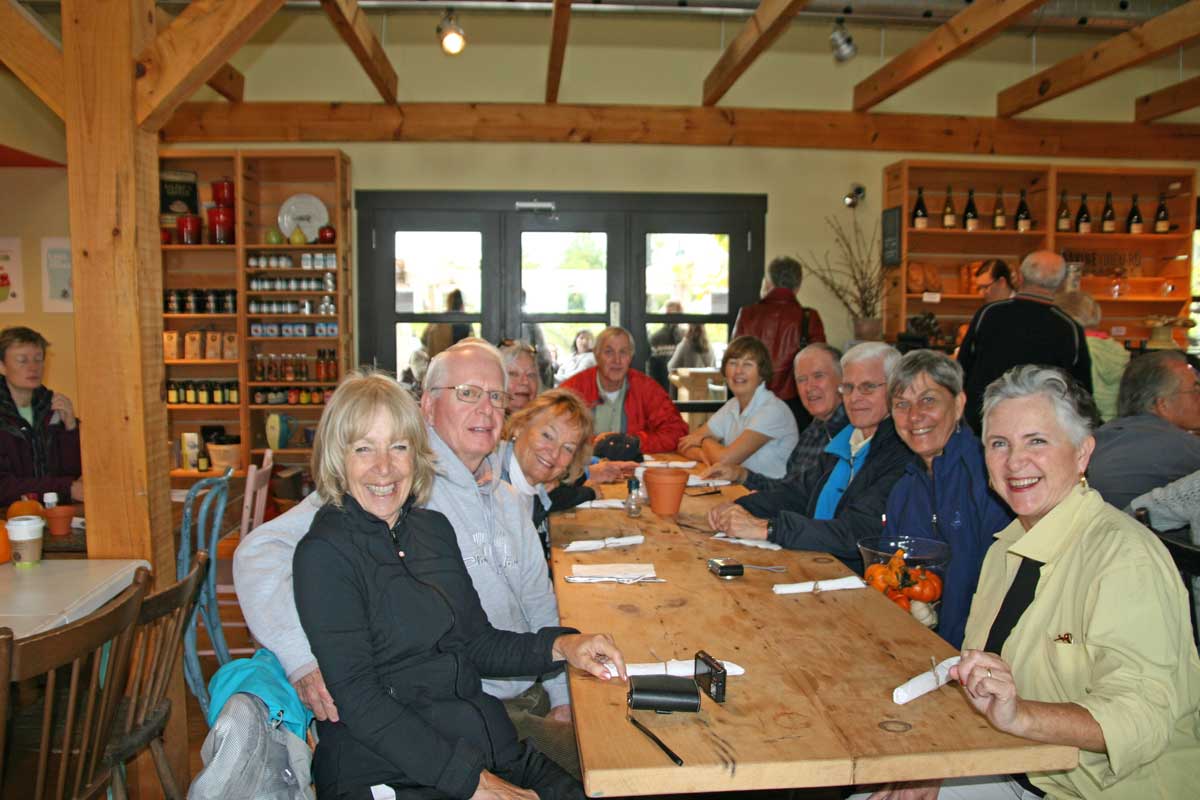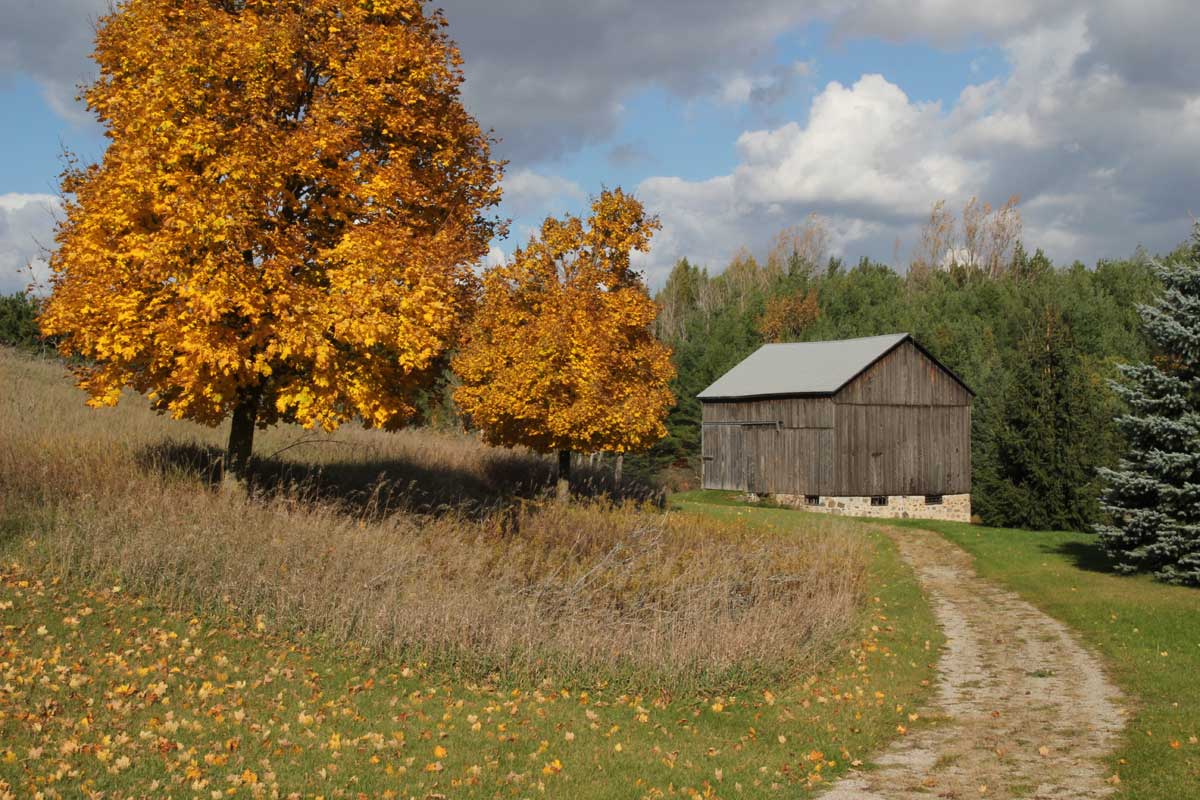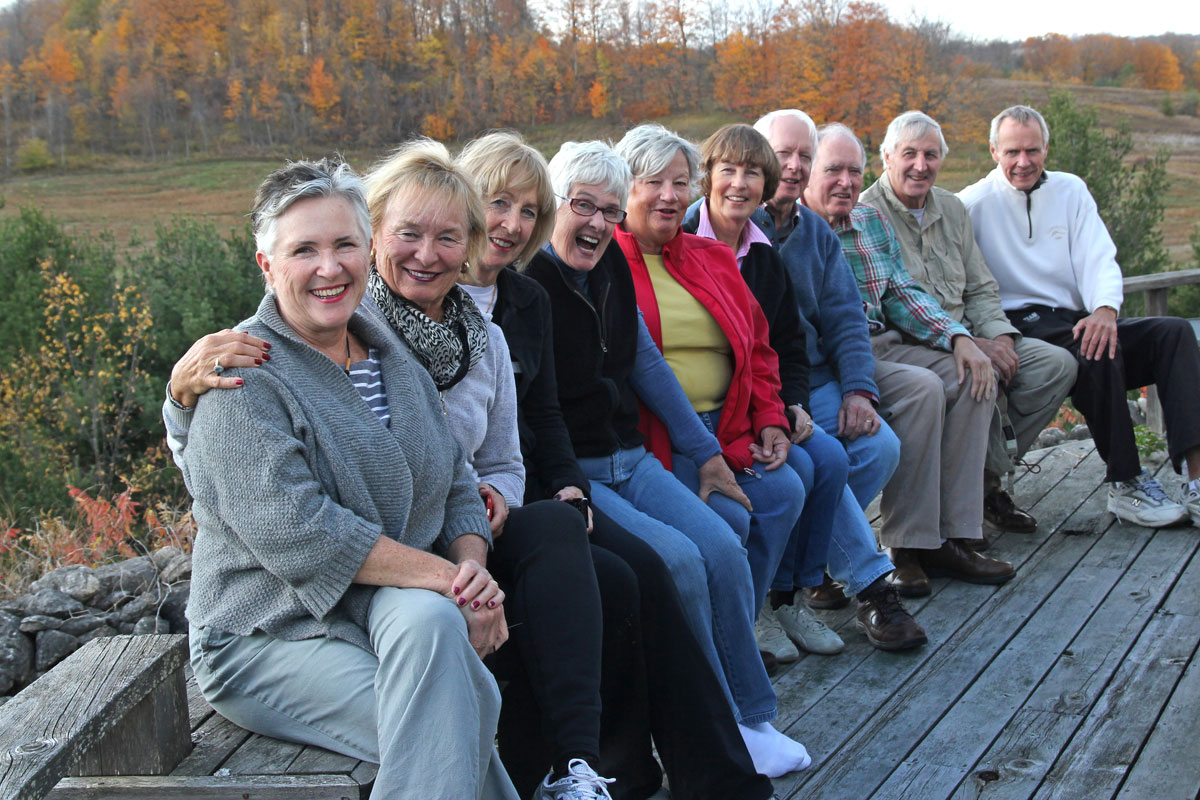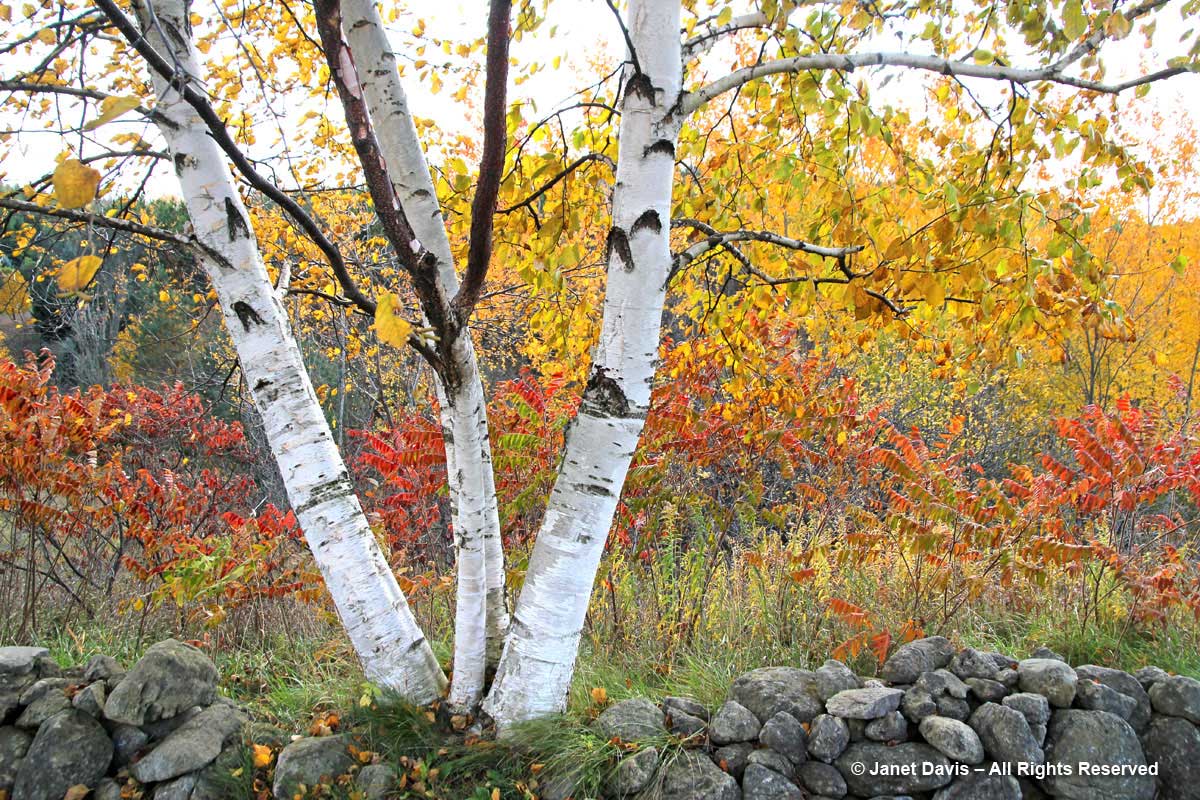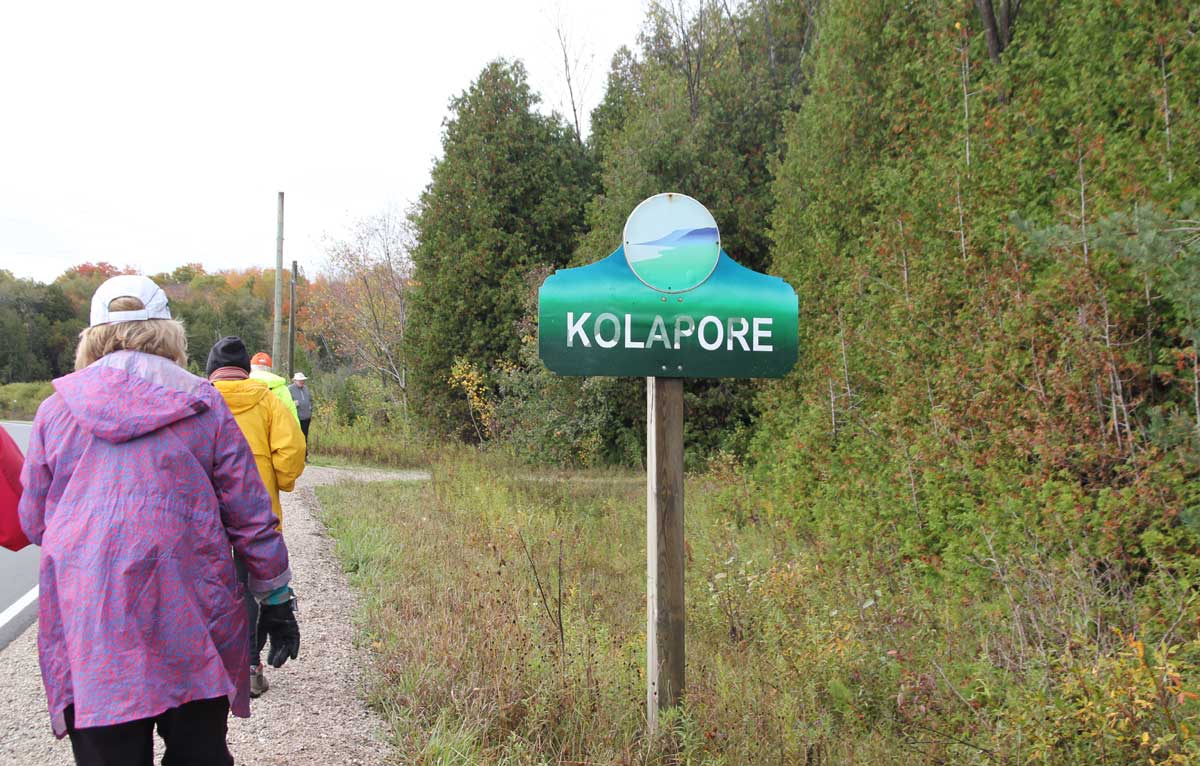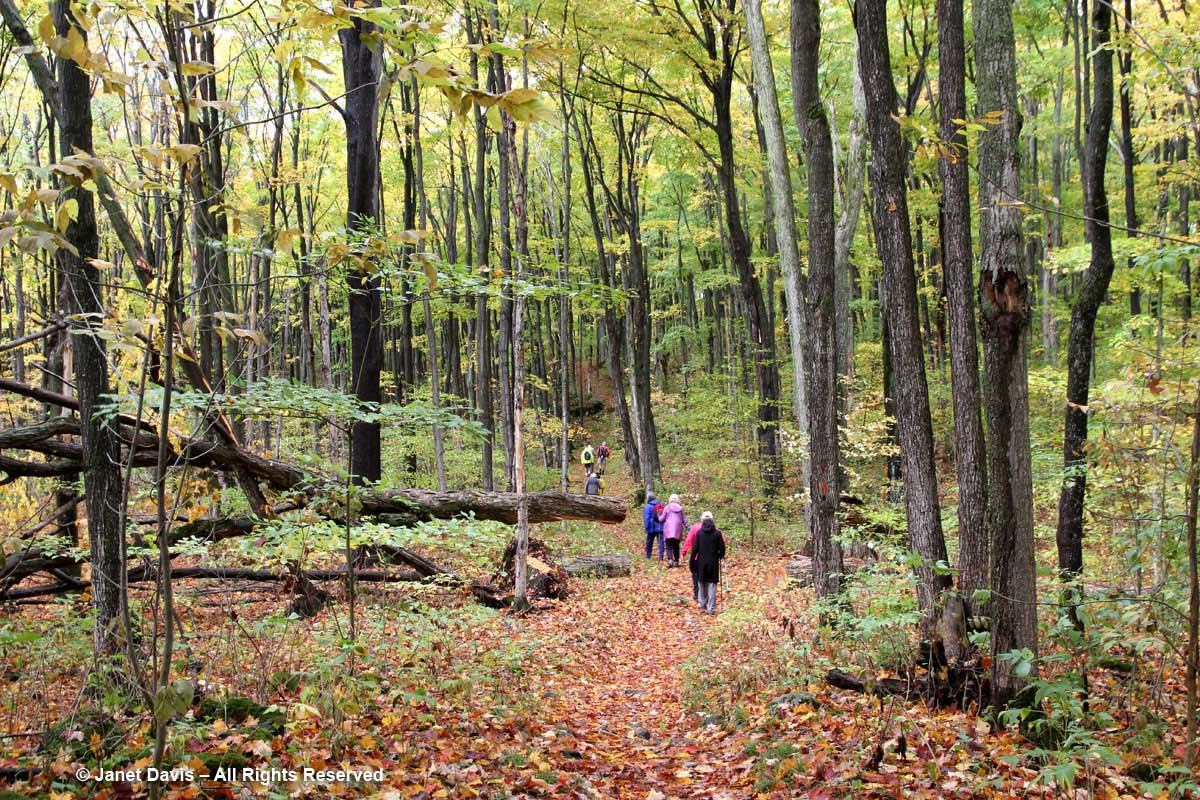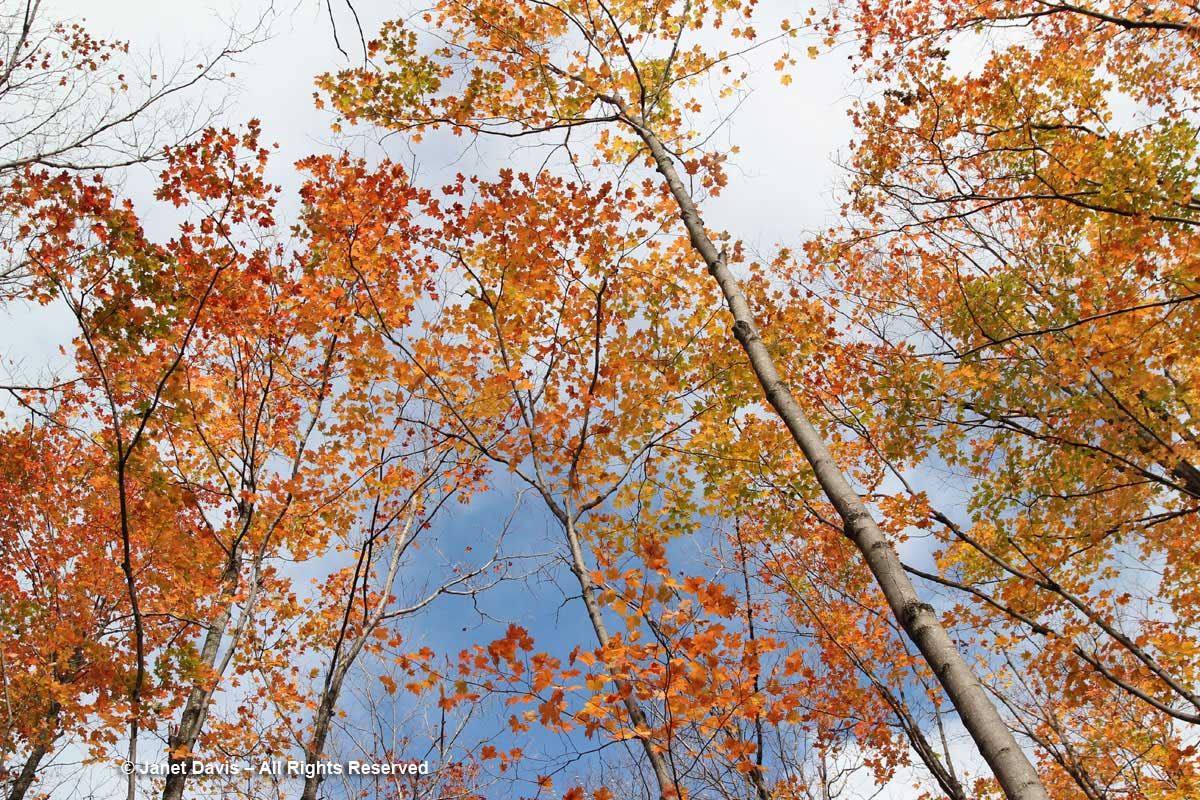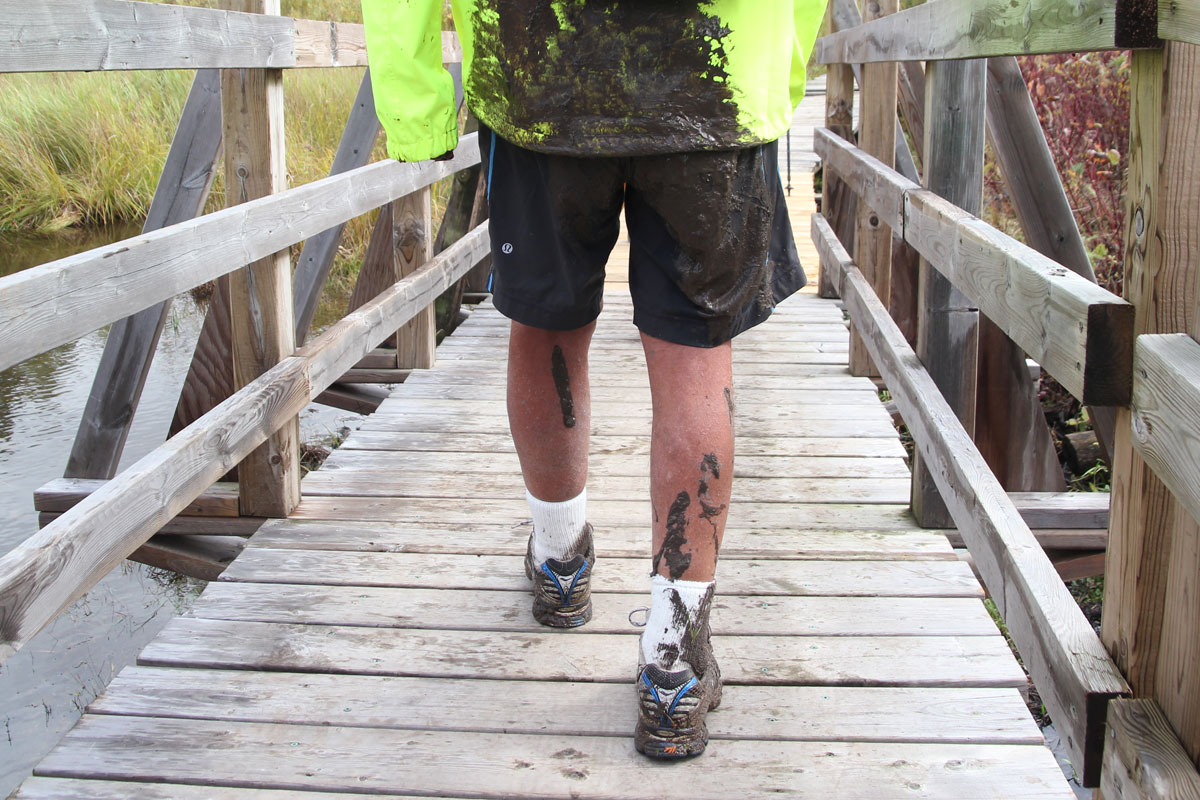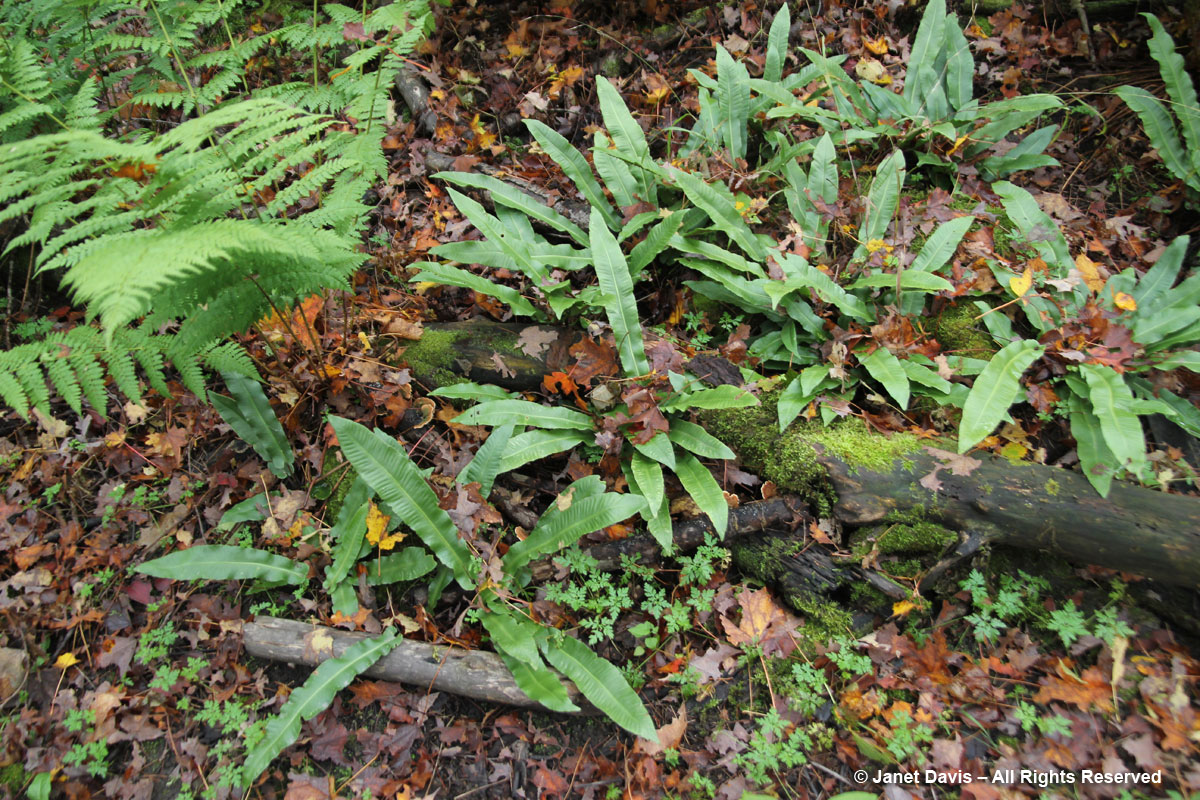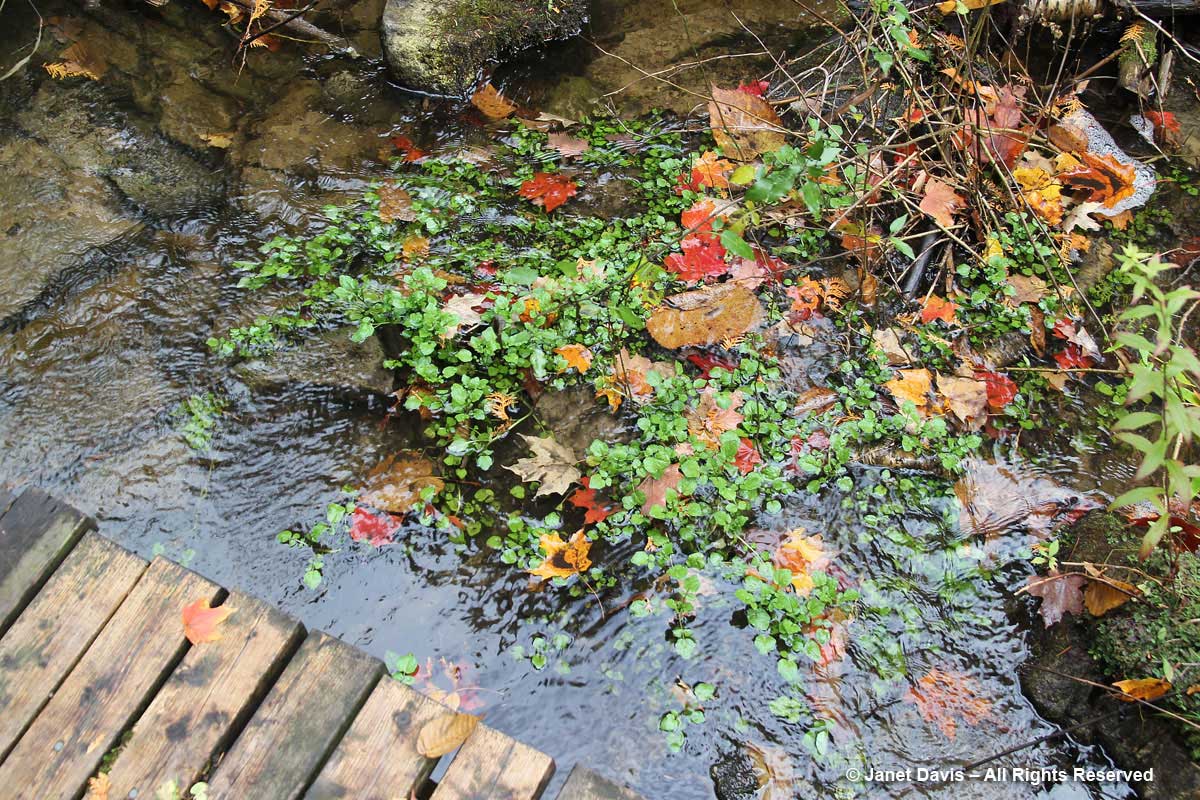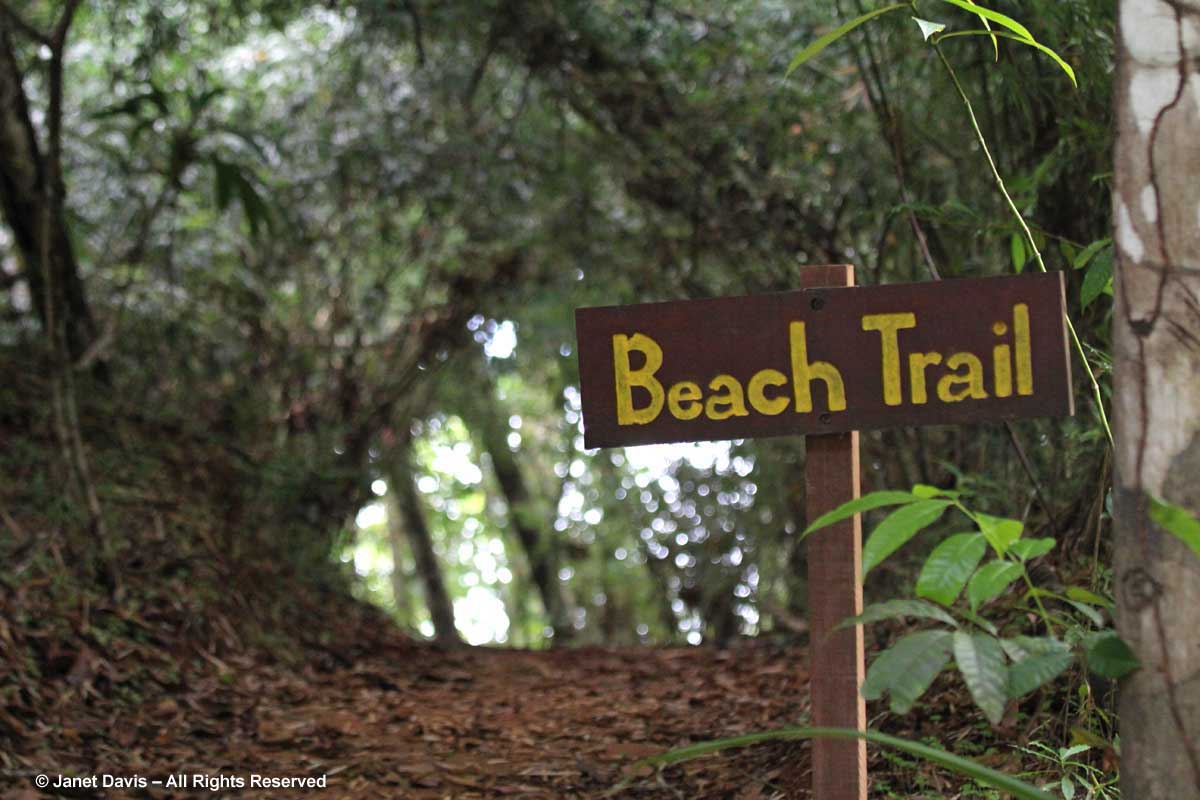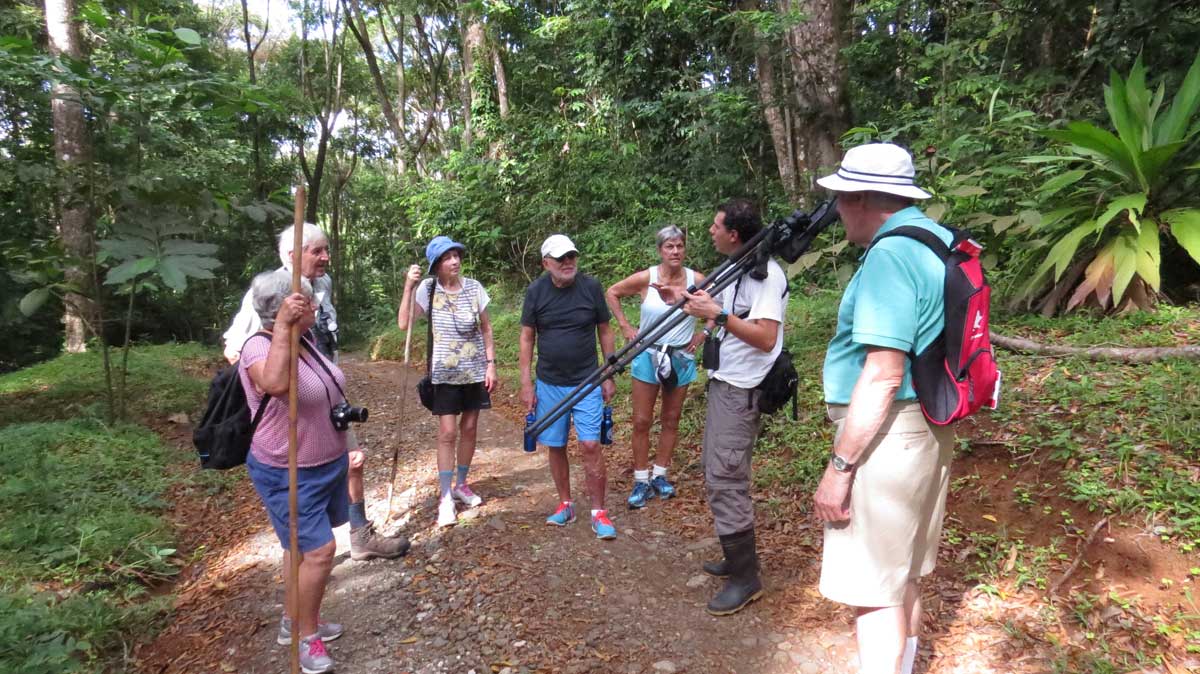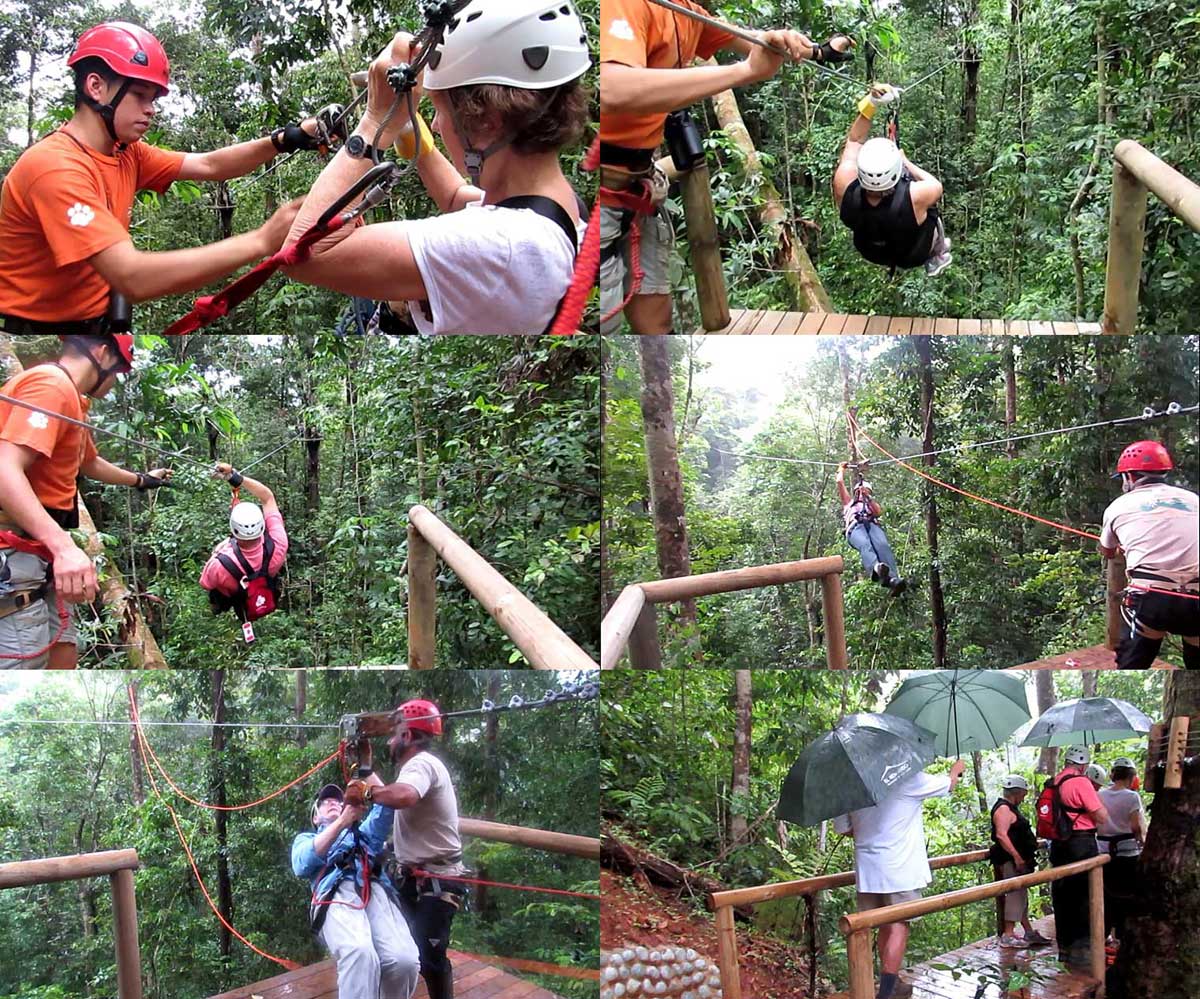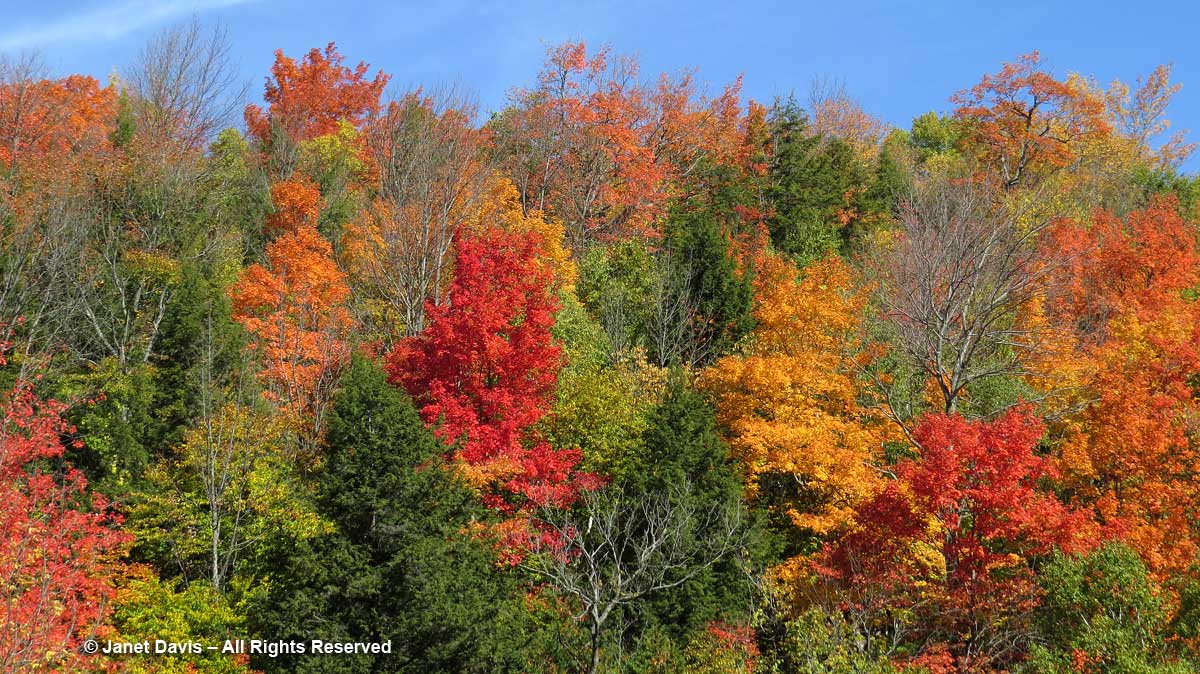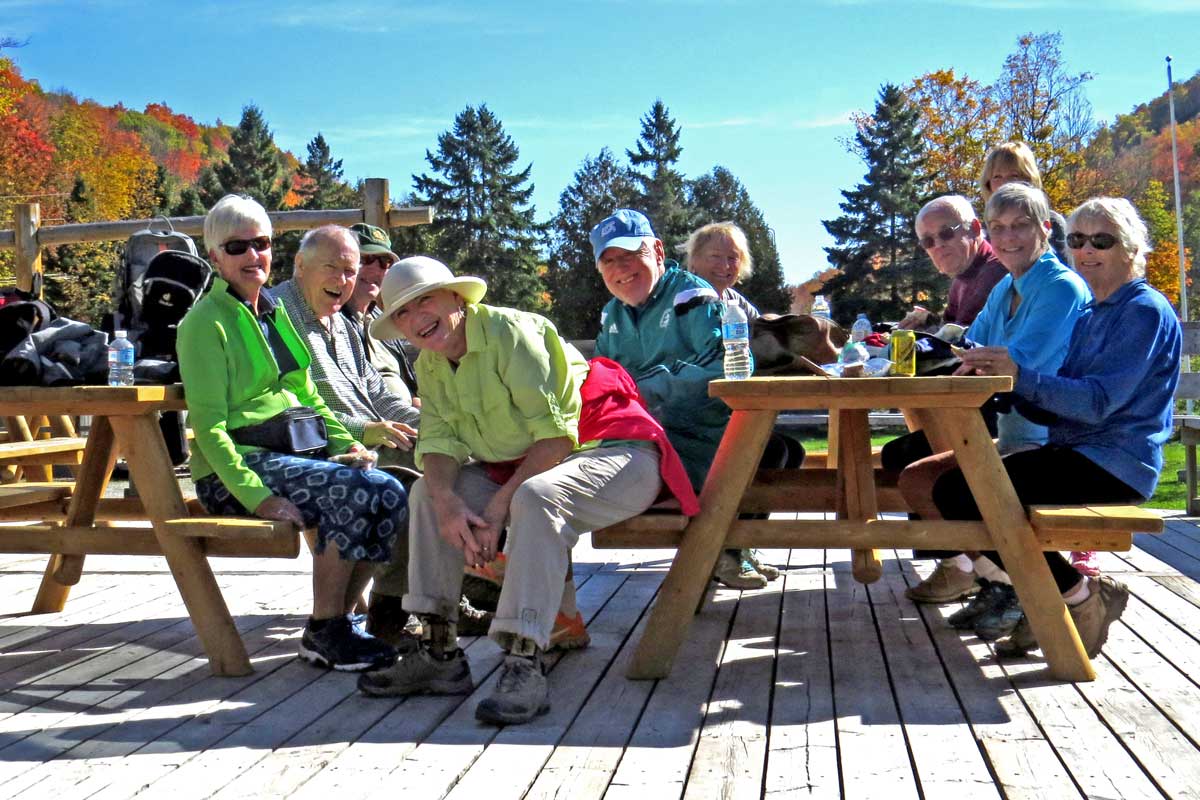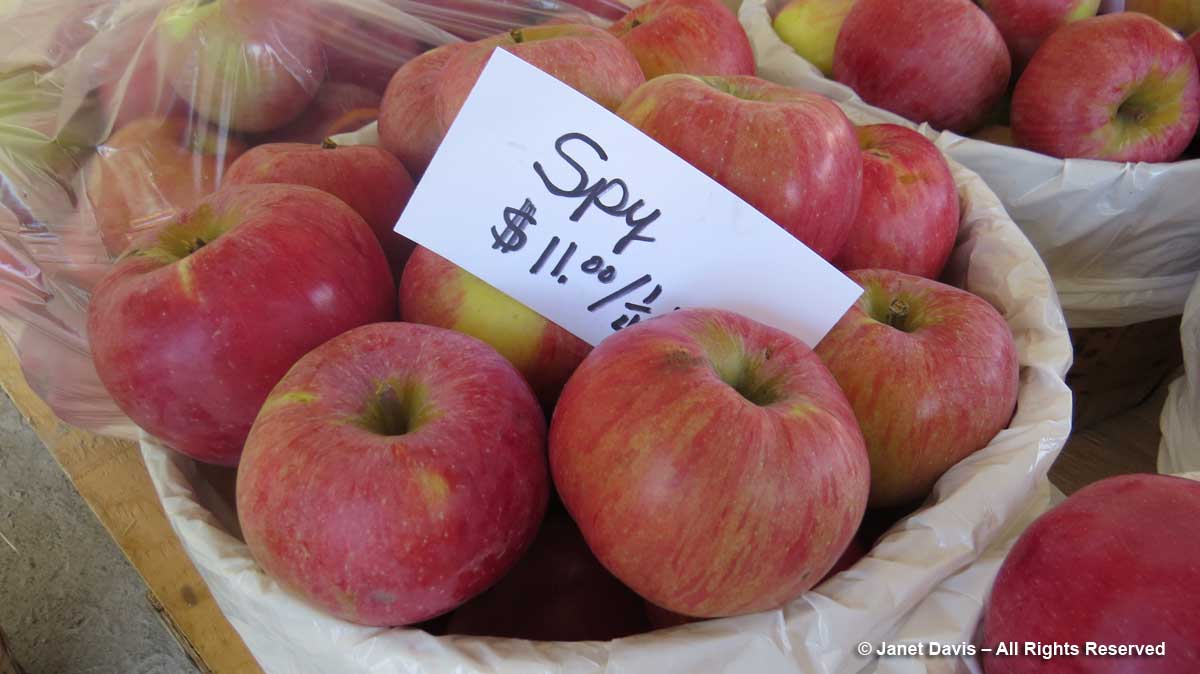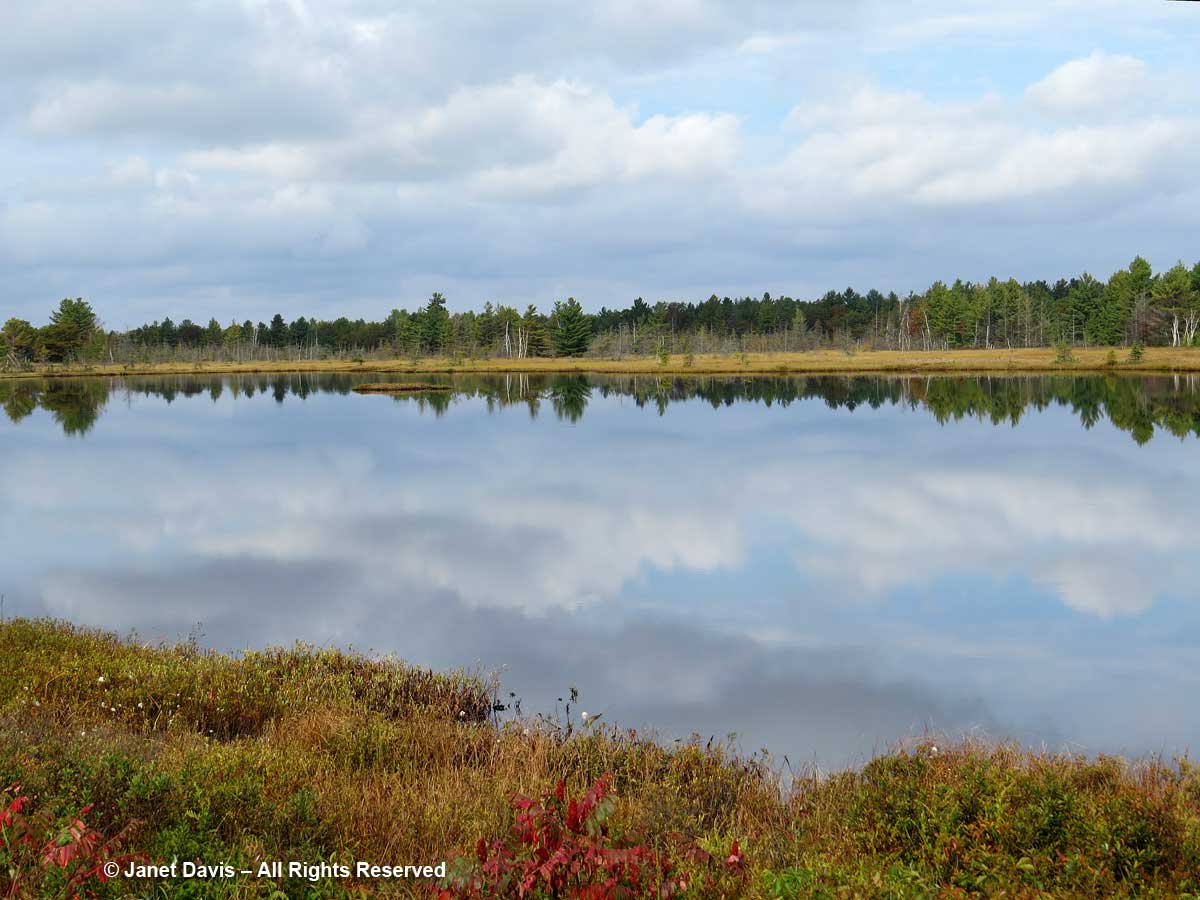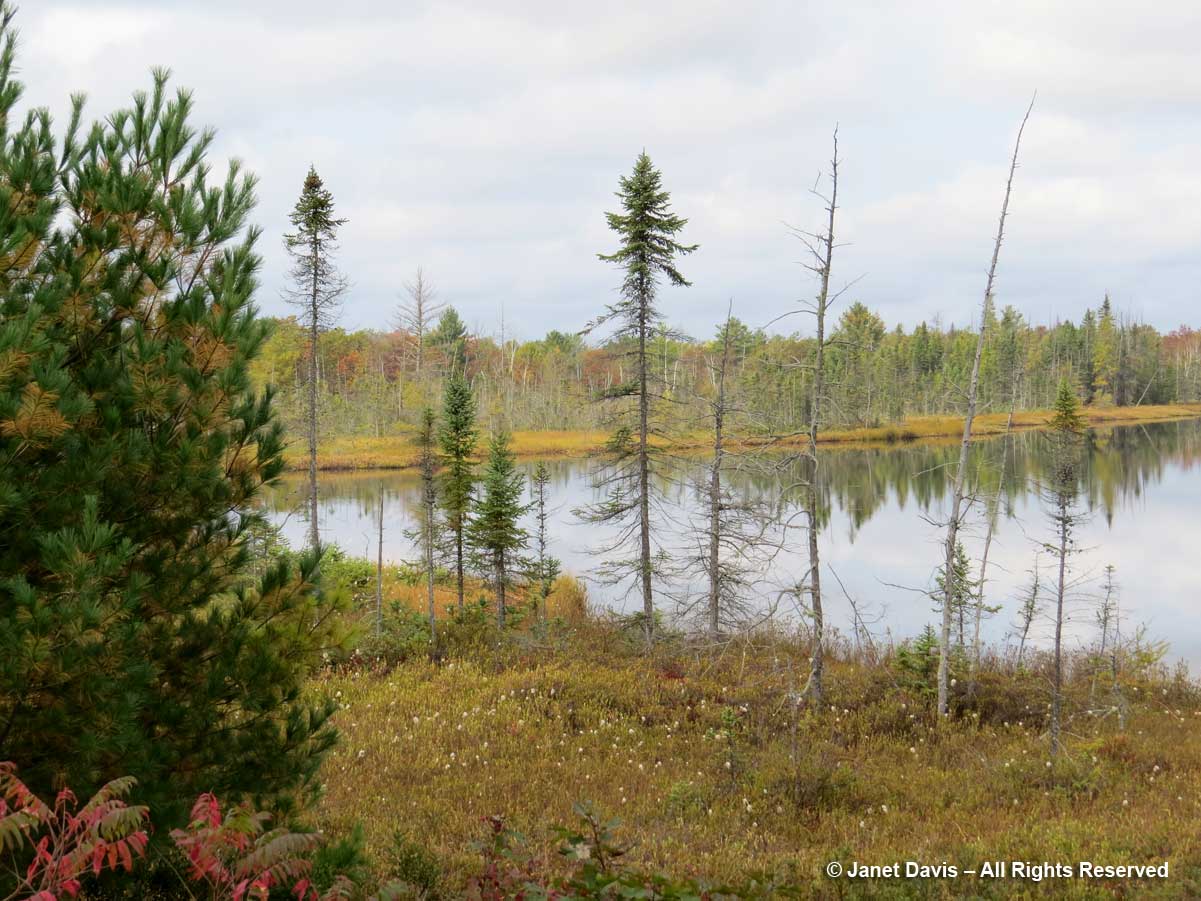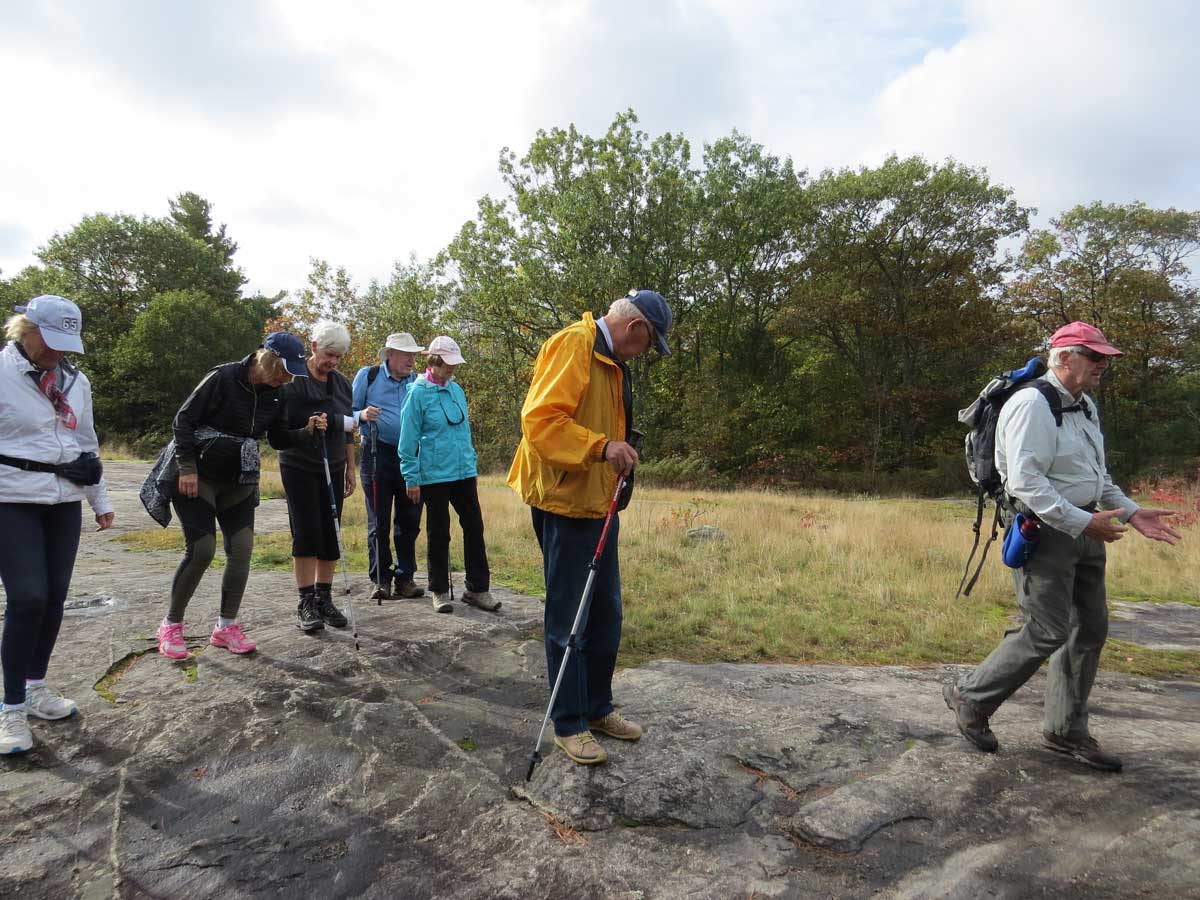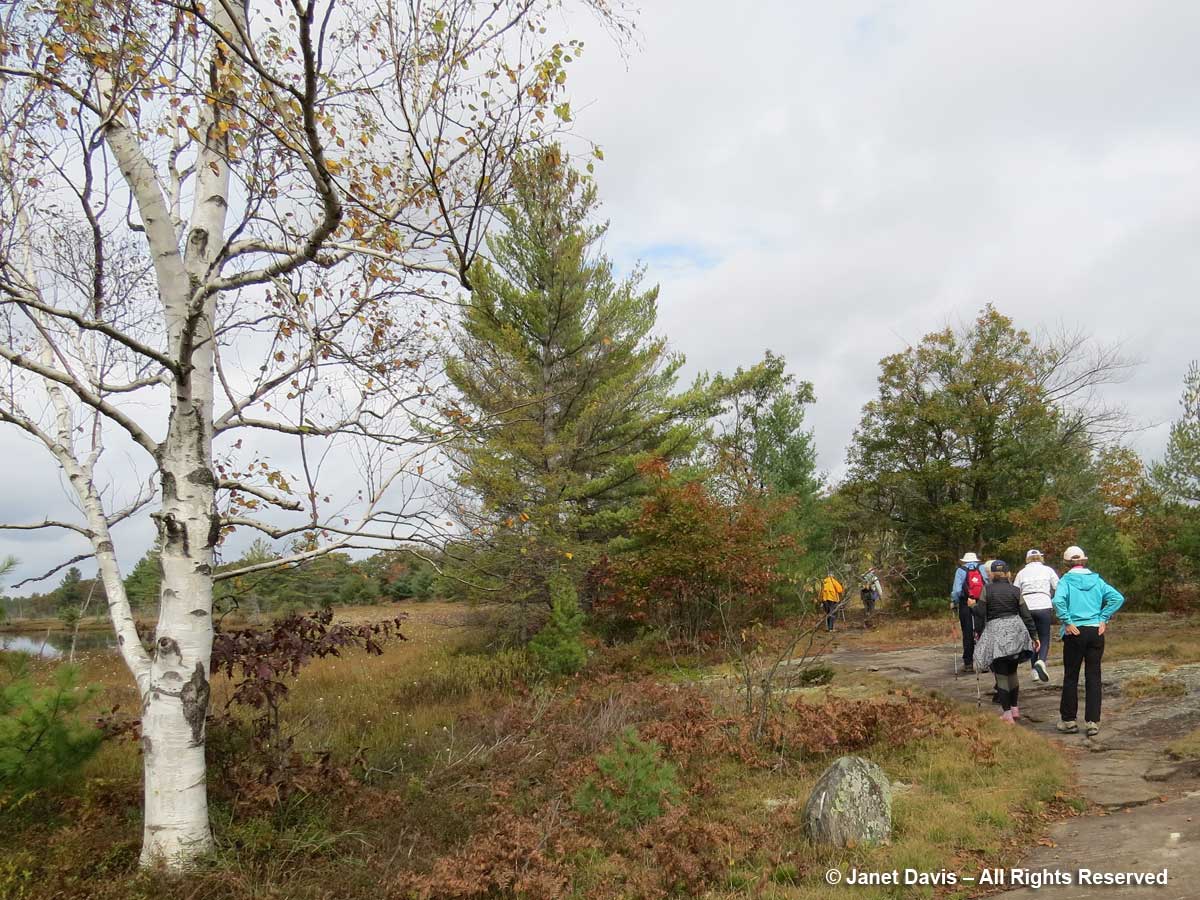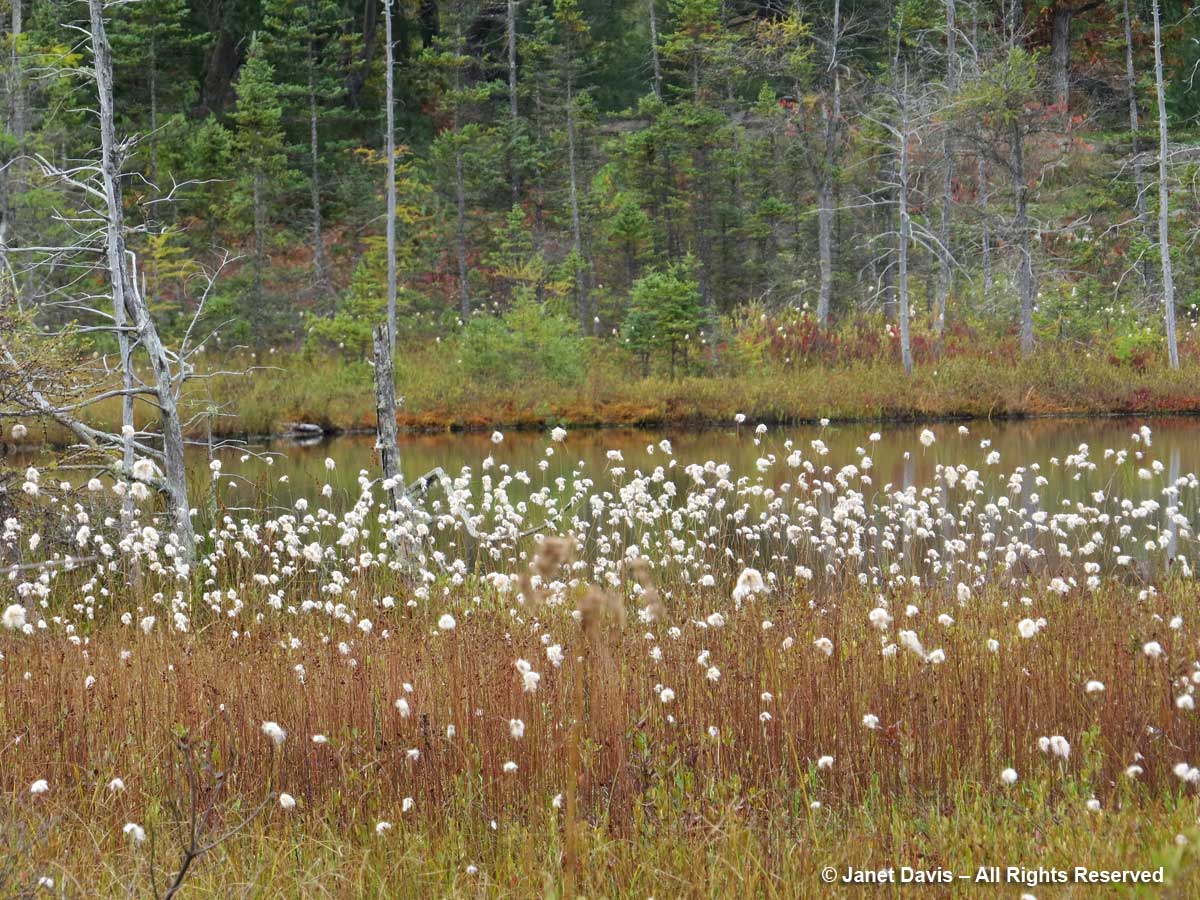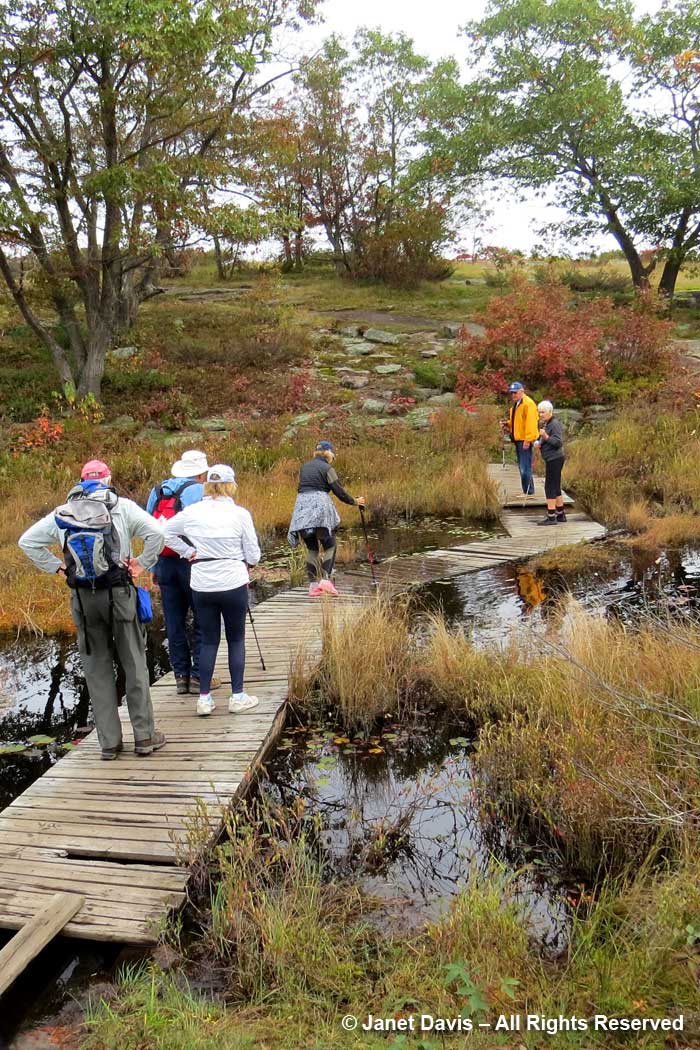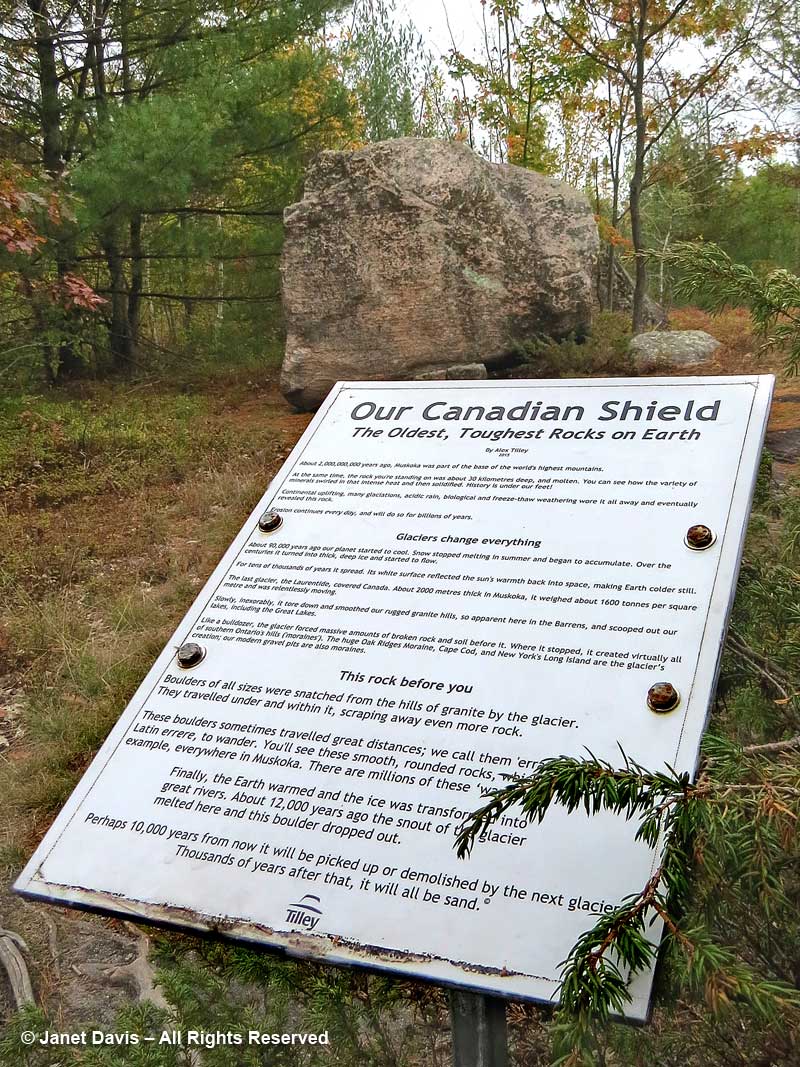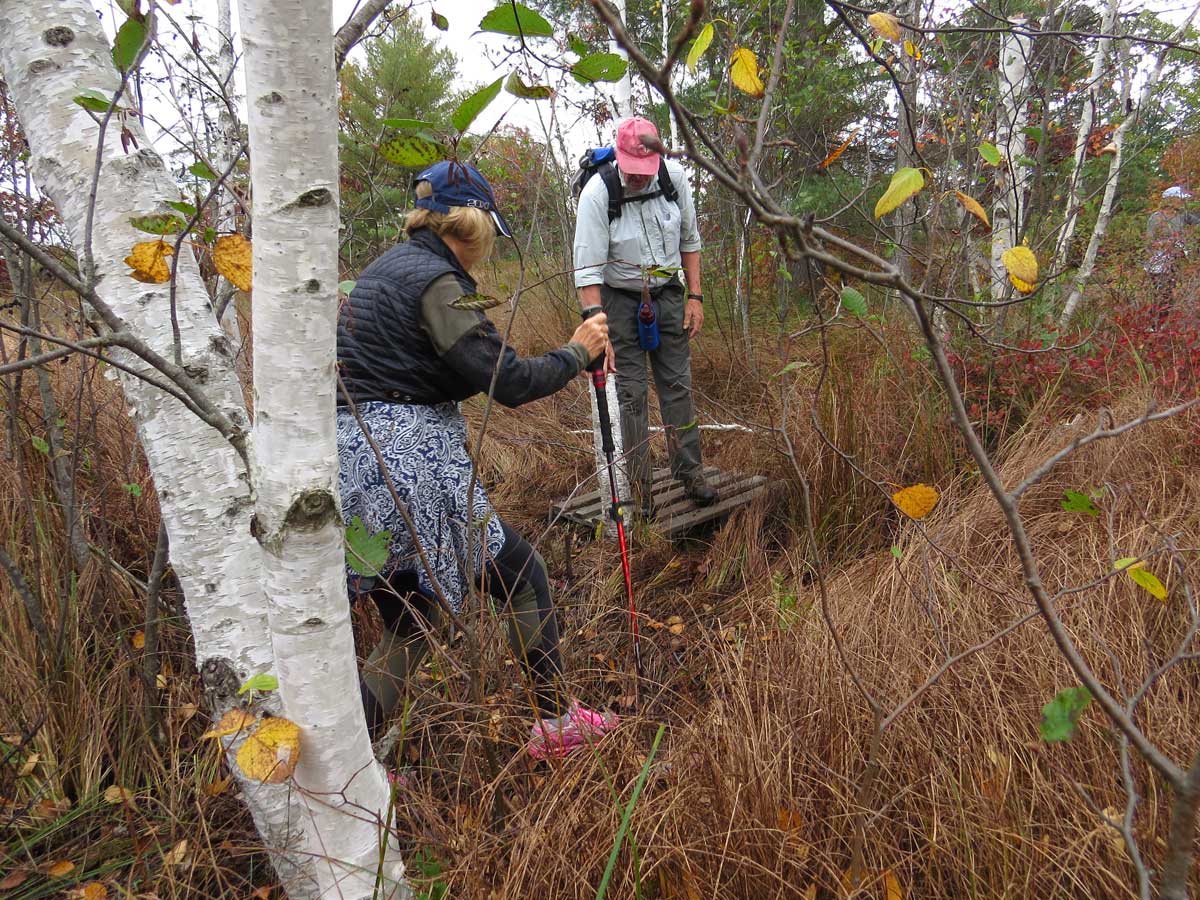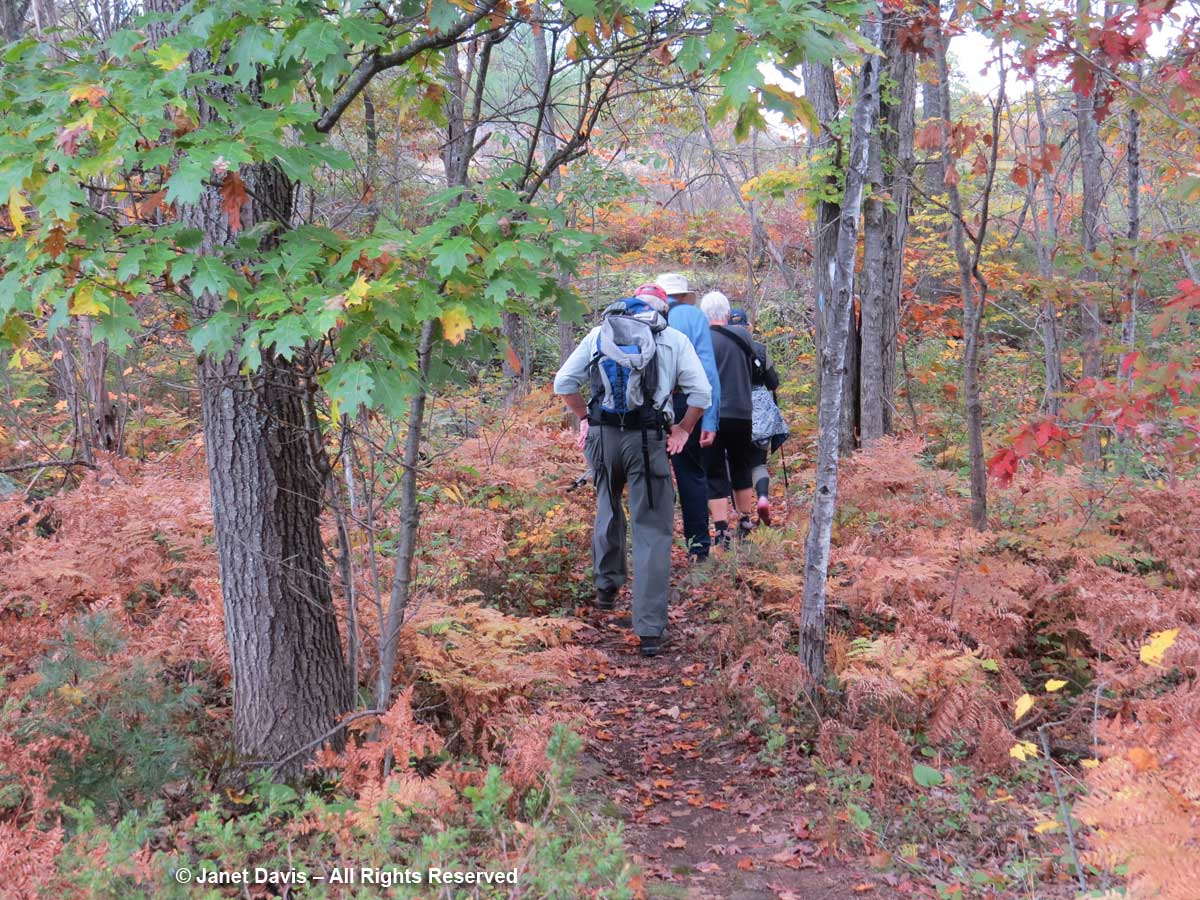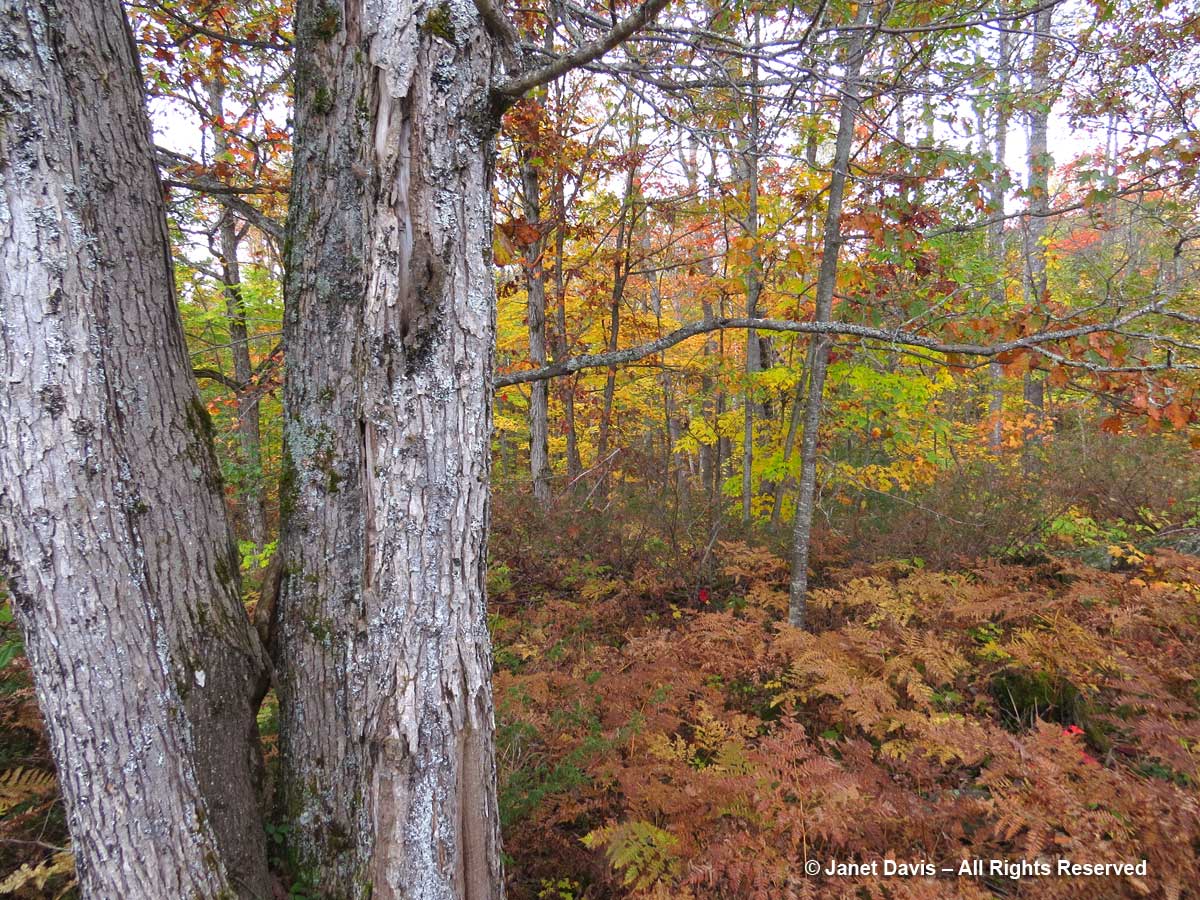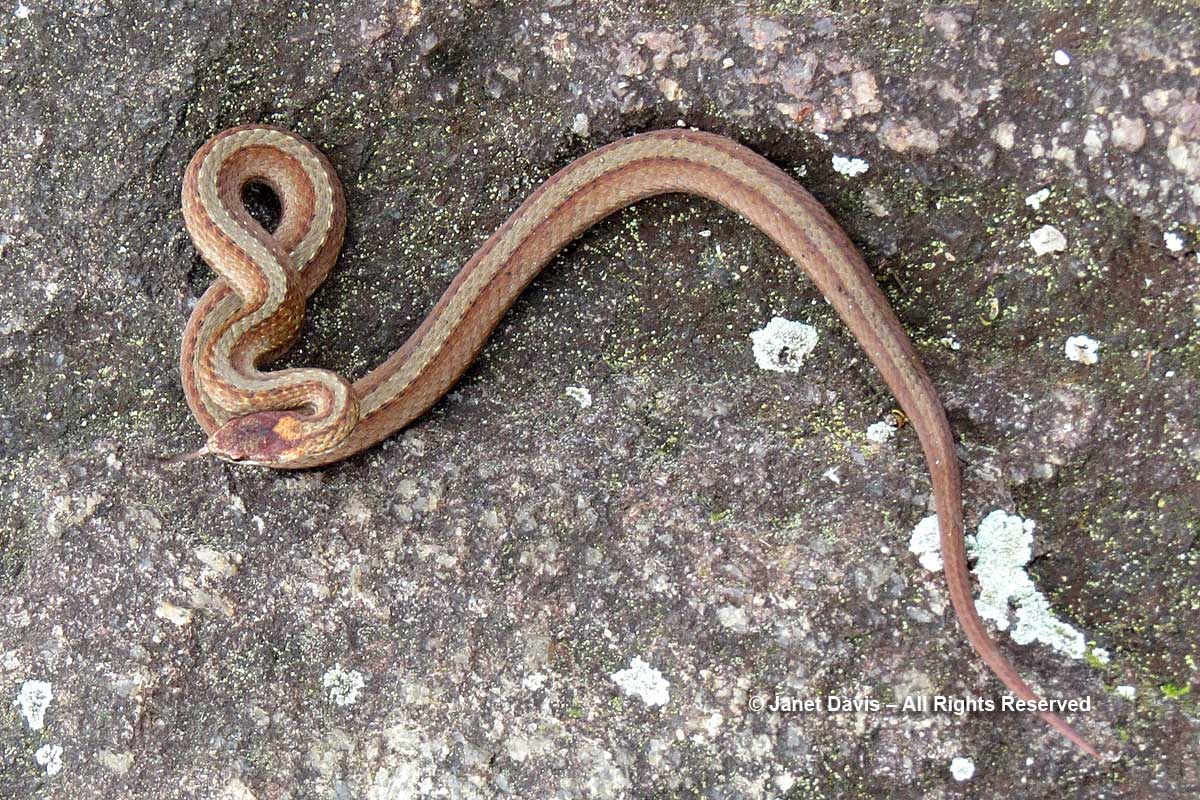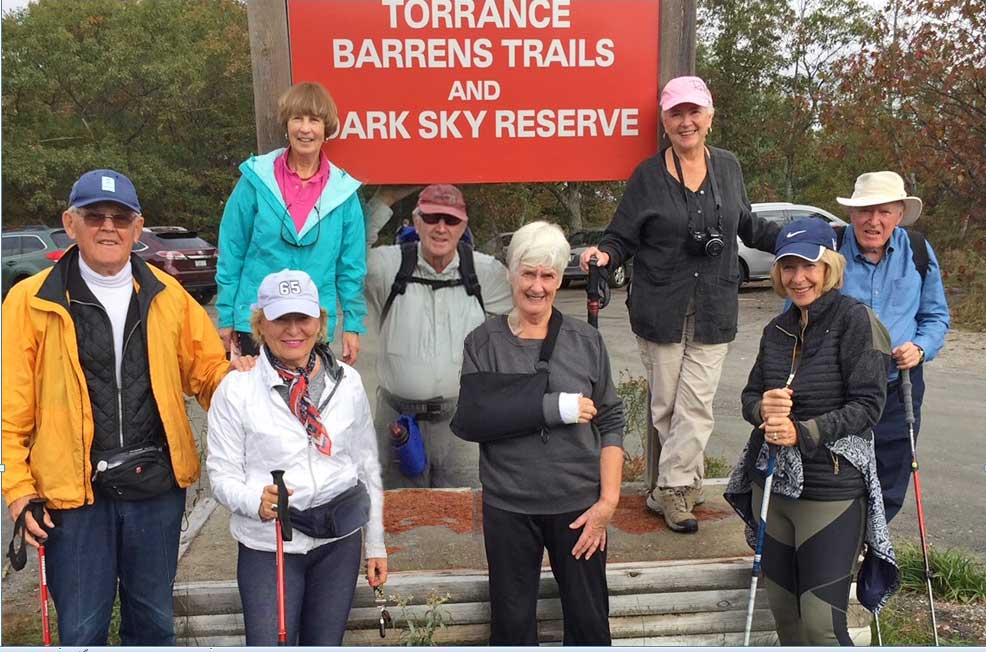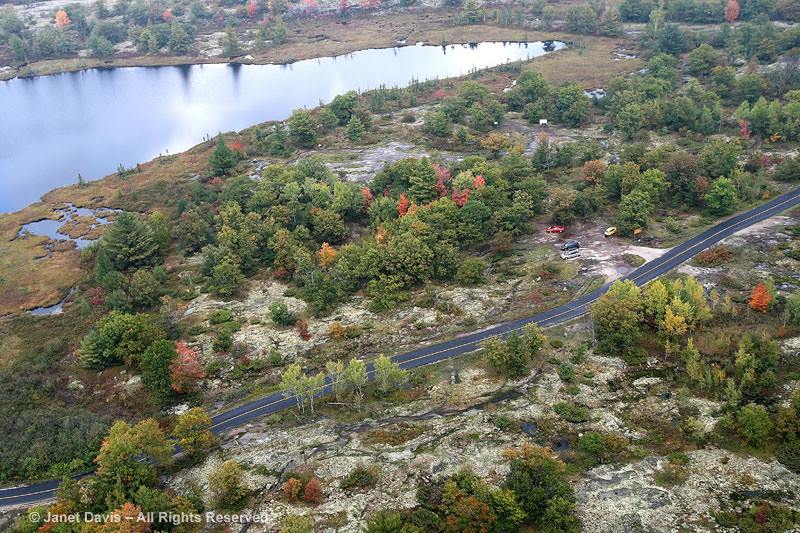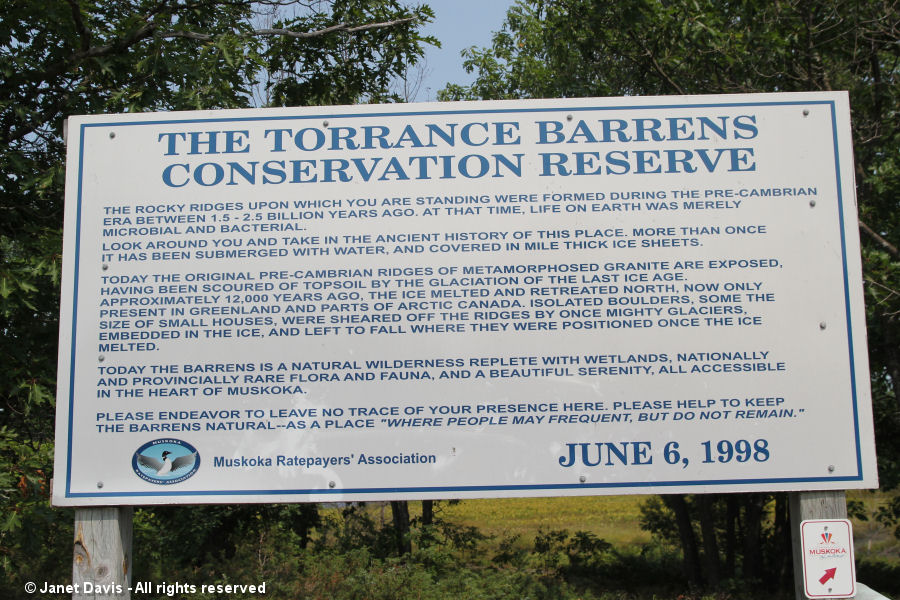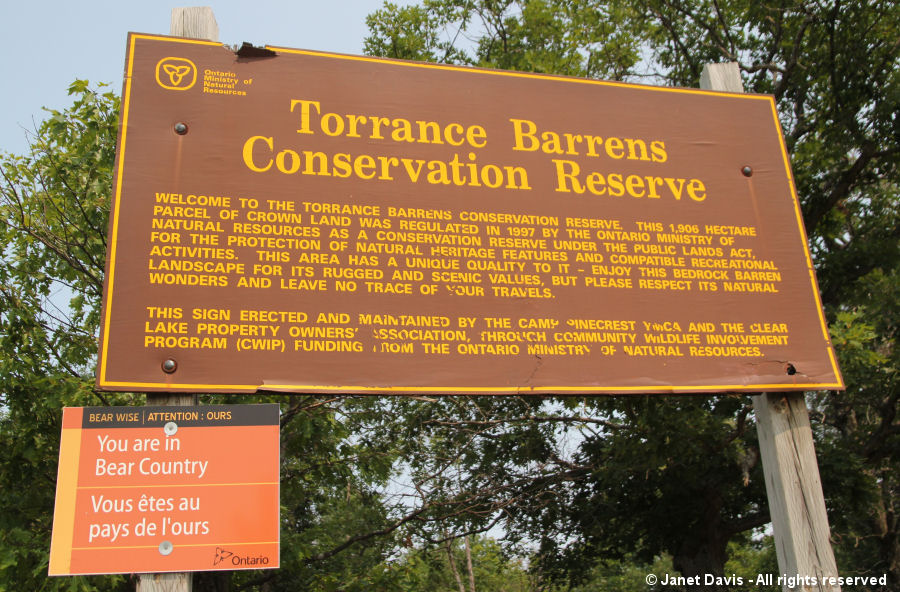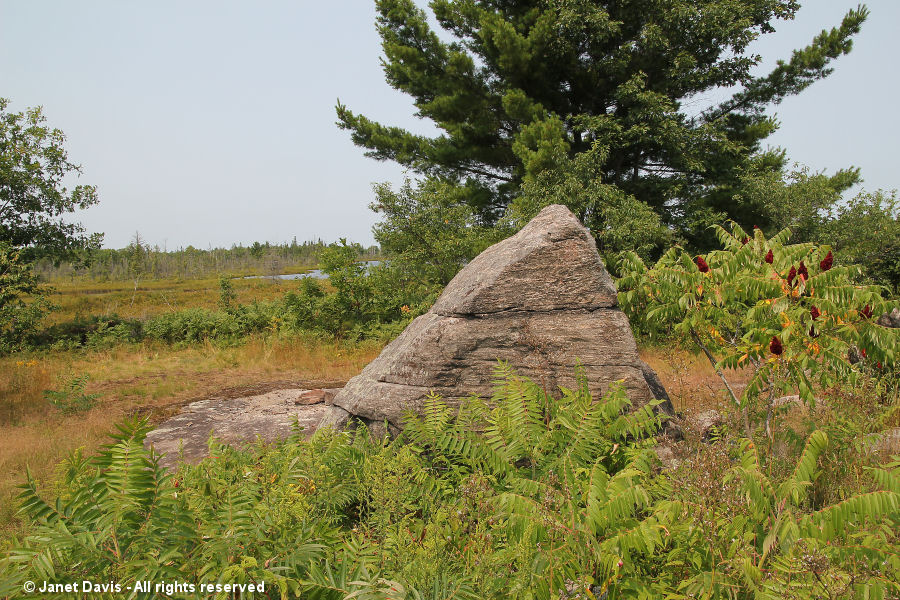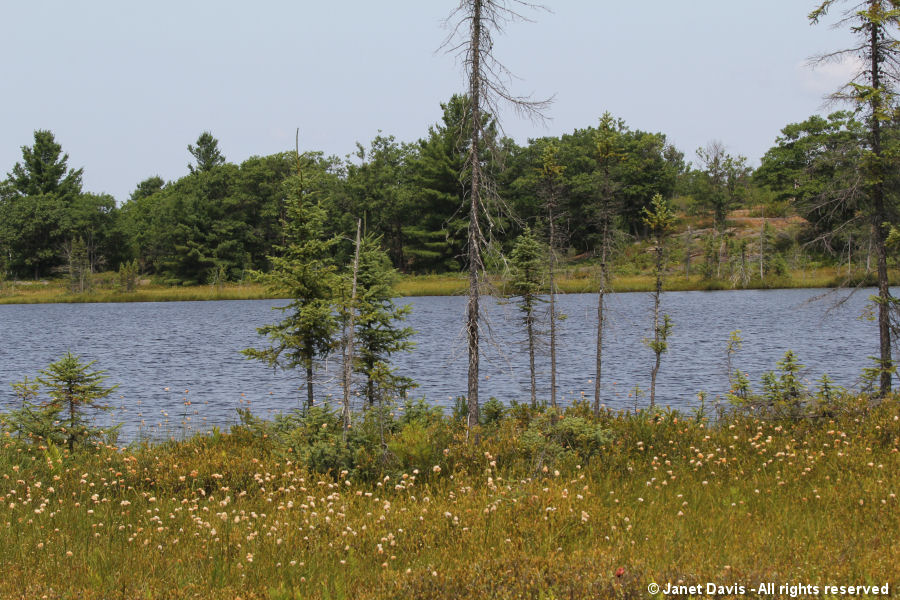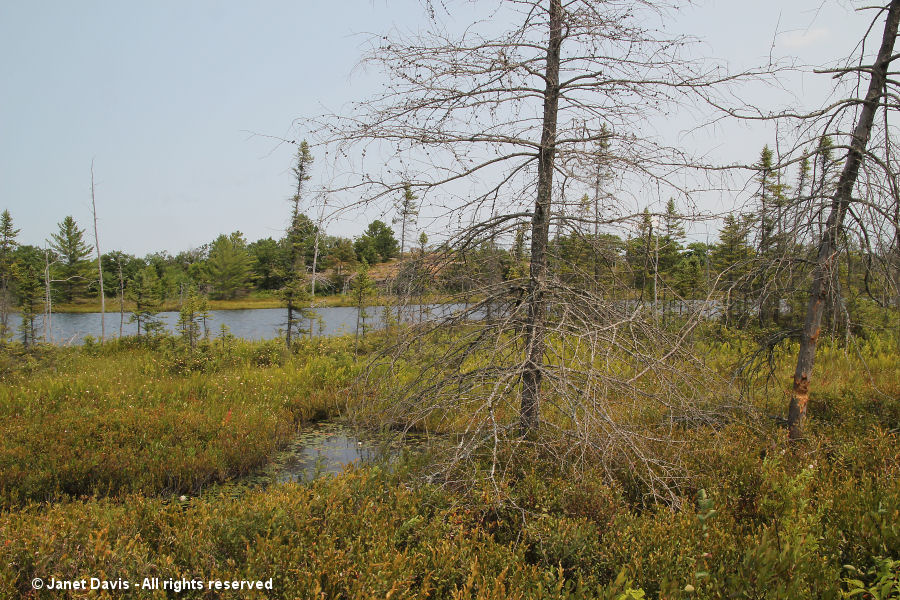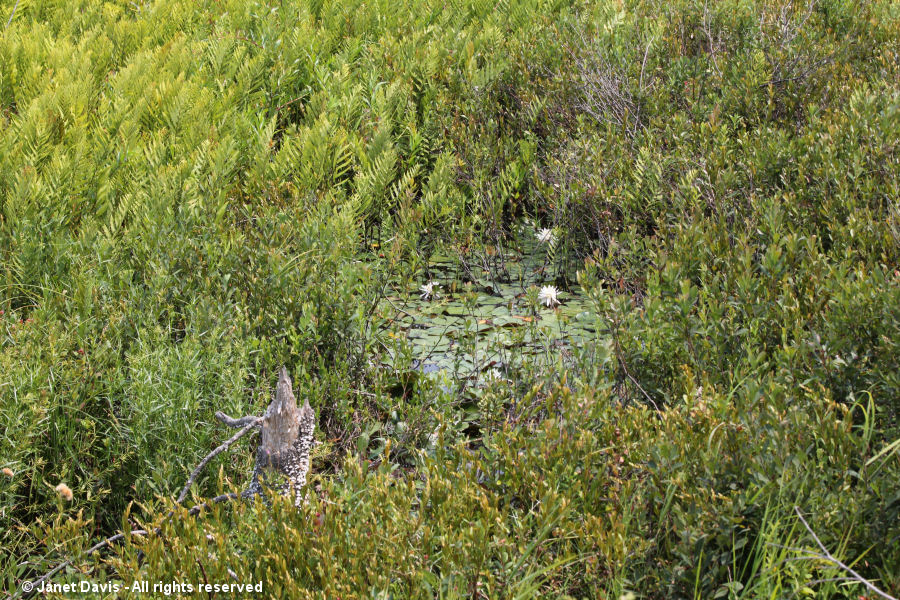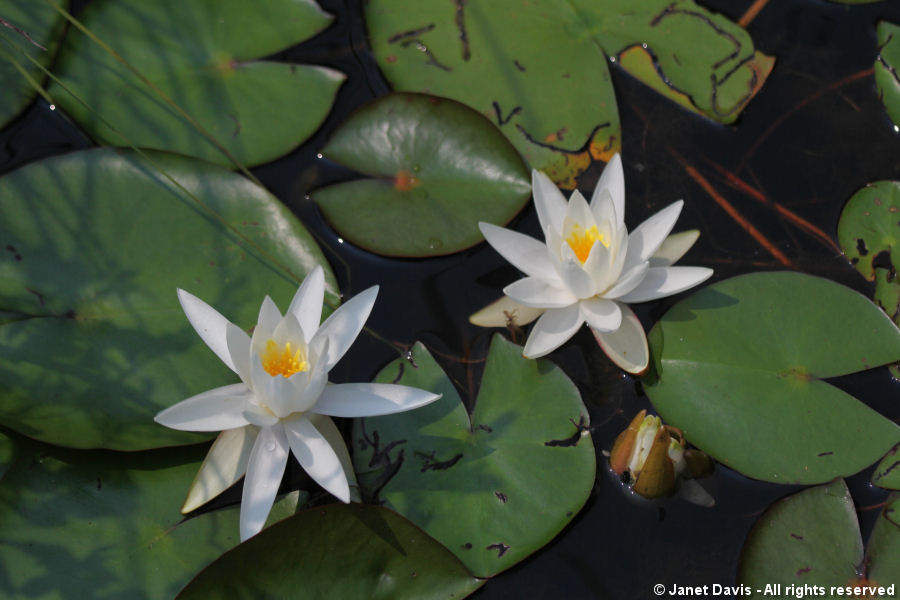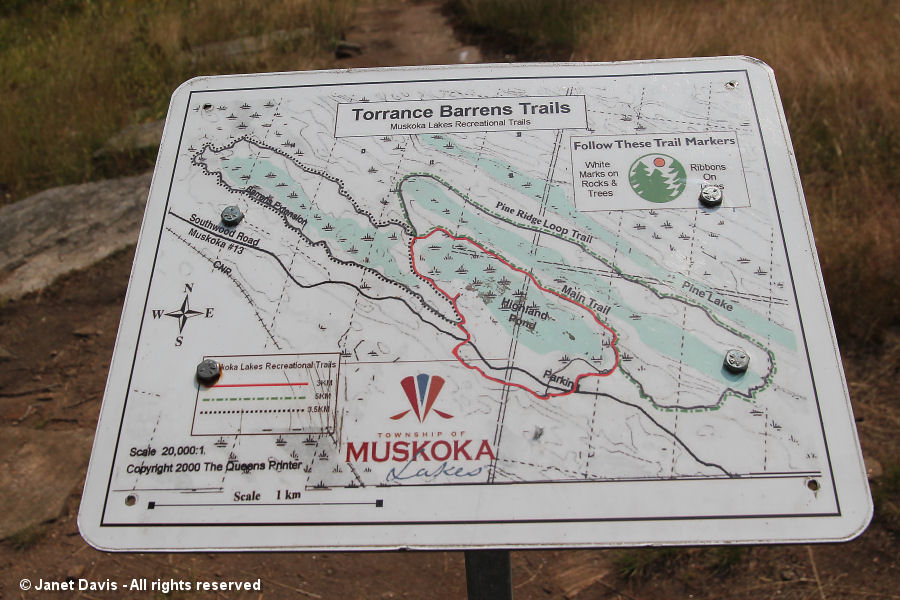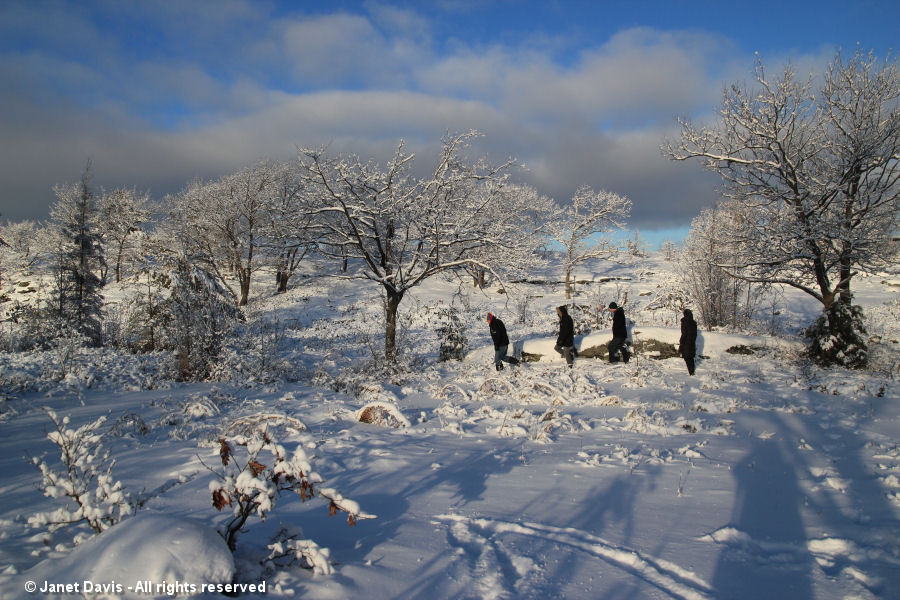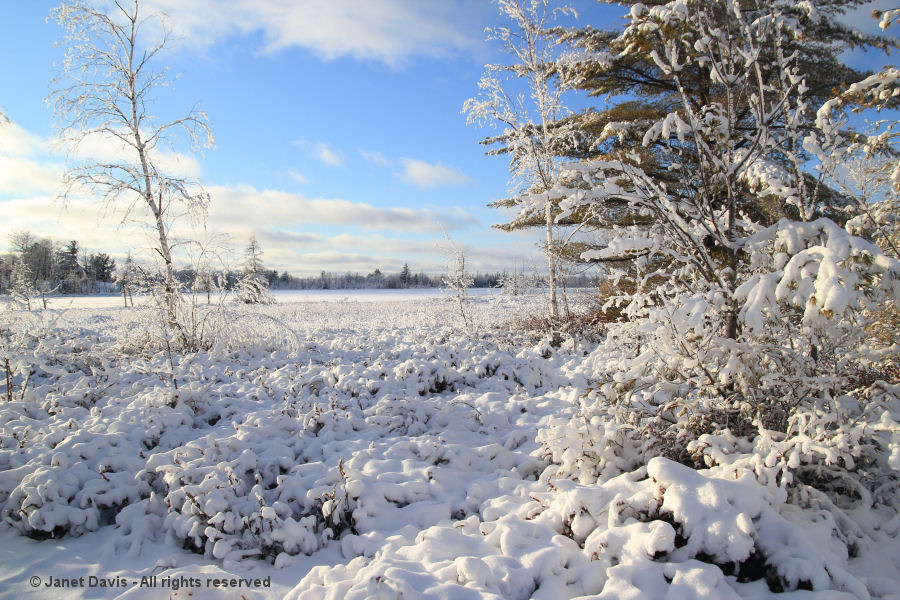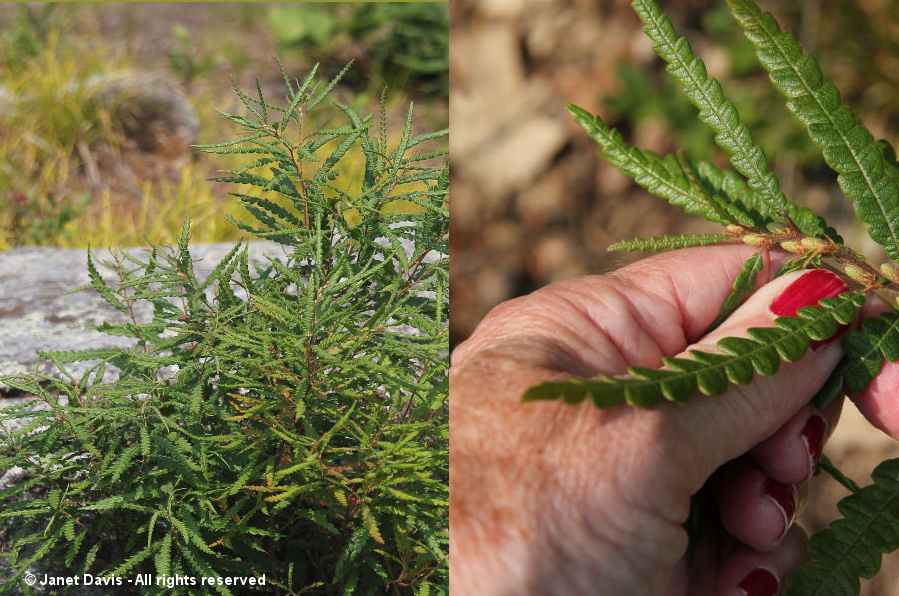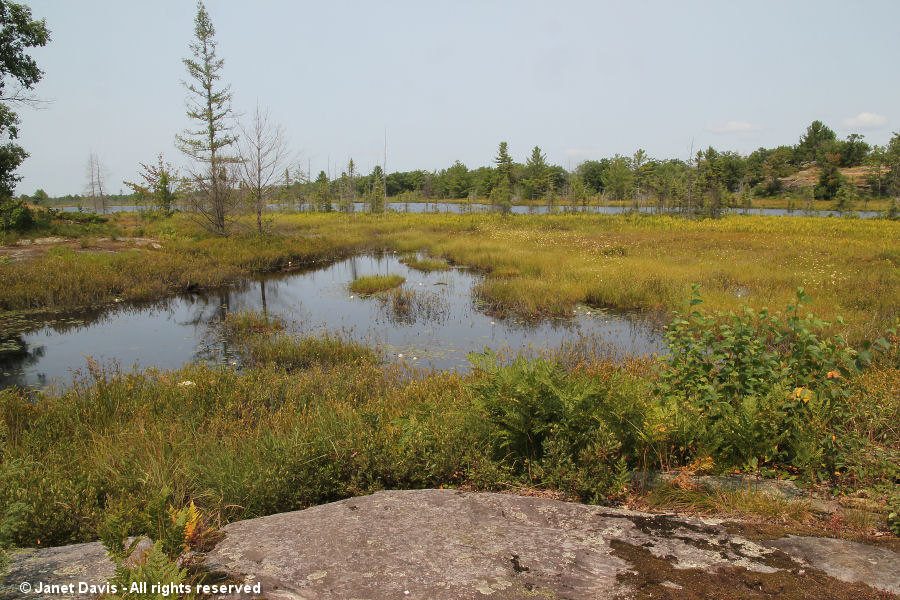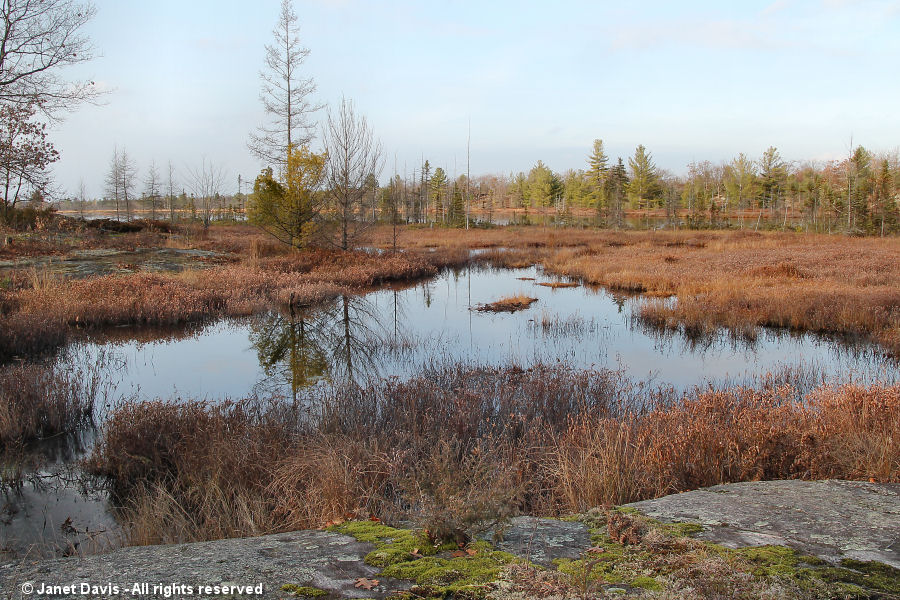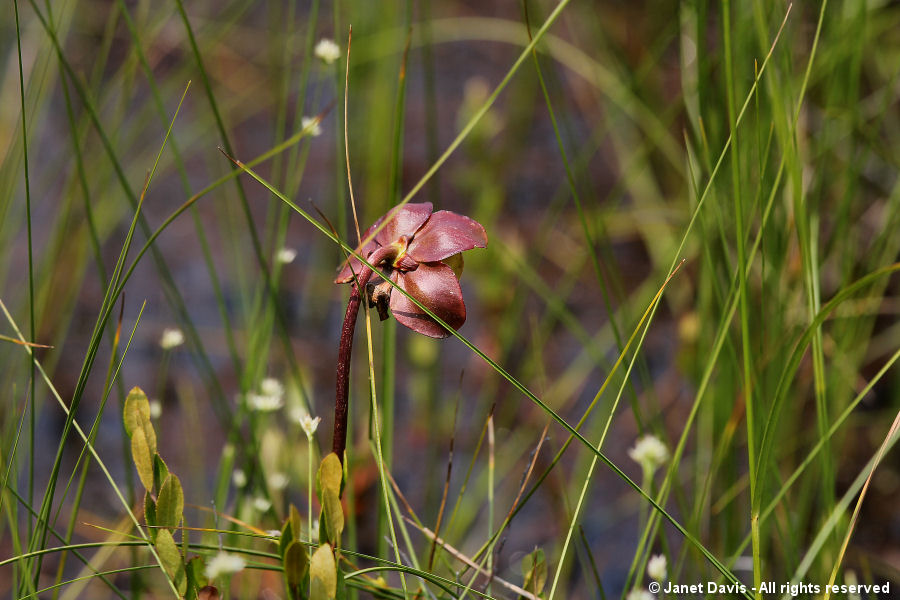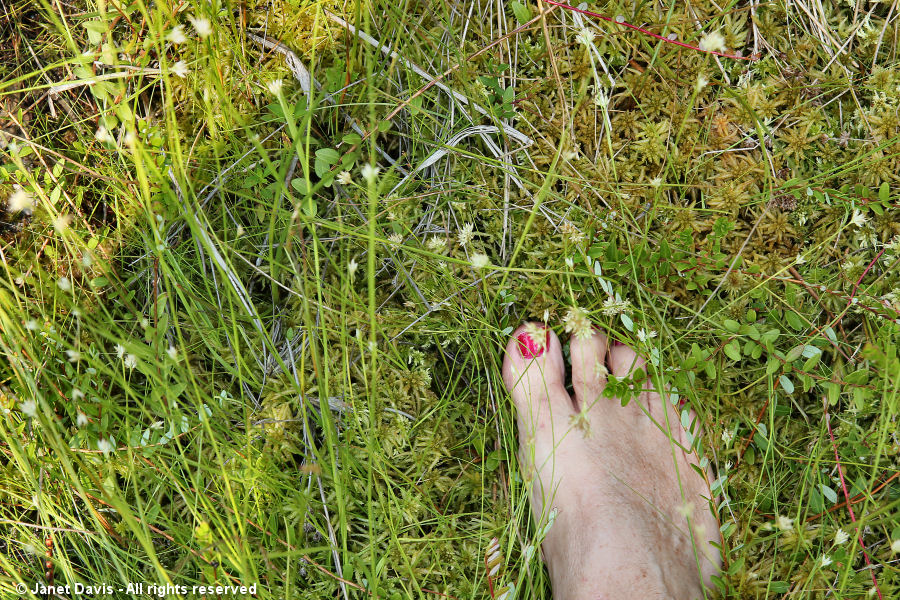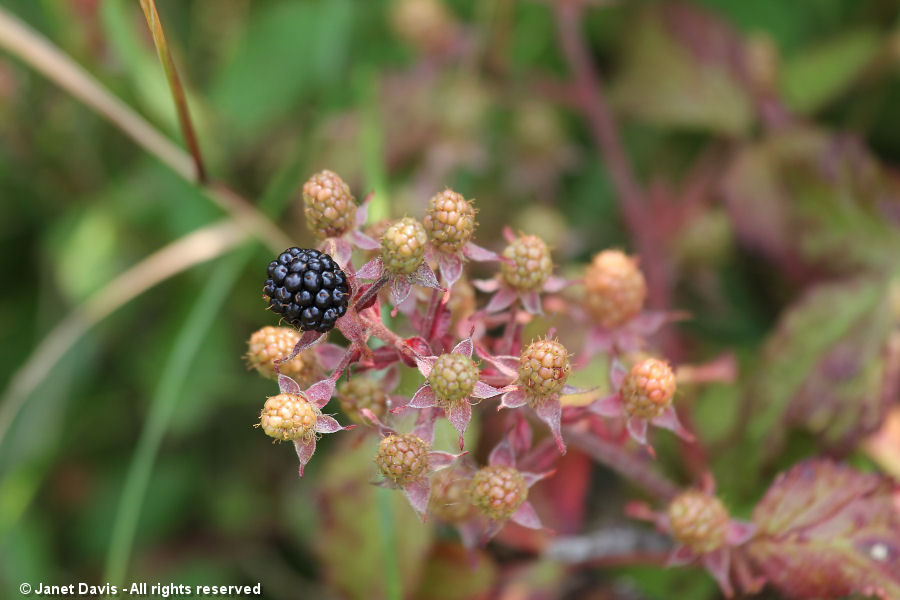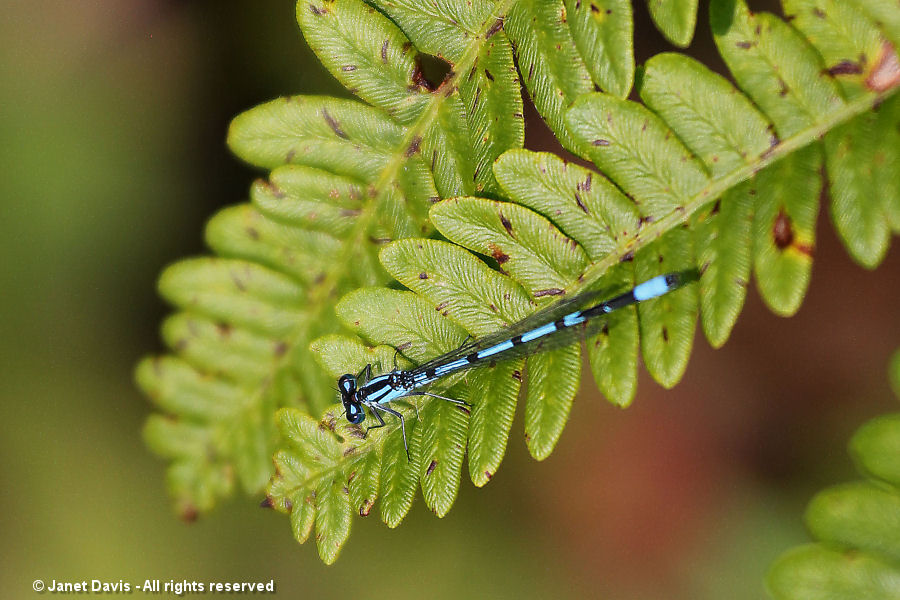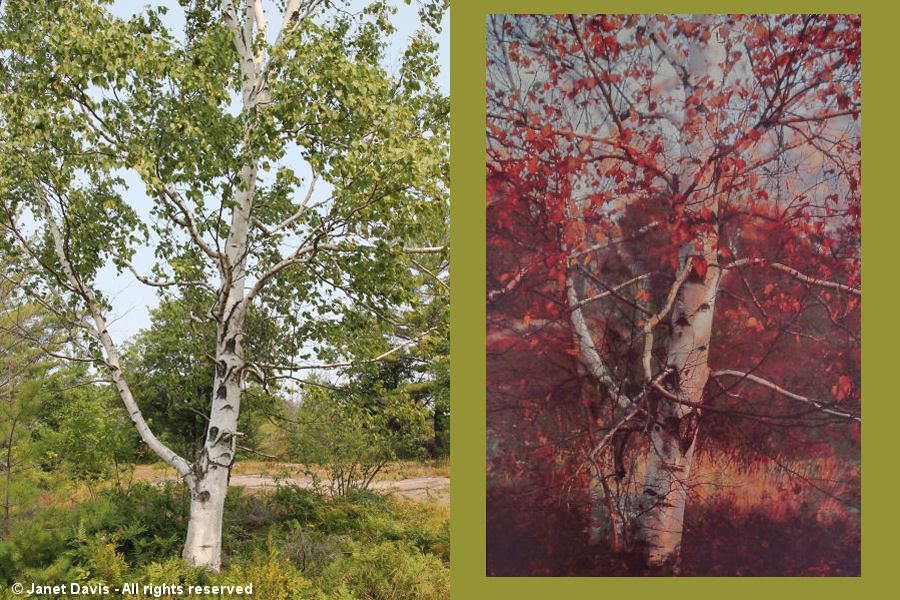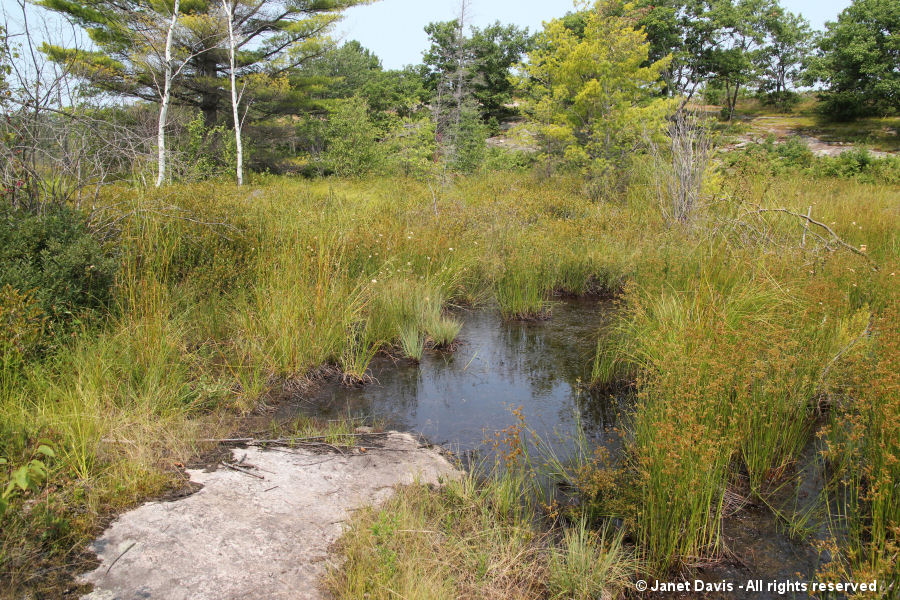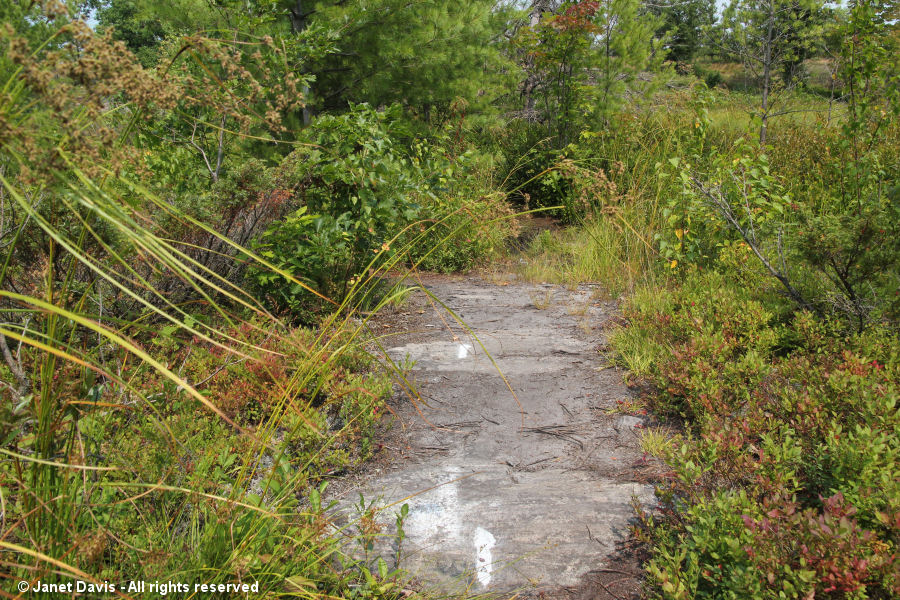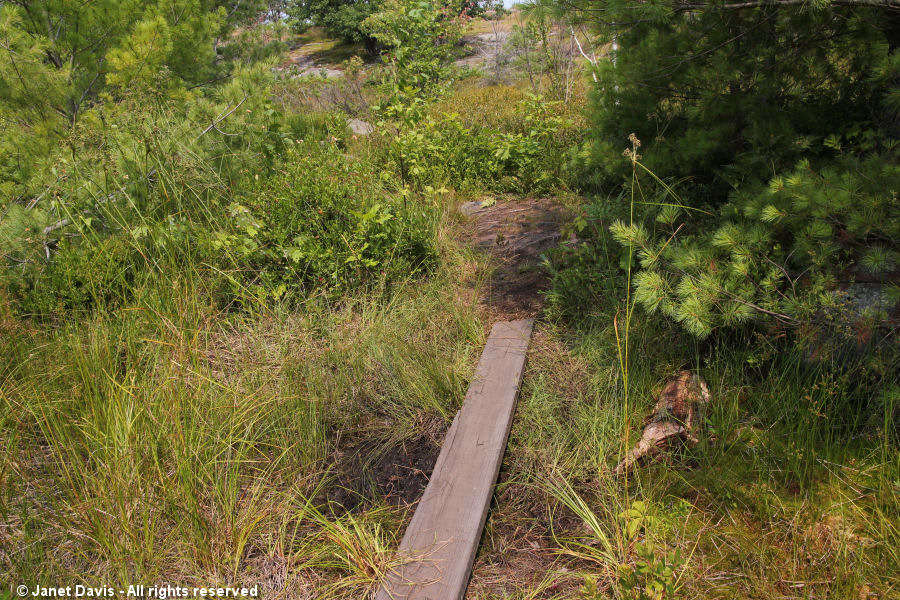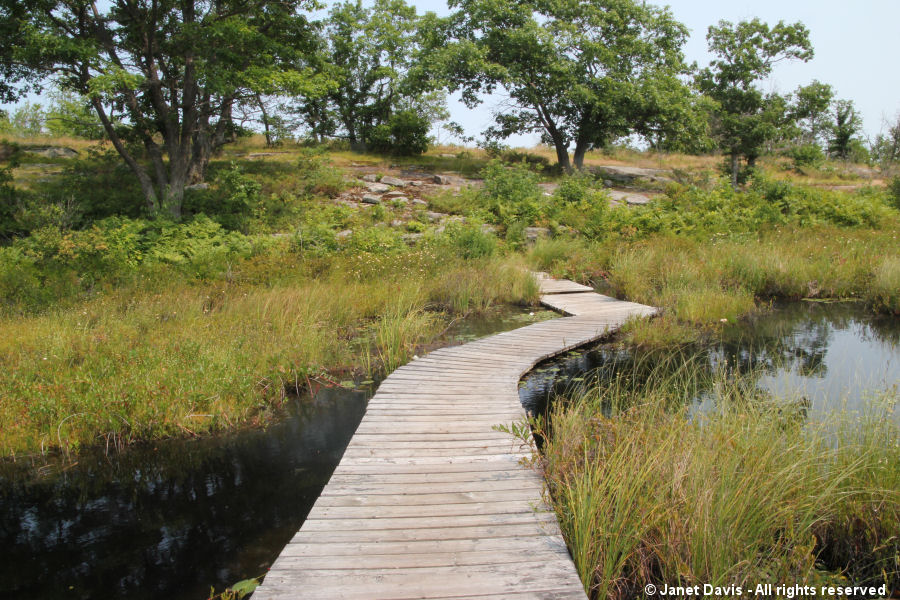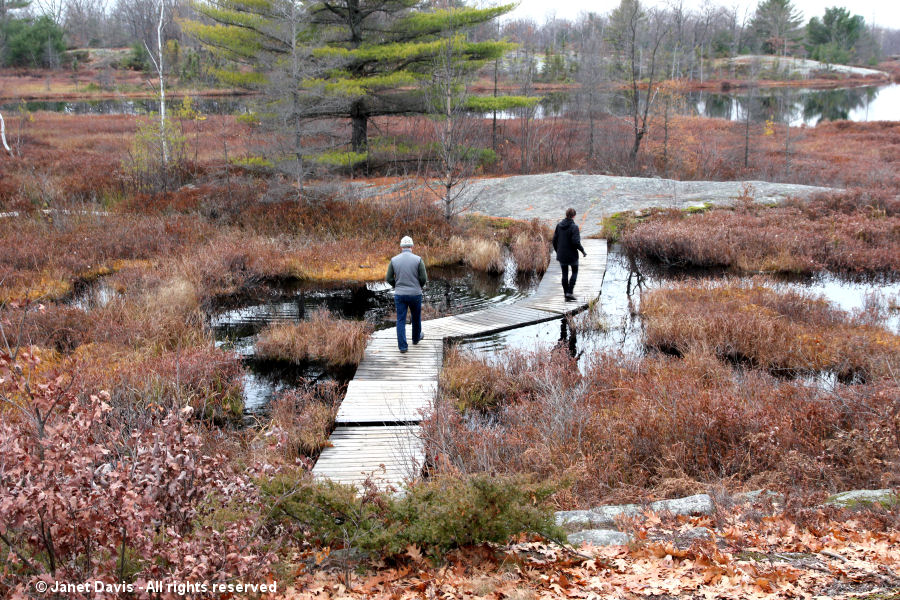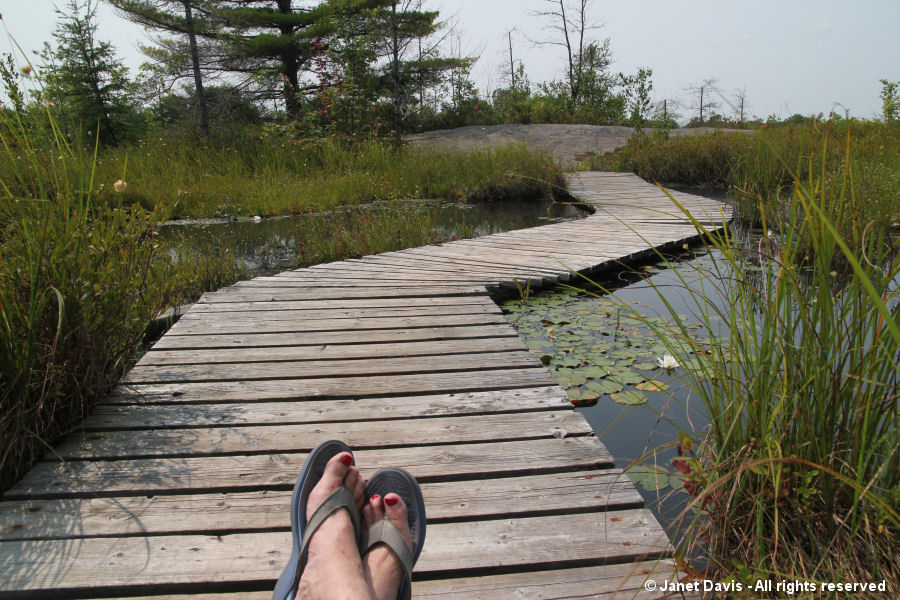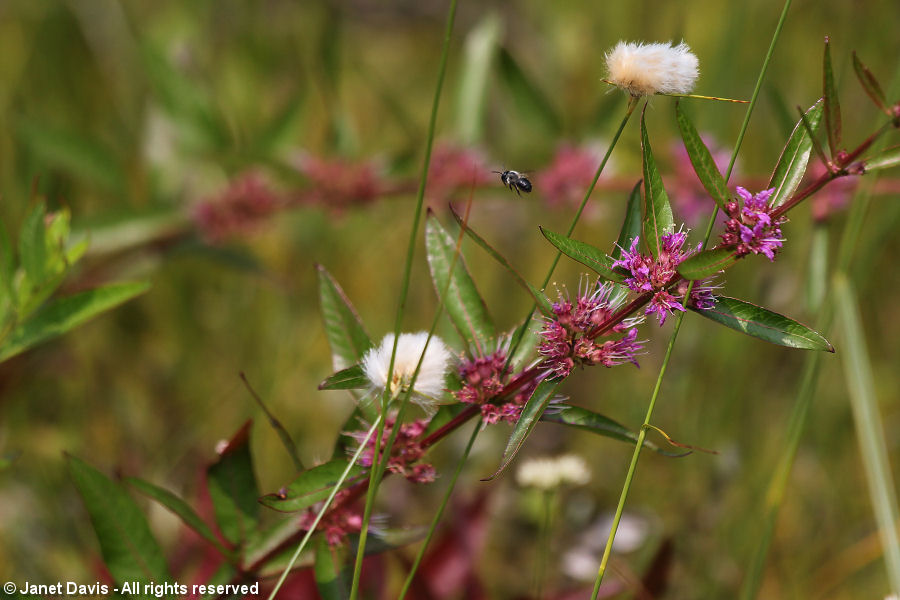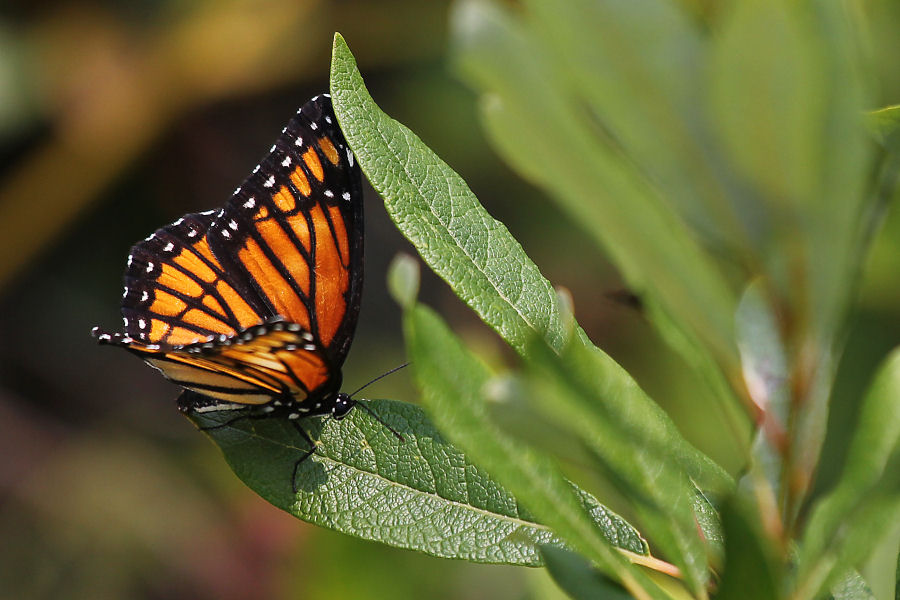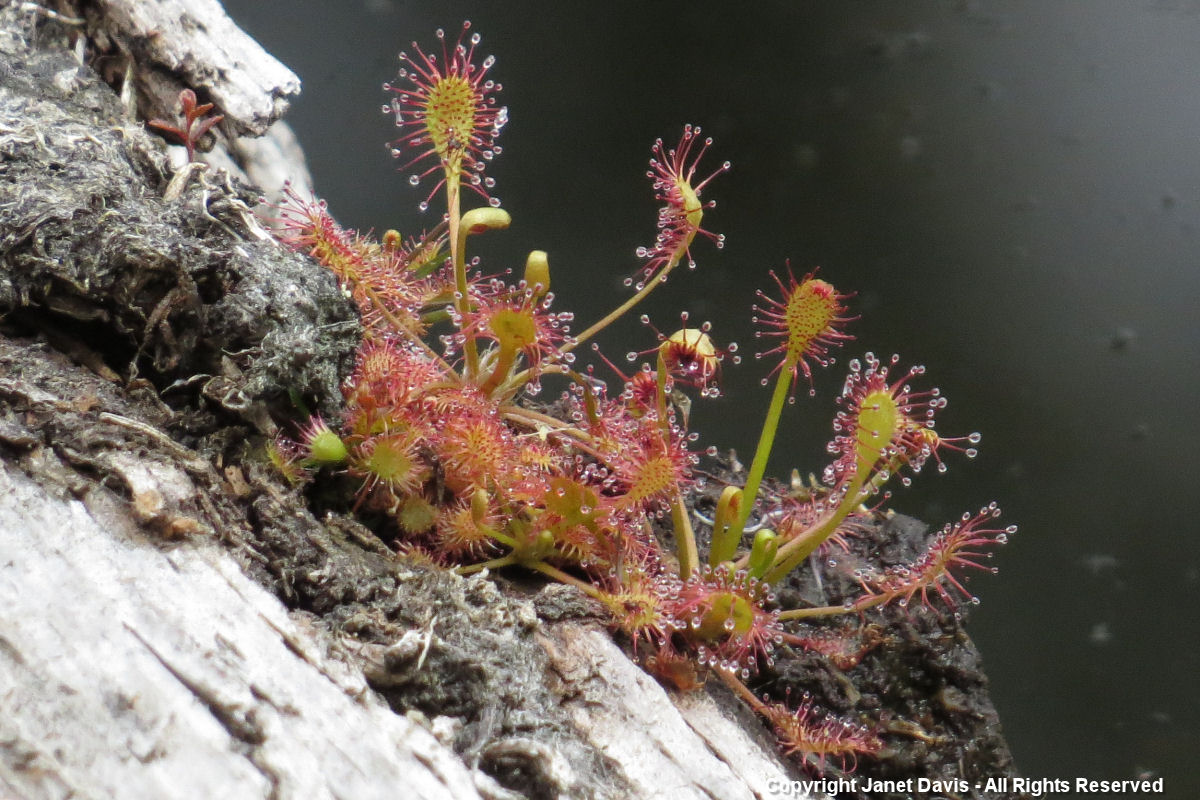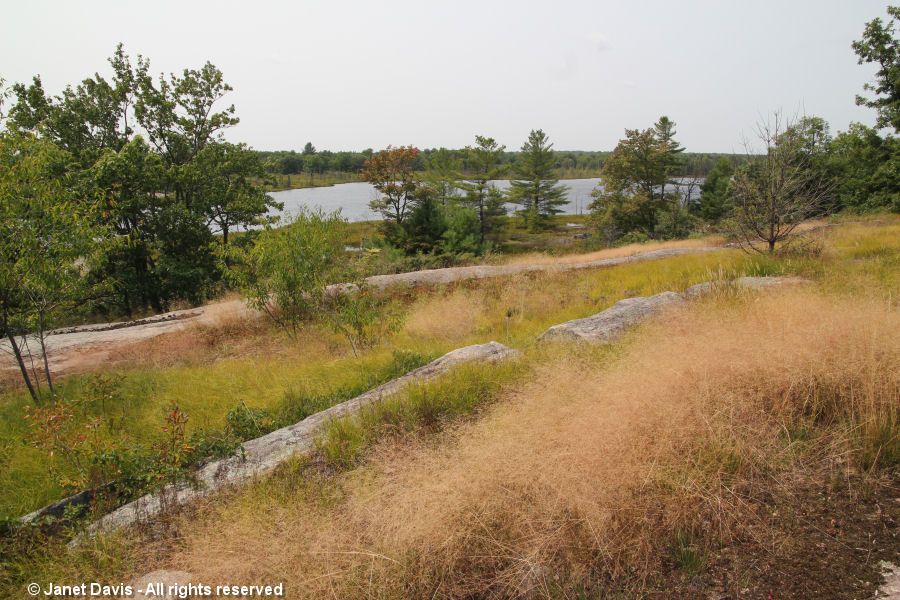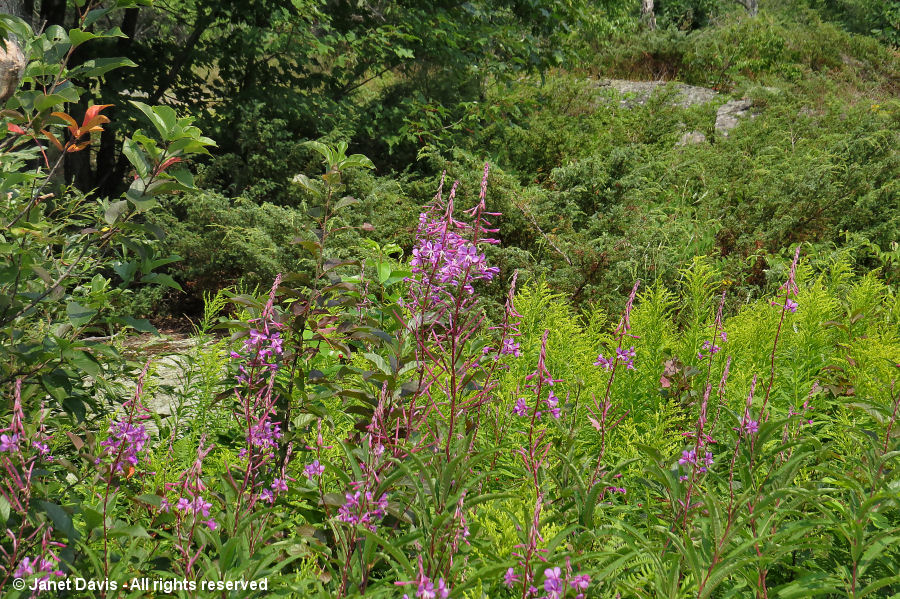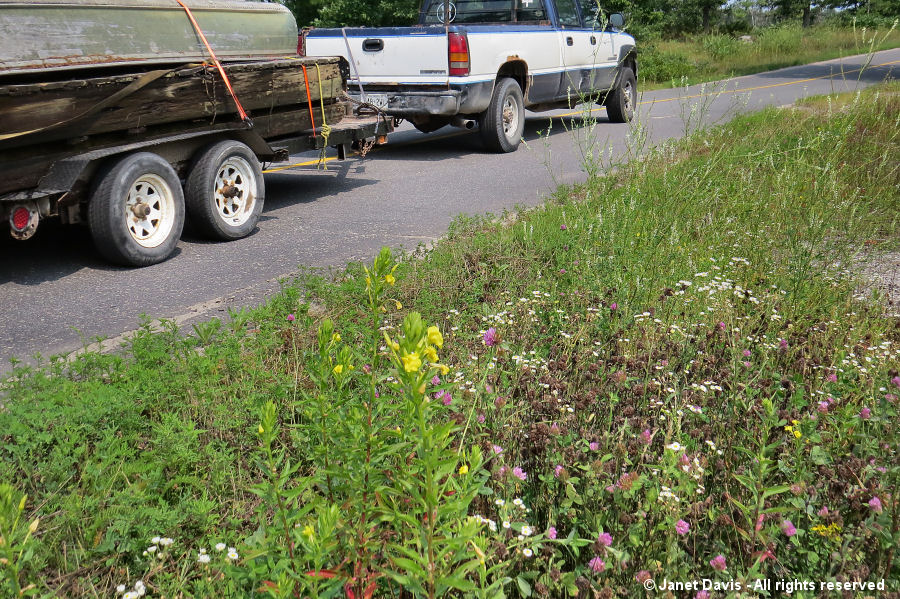I received a Christmas present from my three wonderful sons this week, something unexpected and so much fun! It actually came in an envelope under the tree on Christmas morning, but it materialized in the form of a lovely 3 hours, some of it in total darkness, at the Torrance Barrens Dark Sky Preserve last weekend. It was a private lesson in night sky photography with Wesley Liikane, aka Cowboy With a Camera. I’ve been following his work for several years, but the boys didn’t know that when they arranged the gift. And since I was at the cottage with my daughter and her young family and the Torrance Barrens is just 12 kilometres from the marina where we dock our boat, I invited Wes to come for dinner first. He accepted and after impressing my grandkids with his phone photos of wild animals, joined us on the screened porch for Saturday night dinner.
Then it was into the boat to the marina and Wes and I drove our cars separately to the Torrance Barrens. My friends know that I’ve been photographing at the Barrens for more than fifteen years in all seasons. I even wandered into the edge of the 1905-hectare (4707-acre) reserve to photograph the full moon there one summer, batting away mosquitoes as I focused through the oaks. There was not another soul there that night and it was a little scary to be alone. But on this evening in early August 2018, Wes and I were shocked by the number of people clogging the granite parking lot and parked along both sides of winding Southwood Road. Admittedly, it was a holiday weekend and the sky was relatively clear with no moon, making it perfect for sky photography. But it was shocking to see all the people wandering through with coolers and supplies, to see all the tents set up (it’s crown land) and smell the smoke from campfires (in a week when fires had been banned for extreme dryness) and hear the sounds of voices, many of them from far-off lands, bouncing off the granite bedrock. Wes led the way along the familiar trail.
A sign at the entrance had announced that the bridge across the wetland was closed….
….but it wasn’t really closed – just in the same state of disrepair it had been the previous October…..
….. when my friends and I had hiked there on our annual hiking weekend, below. For me (and for Wes, who manages the Torrance Barrens’ Facebook page), it’s a sad state of affairs when the trail maintenance is so shoddy in one of Ontario’s crown jewels.
But as always, it was lovely to stop for a moment and explore the flora in the marsh pond, including this sedge with water willow (Decodon verticillatus) and fragrant water lilies (Nymphaea odorata).
Wes set us up on bedrock in a flat area of the slope near the wetland. From here, we’d have a good view of the Milky Way, provided the night sky stayed clear. In his lesson, he talked about the importance of hard ground as a base for your tripod for the long exposures needed for night photography. Because my tripod adaptor was in Toronto, Wes loaned me his. He also brought along his portable SkyWatcher telescope, which can be adapted for star photography.
My camera (the Rebel 7Ti, which I bought for its 24.2 megapixel resolution and light weight, since I usually carry two cameras fitted with lenses for different purposes ) is less than ideal with its zoom 18-135mm lens, but that’s okay. It’s a DSLR, it’s the camera I’ve got – and we worked with it.
Wes, naturally, has a camera suited for night sky photography, the Sony A7S.
And his prime lens is a favourite of serious night sky aficionados, the Rokinon 1.5-35mm. He eyed my UV lens filter and said it wasn’t usually recommended to photograph with that filter, but we left it on.
As the sky began to darken, we prepared my camera. My eyes tried not to glaze over and my non-math-brain worked very hard not to shut down as Wes explained the “500 Rule” for exposure with his smart phone calculator. In a nutshell, it’s this: 500 divided by the focal length of your lens at its widest angle = the longest exposure in seconds before stars begin to ‘trail’. Earth, as we know, is rotating on its axis at 1000 miles an hour while the night sky is filled with stars that are so far away, they seem fixed (but might be millions of light years away). So in the course of seconds, the stars develop light trail blurs unless you time the exposure correctly. Wes’s full frame camera is 1:1 for focal length, while my Rebel has a 1.6 crop sensor factor. With my lens at its widest angle that means: 500/ (18×1.6) = 17.36 seconds. (I think Wes was showing the calculation for a 35mm lens, below). But we would experiment with exposure.
At 8:23 pm, the sky was developing a rosy glow in the west……
….. and I used my Samsung S8 to snap a sunset shot through the trees.
Wes explained the importance of letting your eyes adjust to darkness, and had me dim the LCD display on my camera as part of that adjustment.
Amazingly, people were still coming deep into the Barrens with flashlights and supplies. Above us nighthawks whirled and in the distance whippoorwills called.
Venus, the evening star, was now shining bright in the western sky and I used it to focus on “the smallest bright point”. As Wes explained, it’s important to use manual focus and turn the image stabilizer off. Focusing on infinity doesn’t always work, so he taught me to zoom into Venus and focus on it in the middle of my view finder, moving the focusing ring until it is clear, which is when it’s at its smallest point of light. Once focus is set, the stars and the Milky Way should be in focus, but it’s a good idea to recheck while shooting by zooming in to 100% to ensure there is no star trailing, since the slightest jar of the tripod could mess it up. Wes said that when he’s photographing the night sky with friends, they hang LED glow sticks from the base of their tripods to prevent an accidental jostling in the dark.
We set my camera for a preliminary 10-second exposure at 6400 ISO and continued to wait for full darkness.
As we waited, Wes gave me hints for understanding the best times for night sky photography. A moonless night is best, of course, and also the sky should have no cloud cover. (Tonight featured wispy, moving clouds and some smoke from the Parry Sound 33 forest fire an hour north of us, but the sky was clear for the most part.) There’s a website you can visit (www.cleardarksky.com/csk/) to access the most precise forecast for night sky conditions. Wes explained it to me below.
He also talked about the Milky Way, which is our own constellation, a barred spiral galaxy and estimated to contain 10-100 billion planetary systems besides that of our own sun, which rests in the Orion Spur between the Perseus and Sagittarius Arms. (Click to enlarge the photo below, by NASA-Adler-U Chicago-Wesleyan-JPL-Caltech.)
Wes showed me the online location for determining the location of the Milky Way in the sky.
It still wasn’t completely dark so I asked Wes to scroll through some of his phone photos of many of his best images. The description “Cowboy with a Camera” is apt, since he started out on the rodeo circuit as a young man, hauling a trailer with his brother. In those early years, he launched his next career by photographing friends on the circuit, like this young woman riding a bull.
But he’s known for his animal photography, especially in Algonquin Park, below. He now gives workshops there – one popular one features loons (his “loon-chick-on-mother’s back” percentage is 100%).
His sublime wolf shots have been used on commercial packaging.
A kayak sometimes forms his photo studio……
….. enabling good interactions with moose, like the one below in Algonquin.
But his great passion is the night sky, especially the Aurora Borealis or Northern Lights, like this Muskoka lake scene…..
….. and this spectacular photo made at the Algonquin Radio Observatory in the park….
….. where he’s also made stunning images of the Milky Way.
Chasing the Milky Way has taken him across North America, including the Dark Mesa Park in Kenton, Oklahoma….
….. and the mountains of Yellowstone Park.
It was finally dark enough to make some photos, and Wes checked out the display in my camera using his headlamp.
At 10:15 pm, we began. Ten seconds at 6400 ISO was still too dark (though there is much more information in this photo than it appears to contain, and it would be usable with some post-processing in a pinch.)
We increased the exposure to 15 seconds at 6400. Now the night sky is brighter and the stars visible. But there are a few problems.
In the next exposure, below, you can see that Mars is almost into the frame, but not quite. And the horizon is tilted upward. And the campfire across the wetland with all those German campers in front of us is distracting to me – even though Wes thought the warmth might be a good foreground feature. But most serious of all are the tiny scratches on my lens or polarizing filter. (I only found those later when I looked at the images on my computer).
Fortunately, Wes decided to put his lens on my camera back, which meant no more scratches. Now we’ve got Mars in the frame. The Milky Way itself is somewhat obscured and there are bits of cloud in the image. Wes showed me how to find the horizon with my camera (I’ve never been good with all the settings) so that….
…. now I had a straight horizon and Mars was in the frame and a section of the Milky Way was there, though partly obscured. This is the last image I made, at 10:28 pm, and one that I would consider a good result for my first real effort at night sky photography.
Wes suggested we find a new location near the parking lot, so we packed up our gear and made our way back over the creaky bridge (I only tripped once) and down the path towards the entrance. Amazingly people were still arriving at 10:30. One young woman walking up the road with her partner stopped us to ask if this was Torrance Barrens, and how big was it and were there washrooms? “One Johnny-on-the-spot,” answered Wes. I told her there were trails throughout but it wasn’t a park and it would be rough going if they didn’t know their way. Her partner, camera around his neck, nodded and off they went. We gazed around and were hard-pressed to find a spot without people coming and going. I checked the time and told Wes that since I had a drive back to the marina where my husband would be picking me up, it was probably time to say good night. Indeed, I felt I’d had a really good introduction to capturing the night sky. We hugged farewell and went our separate ways, threading through the cars parked on either side of Southwood Road.
When I got back to the cottage, I downloaded my photos. My last image was the one I was most pleased with, and even though I wasn’t shooting RAW (highly recommended for night photography), I decided to see what I could do in post-processing with the editing programs I have on the cottage computer. With Photoshop on my city computer at home, what I had was what came with Windows 10, including Paint. I decided that what I wanted to remember of the night sky in the Torrance Barrens were not the German campers with their bright light, so I wanted to crop them out. And I wanted to emphasize the stars and Mars gainst the dark sky above the tree canopy that I know so well. So my first edit was the horizontal (landscape) aspect ratio crop, below, but I decided it had too much dark forest and too little sky.
The next edit was a vertical (portrait) crop and I liked this one better. (Notice how much light pollution is in the eastern sky – ambient light from Gravenhurst and Orillia.) But there were still some little pockets of light glimmering in the forest and my bare-bones editing programs didn’t let me erase or darken them, as Photoshop does.
My final edit solved that by cropping out the lower forest and concentrating instead on the sky. This is a perfect square and is a frameable memory I will keep of my first attempt at night sky photography in a place I have come to love. Thank you, Wes Liikane.

